Forums
- Forums
- Axis And Allies Forum
- General Discussion
- Aviation News
Aviation News
Post a reply
- Go to Previous topic
- Go to Next topic
- Go to Welcome
- Go to Introduce Yourself
- Go to General Discussion
- Go to Screenshots, Images and Videos
- Go to Off topic
- Go to Works in Progress
- Go to Skinning Tips / Tutorials
- Go to Skin Requests
- Go to IJAAF Library
- Go to Luftwaffe Library
- Go to RAF Library
- Go to USAAF / USN Library
- Go to Misc Library
- Go to The Ops Room
- Go to Made in Germany
- Go to Campaigns and Missions
- Go to Works in Progress
- Go to Juri's Air-Raid Shelter
- Go to Campaigns and Missions
- Go to Works in Progress
- Go to Skinpacks
- Go to External Projects Discussion
- Go to Books & Resources
-
 Main AdminU.S. Air Force KC-10 Extenders are parked on the flight line at Joint Base McGuire-Dix-Lakehurst, N.J., May 21, 2017. The KC-10 is assigned to the 305th Air Mobility Wing and is maintained and flown by the 514th Air Mobility Wing, Air Force Reserve Command. (U.S. Air Force photo by Master Sgt. Mark C. Olsen/Released)
Main AdminU.S. Air Force KC-10 Extenders are parked on the flight line at Joint Base McGuire-Dix-Lakehurst, N.J., May 21, 2017. The KC-10 is assigned to the 305th Air Mobility Wing and is maintained and flown by the 514th Air Mobility Wing, Air Force Reserve Command. (U.S. Air Force photo by Master Sgt. Mark C. Olsen/Released)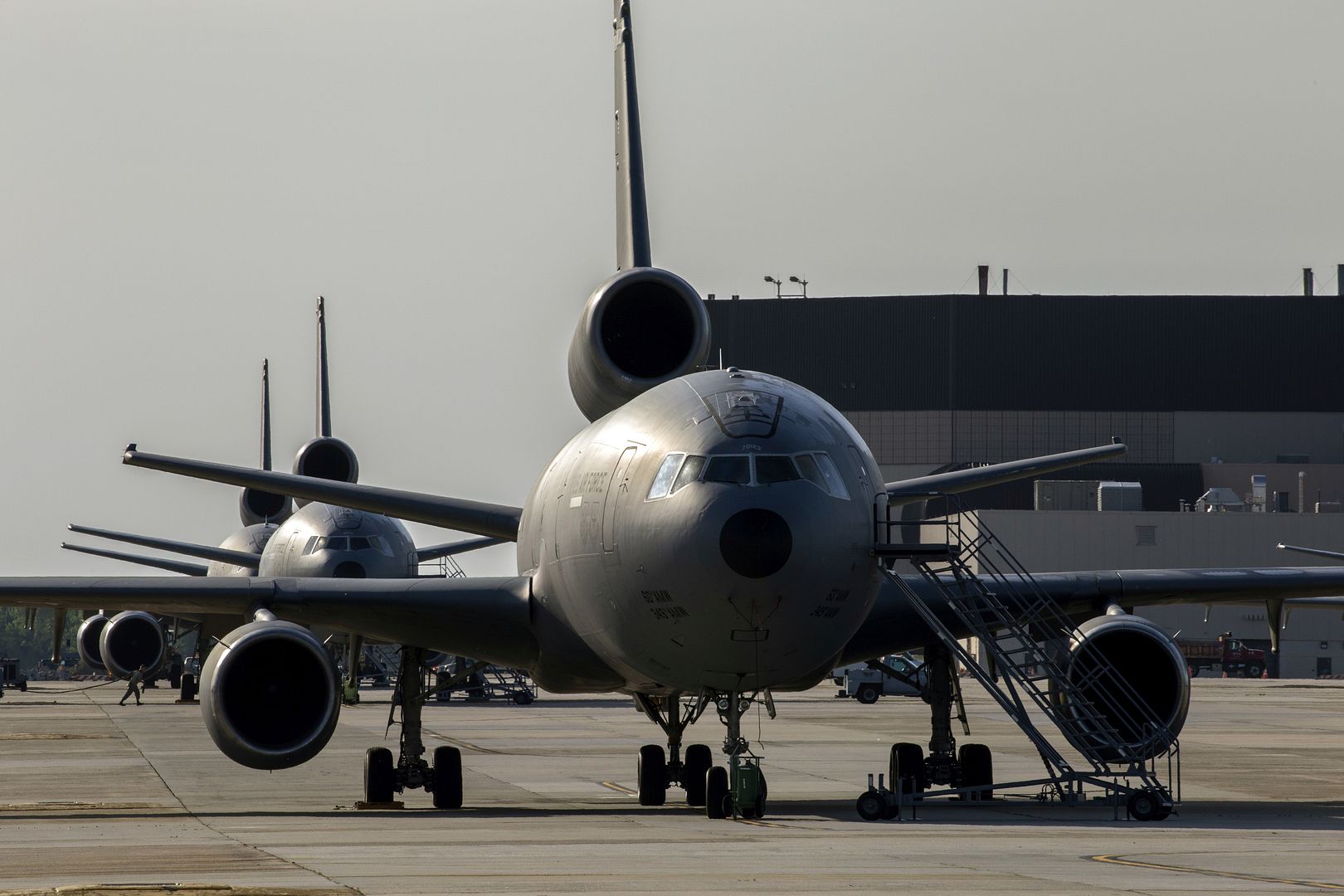
An F-15E Strike Eagle flies over the crowd during the Wings Over Wayne Air Show, May 21, 2017, at Seymour Johnson Air Force Base, North Carolina. Later this year, the 4th Fighter Wing will celebrate its 75th anniversary with a weekend of heritage events and ceremonies. (U.S. Air Force photo by Airman 1st Class Christopher Maldonado)
Solo pilots assigned to the U.S. Navy flight demonstration squadron, the Blue Angels, perform at the Wings Over Wayne Air Show. The Blue Angels are scheduled to perform more than 60 demonstrations across the U.S. in 2017. U.S. Navy photo by Mass Communication Specialist 2nd Class Ian Cotter (Released)
Personnel from RAF Marham's 12(B) Squadron arrived in Bod?, Norway via A400M yesterday for Arctic Challenge Exercise 17 - Europe's largest Air Power Exercise, which begins today.
Image by SAC Cath Sharples and SAC Nick Egan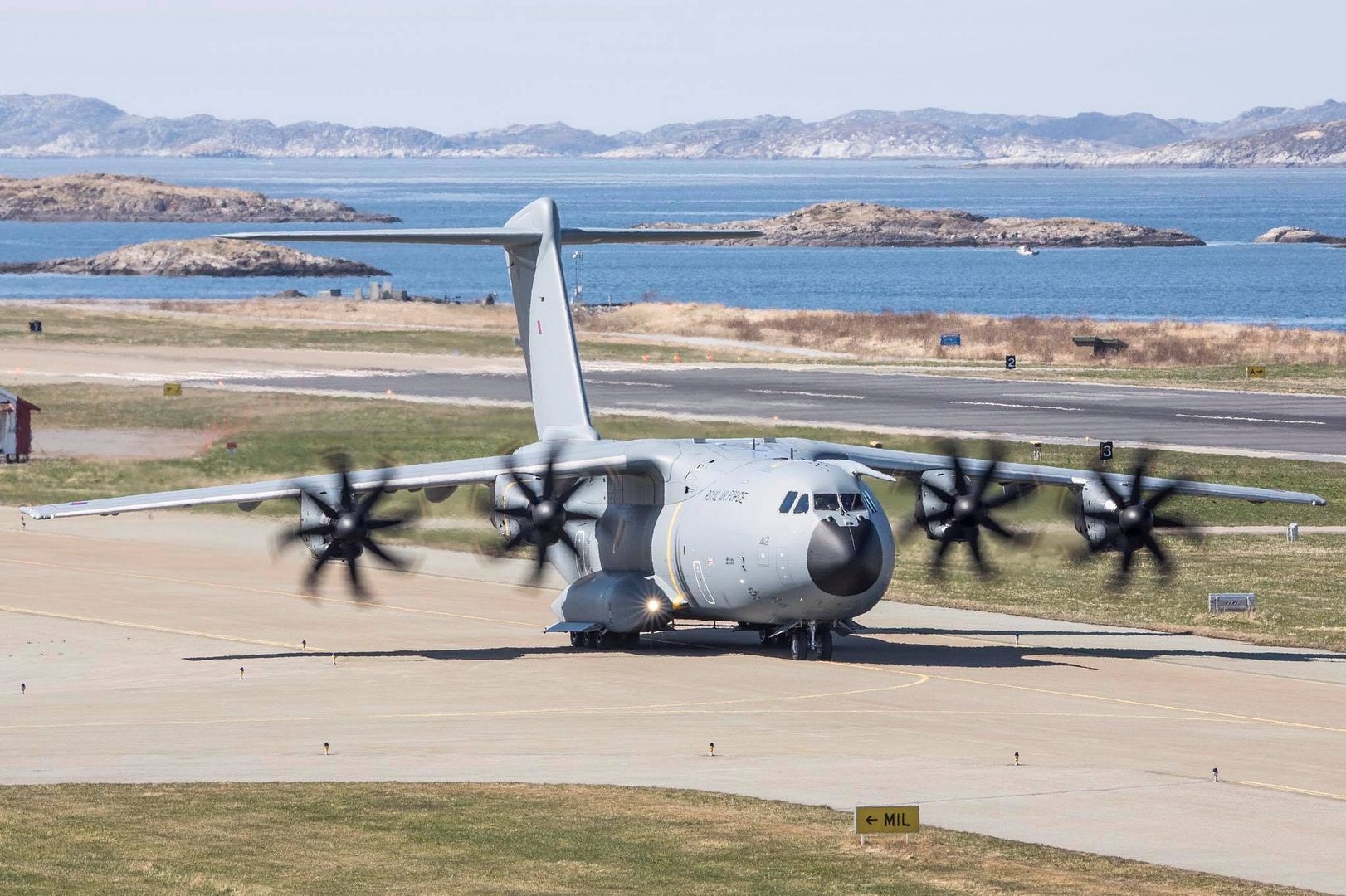
-
 Main AdminNEVATIM AIR BASE, Israel (AFNS) -- Two C-130J Super Hercules along with about 80 Airmen attached to the 86th Airlift Wing from Ramstein Air Base, Germany, deployed to Israel in support of exercise Juniper Falcon from May 7-18, 2017.
Main AdminNEVATIM AIR BASE, Israel (AFNS) -- Two C-130J Super Hercules along with about 80 Airmen attached to the 86th Airlift Wing from Ramstein Air Base, Germany, deployed to Israel in support of exercise Juniper Falcon from May 7-18, 2017.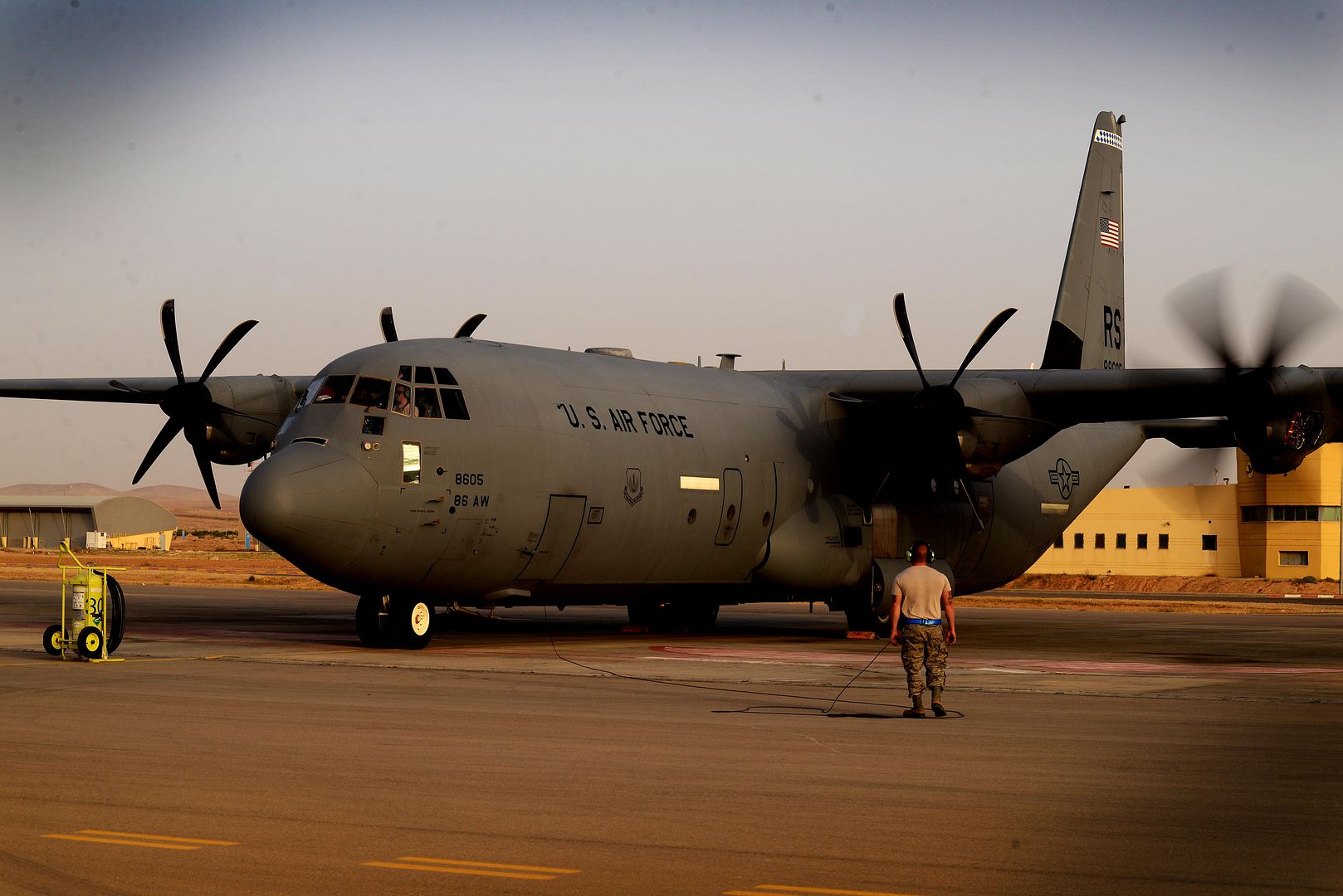
The 37th Airlift Squadron conducted airlift integration training with the Israeli Air Force. The integration was designed to build interoperability and maintain the enduring partnership between the U.S. and Israel, which has been developed during decades of cooperation.
"This is a great opportunity for us work with our Israeli partners to exchange ideas and concepts and the meaningful cultural aspect that comes with those discussions," said Maj. Libby Music, the 37th AS detachment commander.
The training sorties, which focused on bilateral air interoperability and joint service integration through low level flying, assault landing, and airdrop of cargo and personnel from the U.S. and host nation forces, gave the 37th AS pilots the chance to take part in flights unique to the region. The training also allowed them to become more familiar with the airspace and region that their Israeli partners are charged to defend.
"The biggest takeaway for us is the unique exchange of air tactics, drop zone and landing zone operations and maintenance procedures between our two militaries," said Capt. Wesley Dembek, the 37th AS deputy of operations. "This is also a great opportunity for us to train in an austere environment that challenges us to adapt and become more familiar with the region."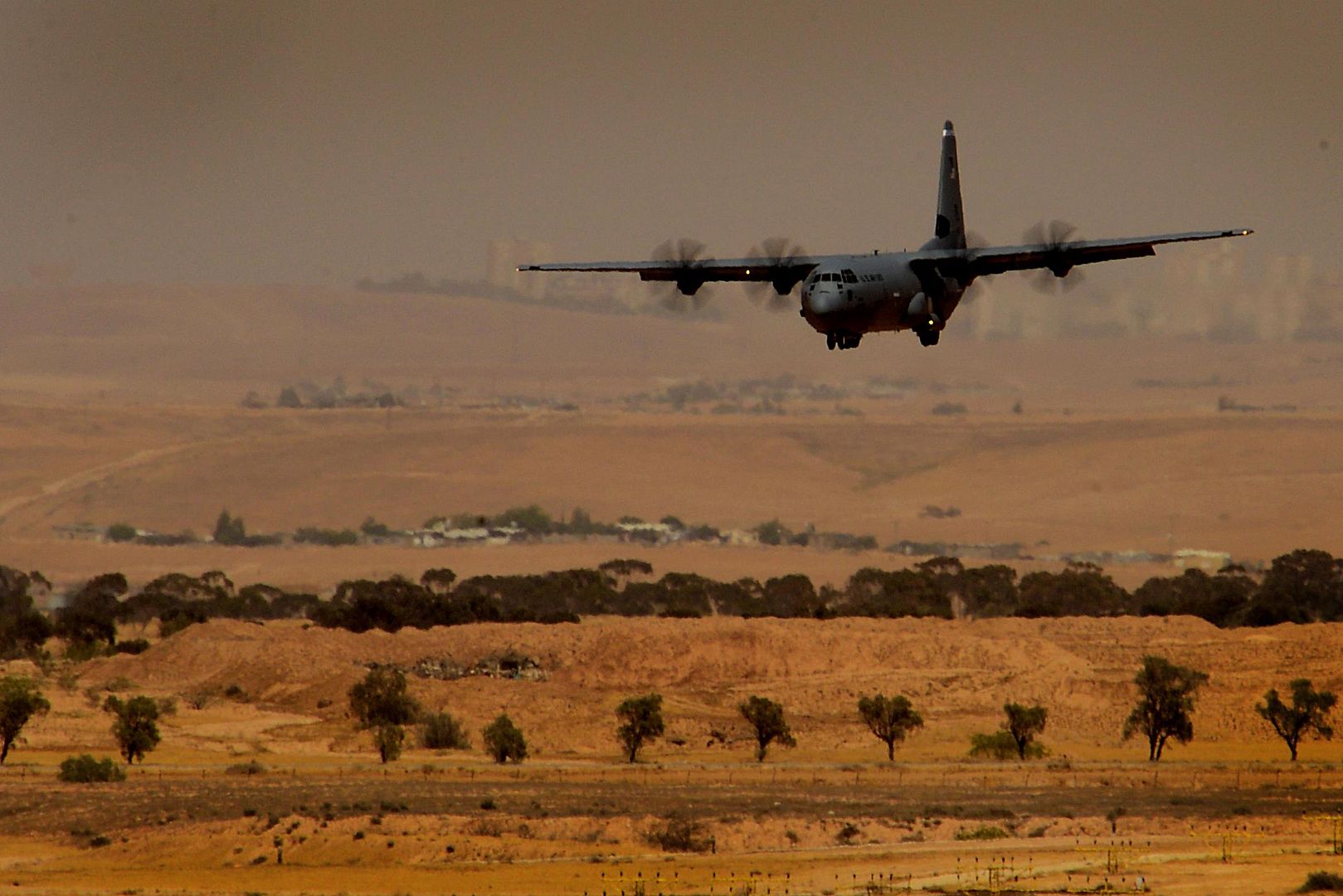
Juniper Falcon exercises that have been executed annually since 2011. The exercises were combined to increase joint training opportunities and capitalize on transportation and cost efficiencies gained by aggregating forces.
Juniper Falcon is one of many exercises completed between U.S. European Command and the IDF.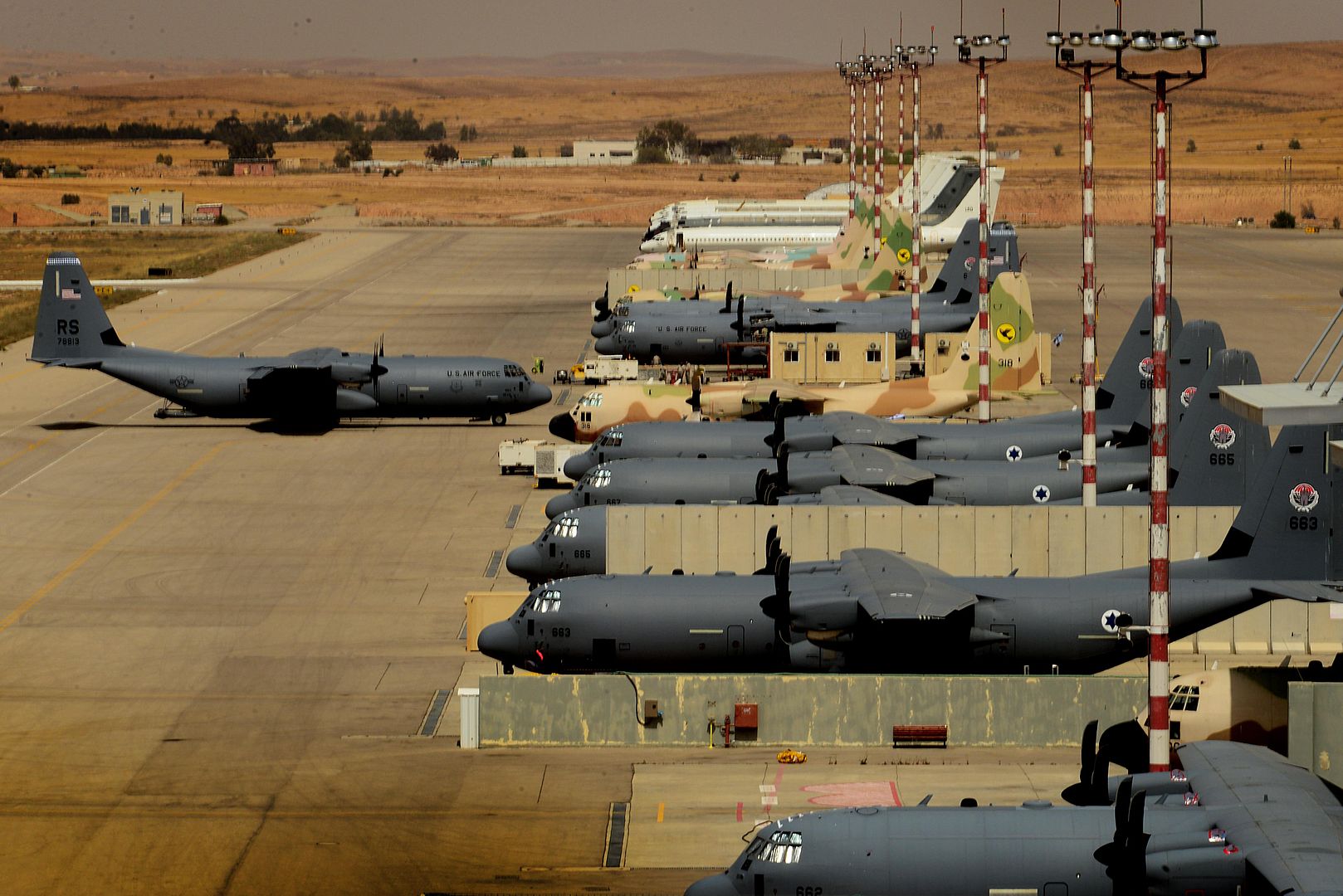
GOLDSBORO, N.C. (May 19, 2017) Cmdr. Frank Weisser, lead solo pilot assigned to the U.S. Navy flight demonstration squadron, the Blue Angels, flies over the Wings Over Wayne air show. The Blue Angels are scheduled to perform more than 60 demonstrations across the U.S. in 2017. (U.S. Navy photo by Mass Communication Specialist 2nd Class Ian Cotter/Released)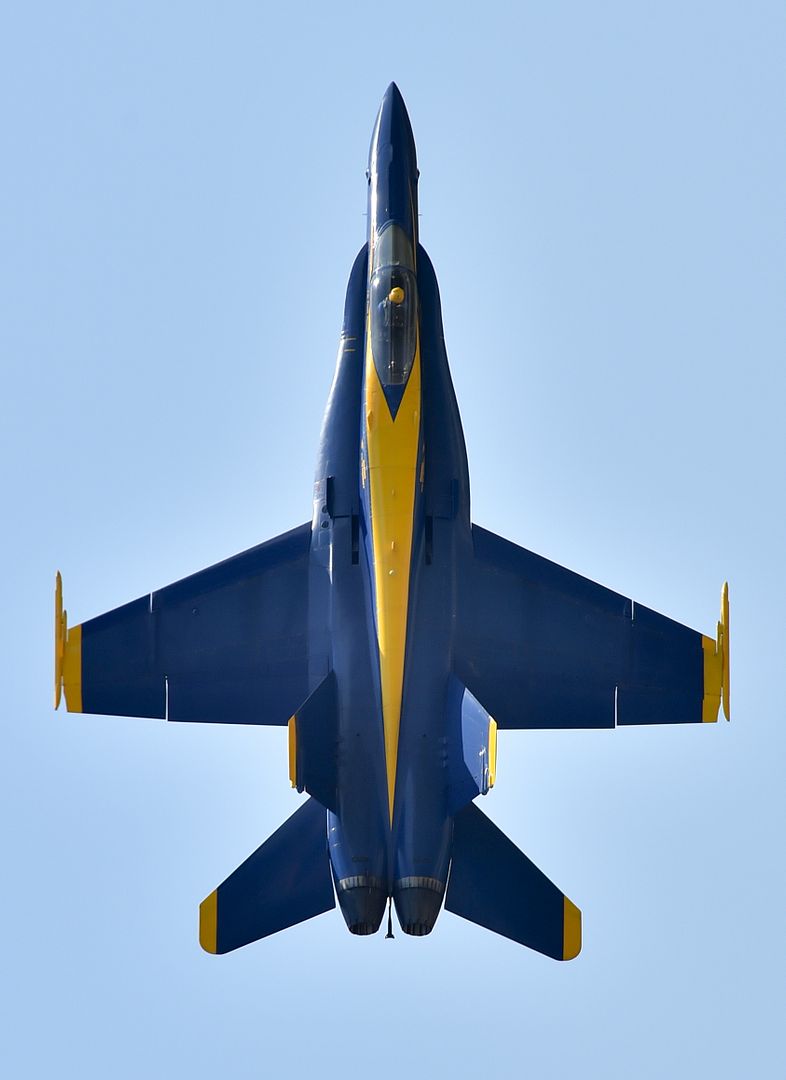
JACKSONVILLE, FLA., May 22, 2017 ? Boeing [NYSE: BA] will upgrade additional F/A-18 Hornet and Super Hornet fighters for the Navy and Marine Corps through a recently awarded $238 million contract extension.
The U.S. Department of Defense awarded this contract on May 5.
The work at the company?s Cecil Field facility will keep the aircraft modern and mission ready. It includes high flight-hour inspections, periodic maintenance inspections, in-service repair and modifications, upgrades and engineering.
?Our mission is to support the Navy?s effort to improve readiness,? said Boeing F/A-18 Sustainment program director Travis McBurnett. ?Since 1999, the Boeing Cecil Field team has returned 880 modified or repaired F/A-18s to the Navy and Marines. We look forward to delivering many more in the coming years.?
Switzerland, Geneva, May 22, 2017 ? Embraer announced today that Germany-based charter operator Air Hamburg is the launch customer for the new Legacy 650E. Air Hamburg will expand its Embraer business jet fleet with an additional order for three new Legacy 650E. The contract has a value of USD 77.7 million, based on current list prices, and will be included in the Company?s 2017 second-quarter backlog. The aircraft fleet delivery is scheduled for the third quarter of this year. The agreement was announced on the opening day of the 17th European Business Aviation Convention and Exhibition (EBACE) in Geneva, Switzerland.
?We are very pleased with this new order from Air Hamburg, which will further propel their growth through exceptional operational costs and a superior customer experience with the Legacy 650E?s unique three-zone cabin and abundance of amenities,? said Michael Amalfitano, President & CEO, Embraer Executive Jets. ?The Legacy 650E?s unmatched value proposition results in the productivity and efficiency sought by global charter operators and corporate flight departments.?
Embraer has witnessed a growing interest in the Legacy 650E by charter operators. As one of Europe?s largest business jet service providers, Air Hamburg added one Legacy 500 as well as one Phenom 300 to their fleet, earlier this year, totaling 11 Embraer aircraft, with eight Legacy 600/650, one Legacy 500 and two Phenom 300.
?The Legacy 650E is an obvious choice, considering the unparalleled experience that our current fleet of Legacy 600/650 already provides our customers on their flights to destinations throughout Europe, Russia, and the Middle East,? said Simon Ebert, Partner, Air Hamburg. ?The new version of this proven platform best serves our growth plan by continuing to offer a premium charter service with the latest technologies onboard one of the industry?s most comfortable and reliable business jets.?
Featuring three distinct cabin zones, with the largest cabin and baggage compartment in its class, the Legacy 650E also carries an unprecedented 10-year or 10,000-flight-hour warranty, which is the longest in the business jet industry.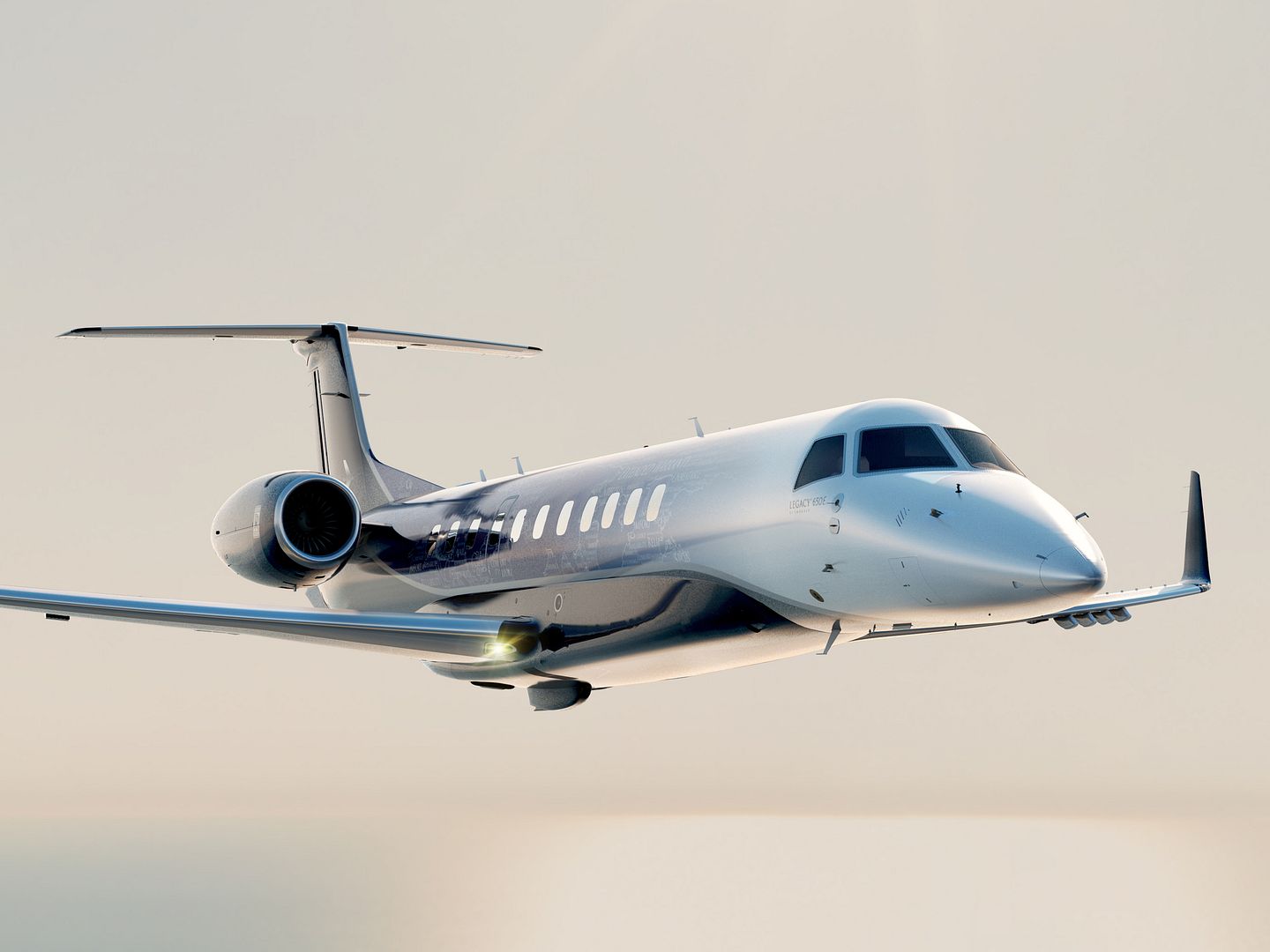
Arctic Challenge Exercise 17 kicked off yesterday, with RAF Tornados taking part in missions over northern Scandinavia.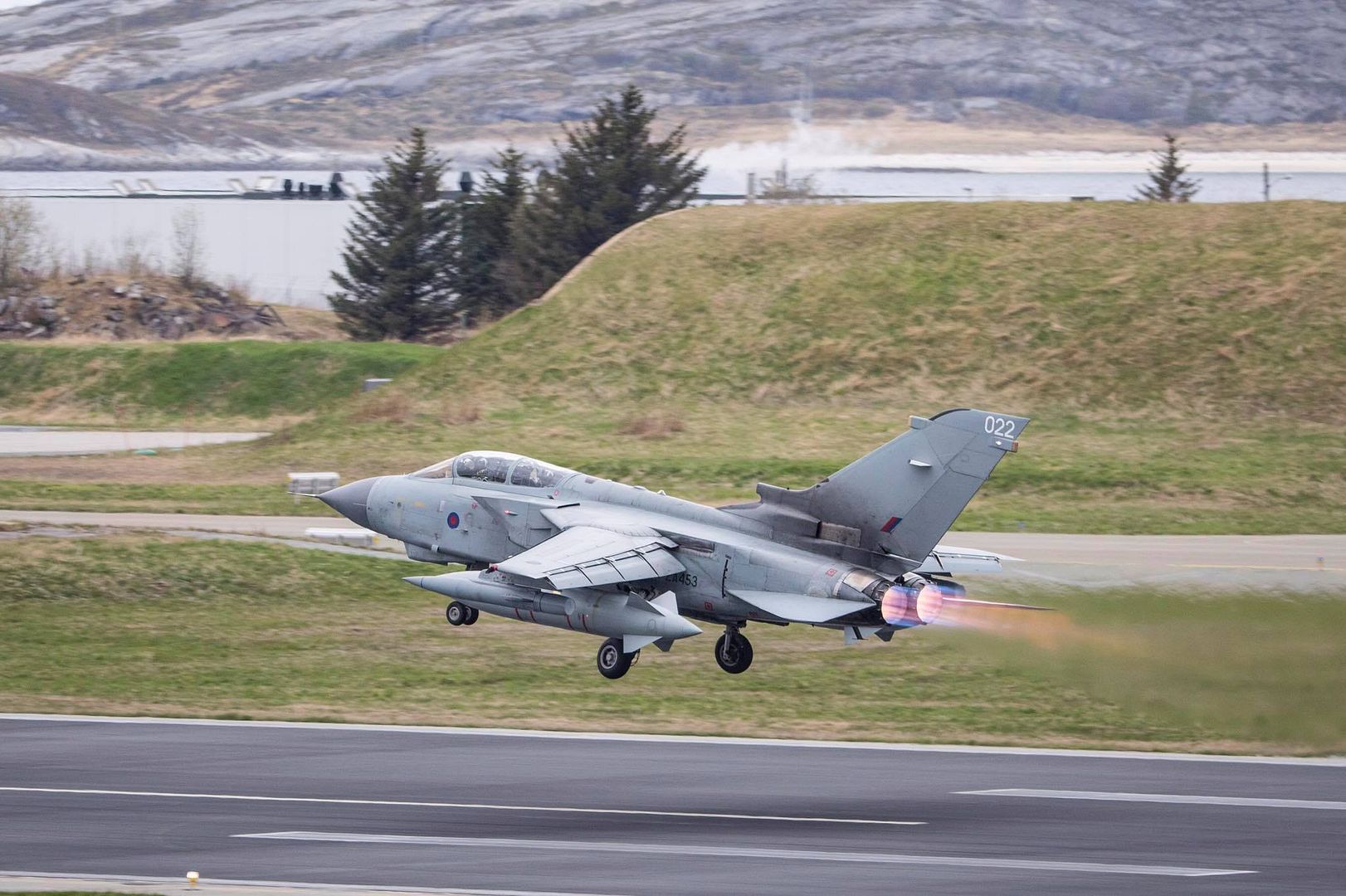
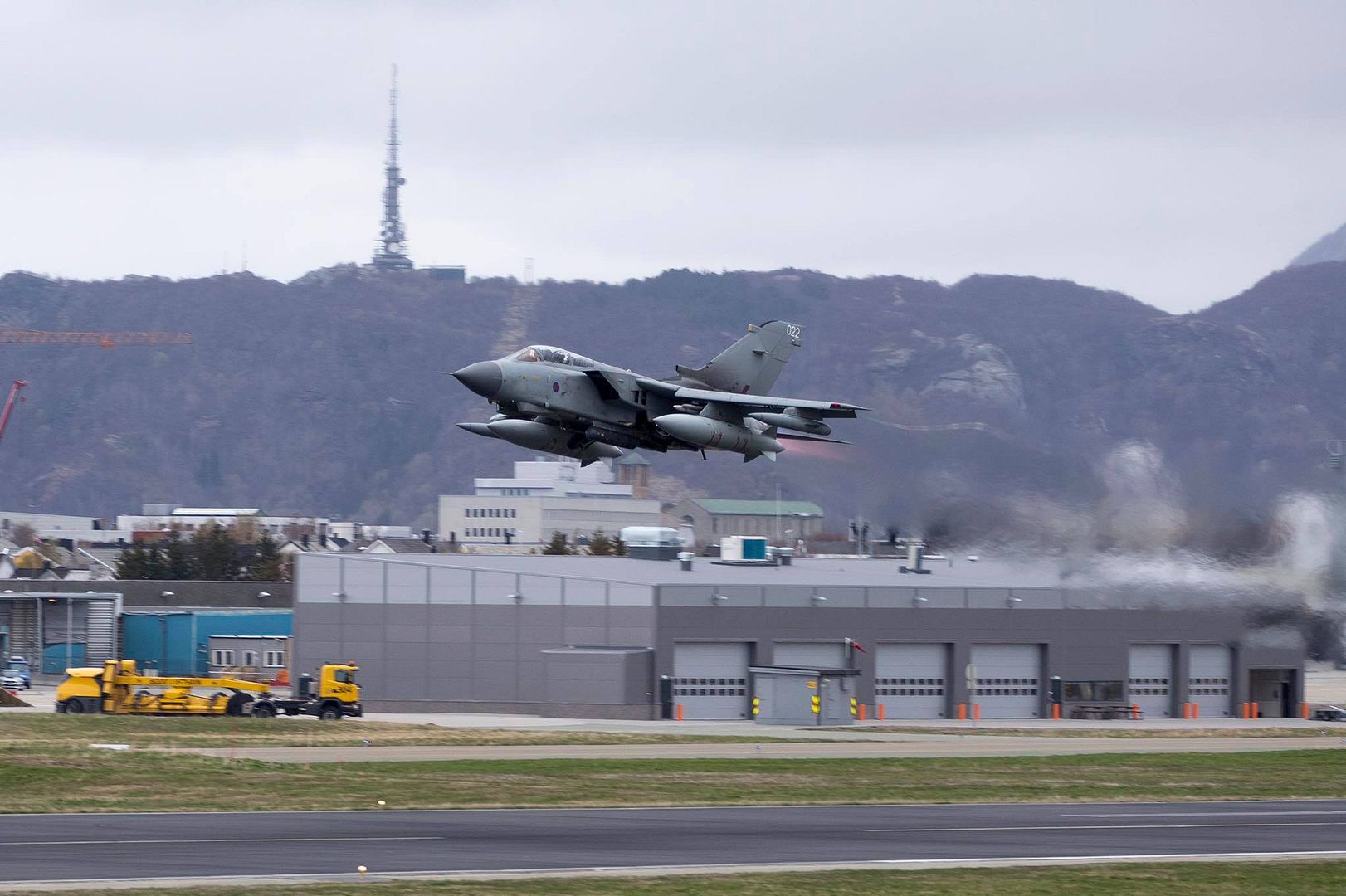
ACE, Europe's largest air power exercise, involves more than 100 aircraft and over 1000 personnel this year, with participating nations operating from Bod? (Norway), Lule? (Sweden) and Rovaniemi (Finland)..
Images by SAC Cath Sharples and SAC Nick Egan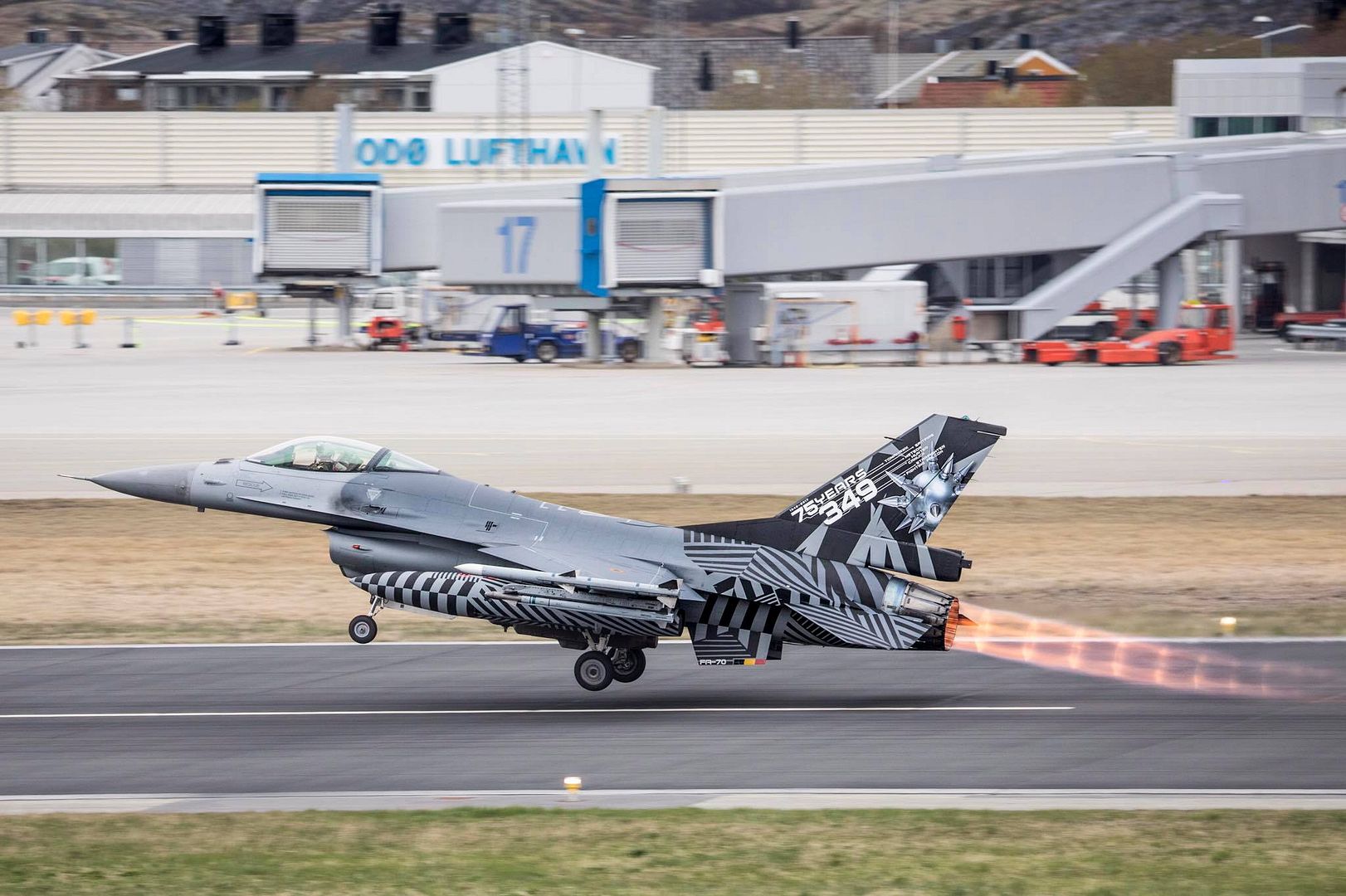
-
 Main AdminA U.S. Air Force F-15C Fighting Eagle with the 67th Fighter Squadron conducts flight operations during exercise Distant Frontier on Joint Base Elmendorf-Richardson, Alaska, May 24, 2017. Distant Frontier is a unit-level training iteration designed to sharpen participants' tactical combat skills and develop interoperable plans and programs across the joint force. (U.S. Marine Corps Photo's by Lance Cpl. Jacob A. Farbo)
Main AdminA U.S. Air Force F-15C Fighting Eagle with the 67th Fighter Squadron conducts flight operations during exercise Distant Frontier on Joint Base Elmendorf-Richardson, Alaska, May 24, 2017. Distant Frontier is a unit-level training iteration designed to sharpen participants' tactical combat skills and develop interoperable plans and programs across the joint force. (U.S. Marine Corps Photo's by Lance Cpl. Jacob A. Farbo)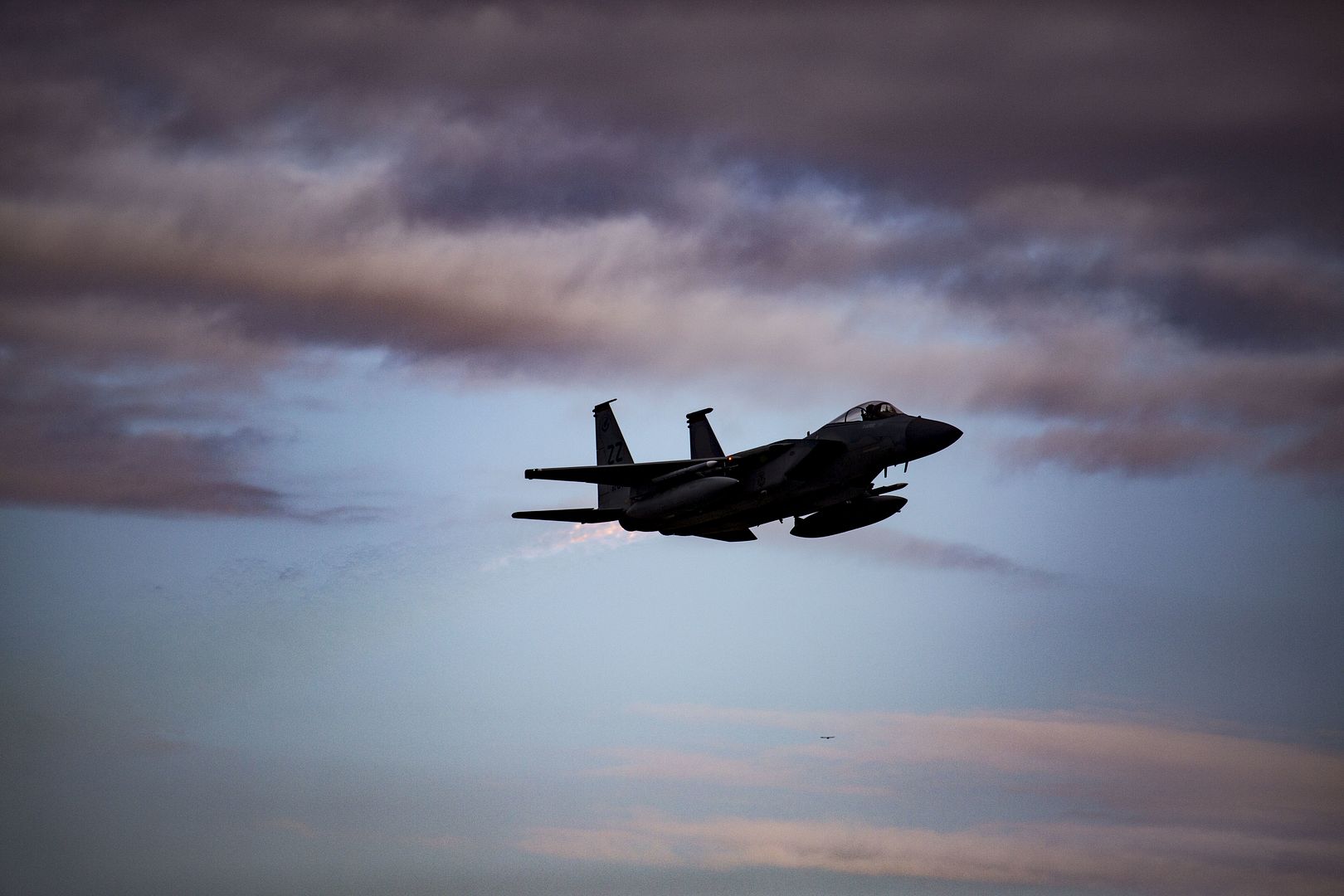

A U.S. Air Force 3rd Wing F-22 Raptor conducts flight operations during exercise Distant Frontier on Joint Base Elmendorf-Richardson, Alaska, May 24, 2017. Distant Frontier is a unit-level training iteration designed to sharpen participants' tactical combat skills and develop interoperable plans and programs across the joint force. (U.S. Marine Corps Photo by Lance Cpl. Jacob A. Farbo)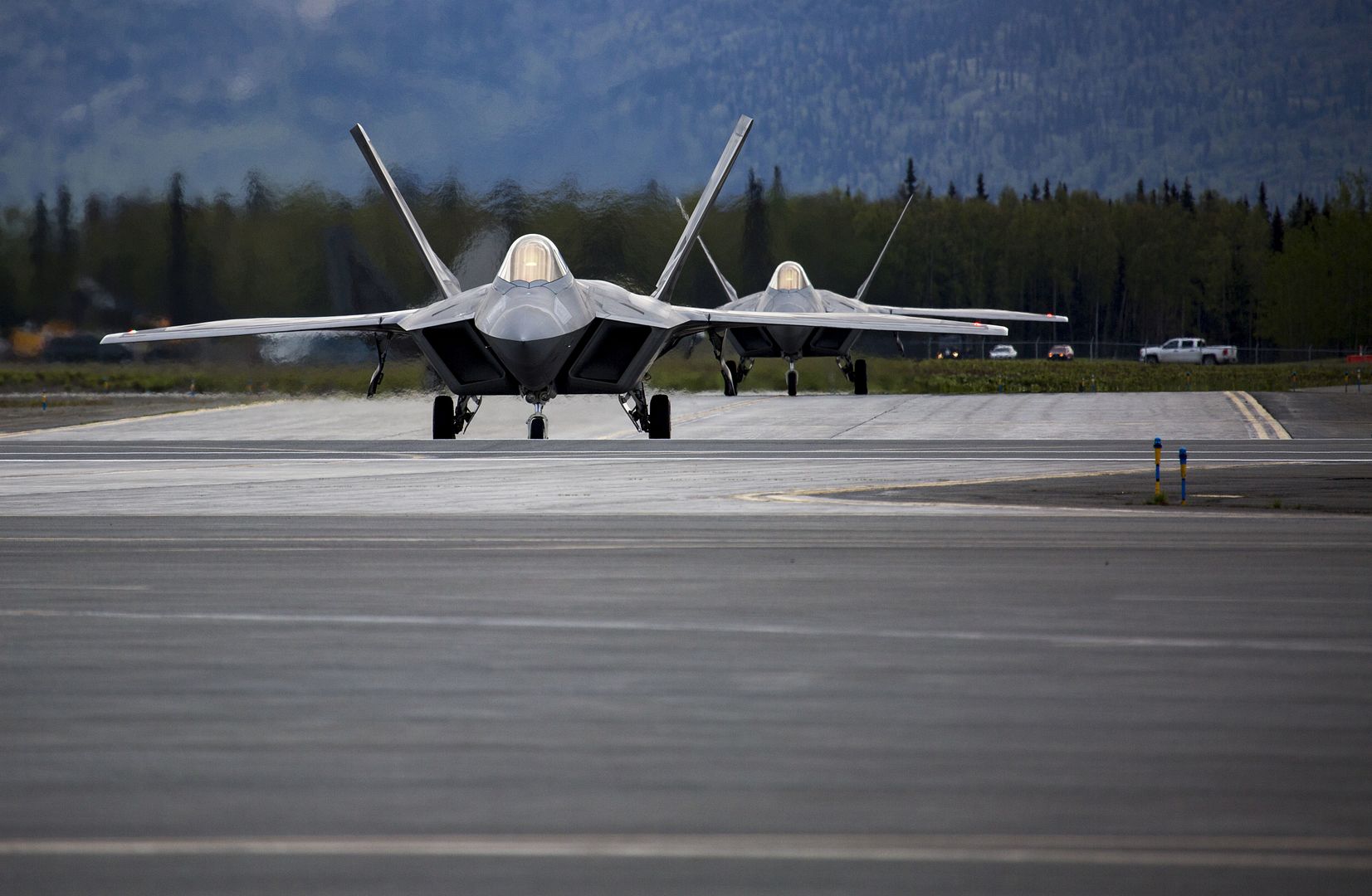
A U.S. Marine Corps F/A-18C Hornet with Marine Fighter Attack Squadron (VMFA) 232 takes off at Joint Base Elmendorf-Richardson, Alaska, May 24, 2017. VMFA 232 is participating in exercise Distant Frontier, which is a unit-level training iteration designed to sharpen participants' tactical combat skills and develop interoperable plans and programs across the joint force. (U.S. Marine Corps Photo's by 1st Lt. Melissa M. Heisterberg)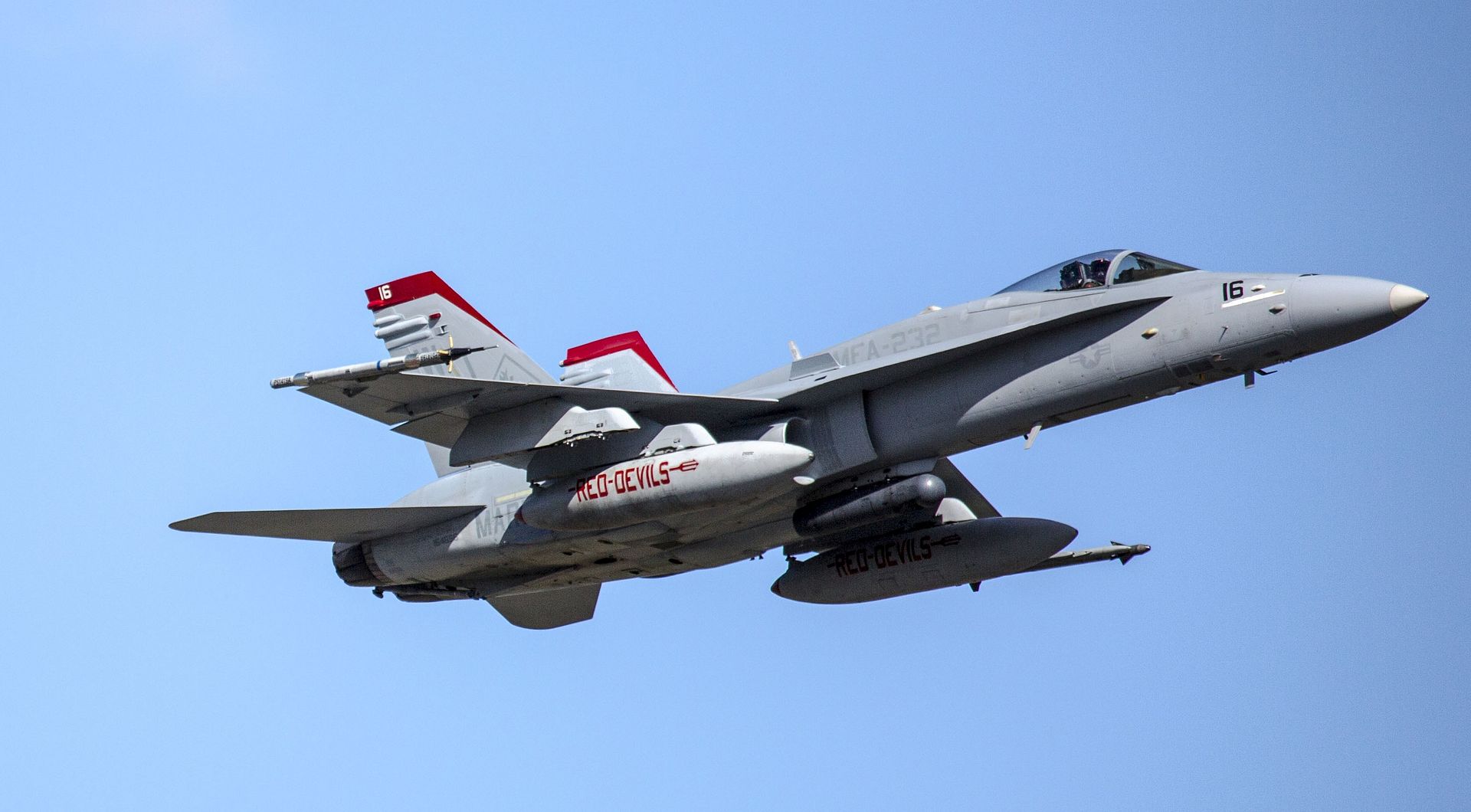
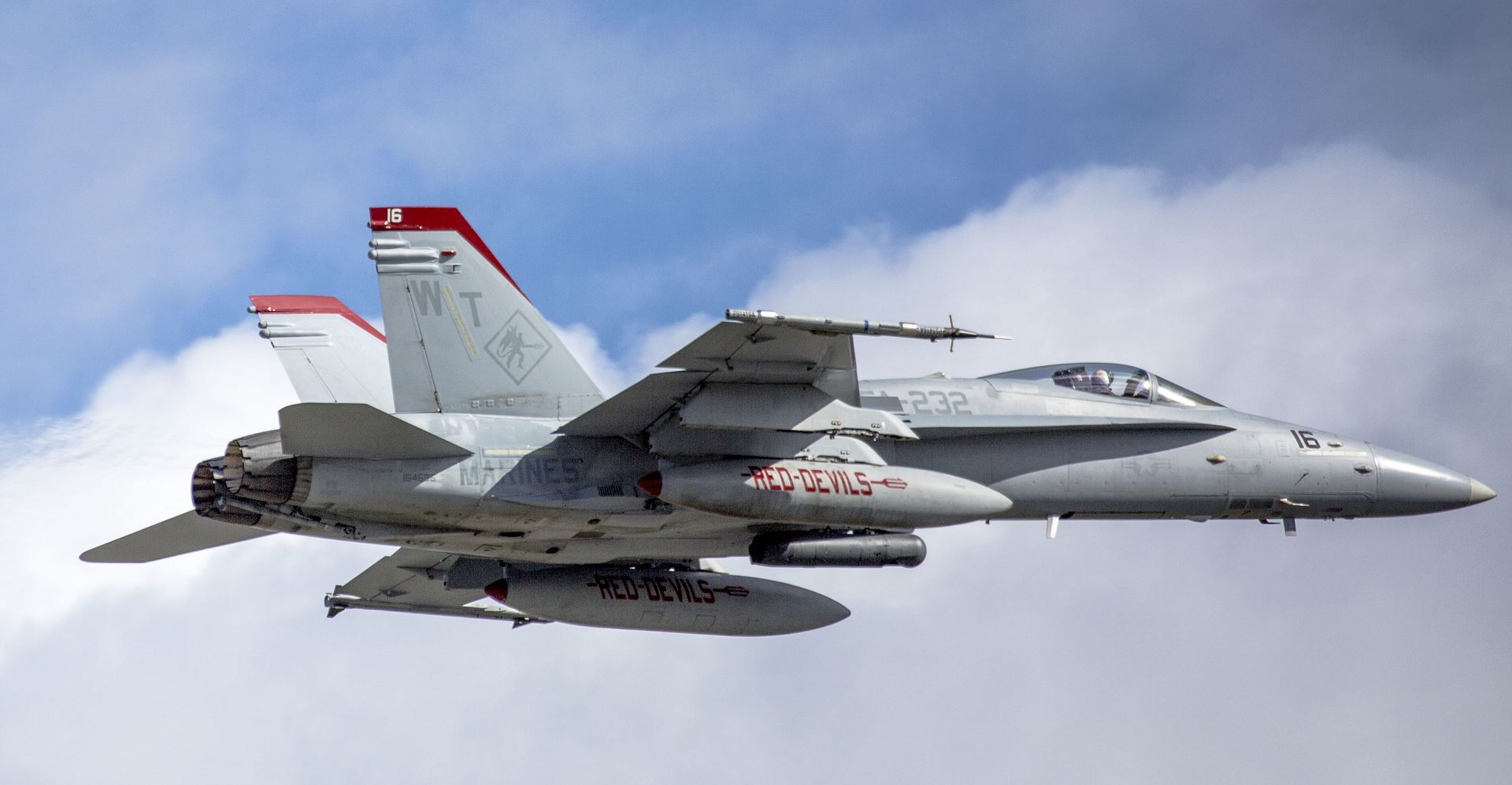
In the early morning hours of May 24, an RQ-4 Global Hawk landed at Robins Air Force Base. Aircraft routinely fly to Robins but this was the first one to land without a pilot onboard. To prepare for its arrival a building-based launch and recovery element was established. Robins maintenance professionals will provide an organic paint capability during the aircraft's stay here. (U.S. Air Force photos by Tommie Horton)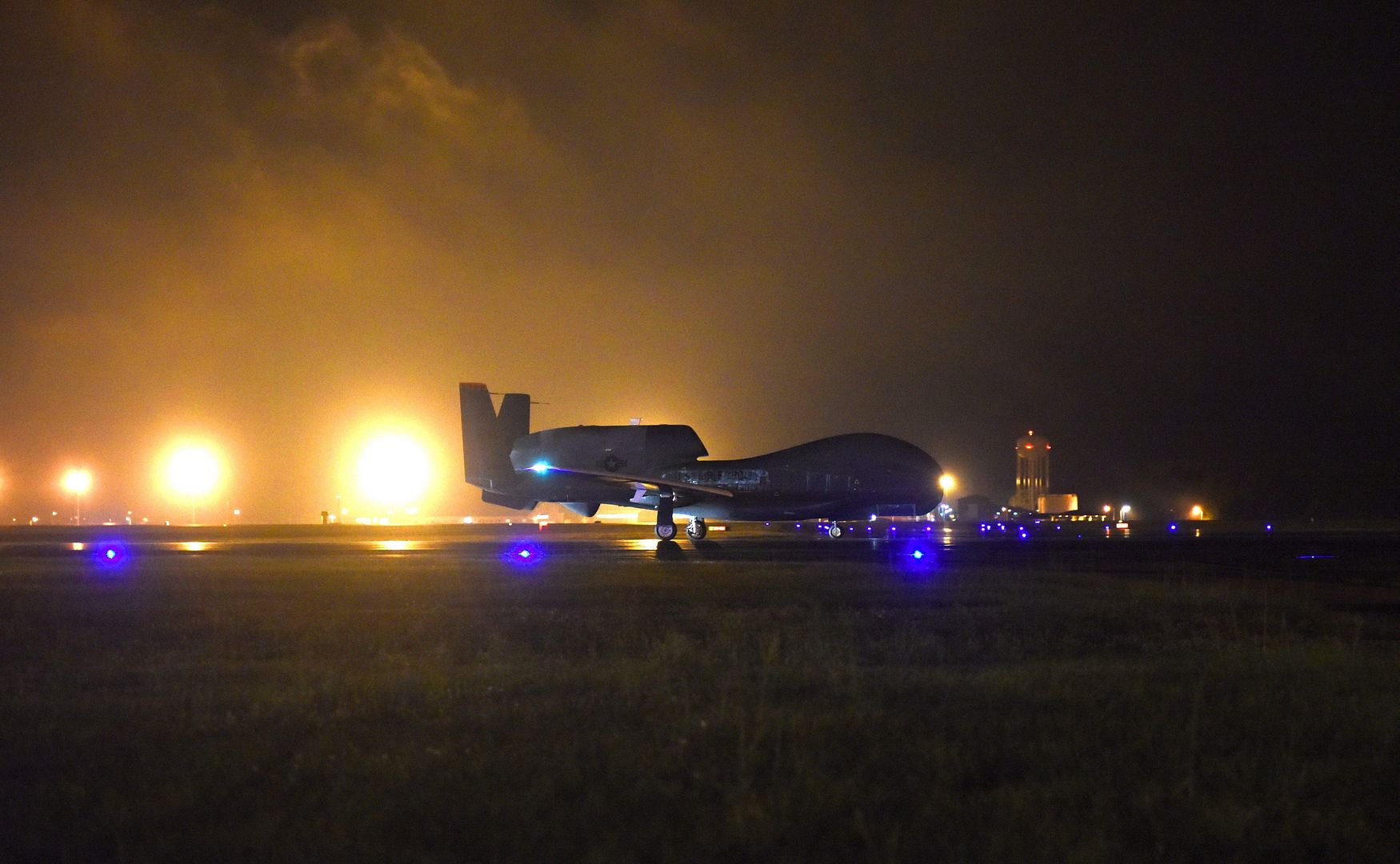

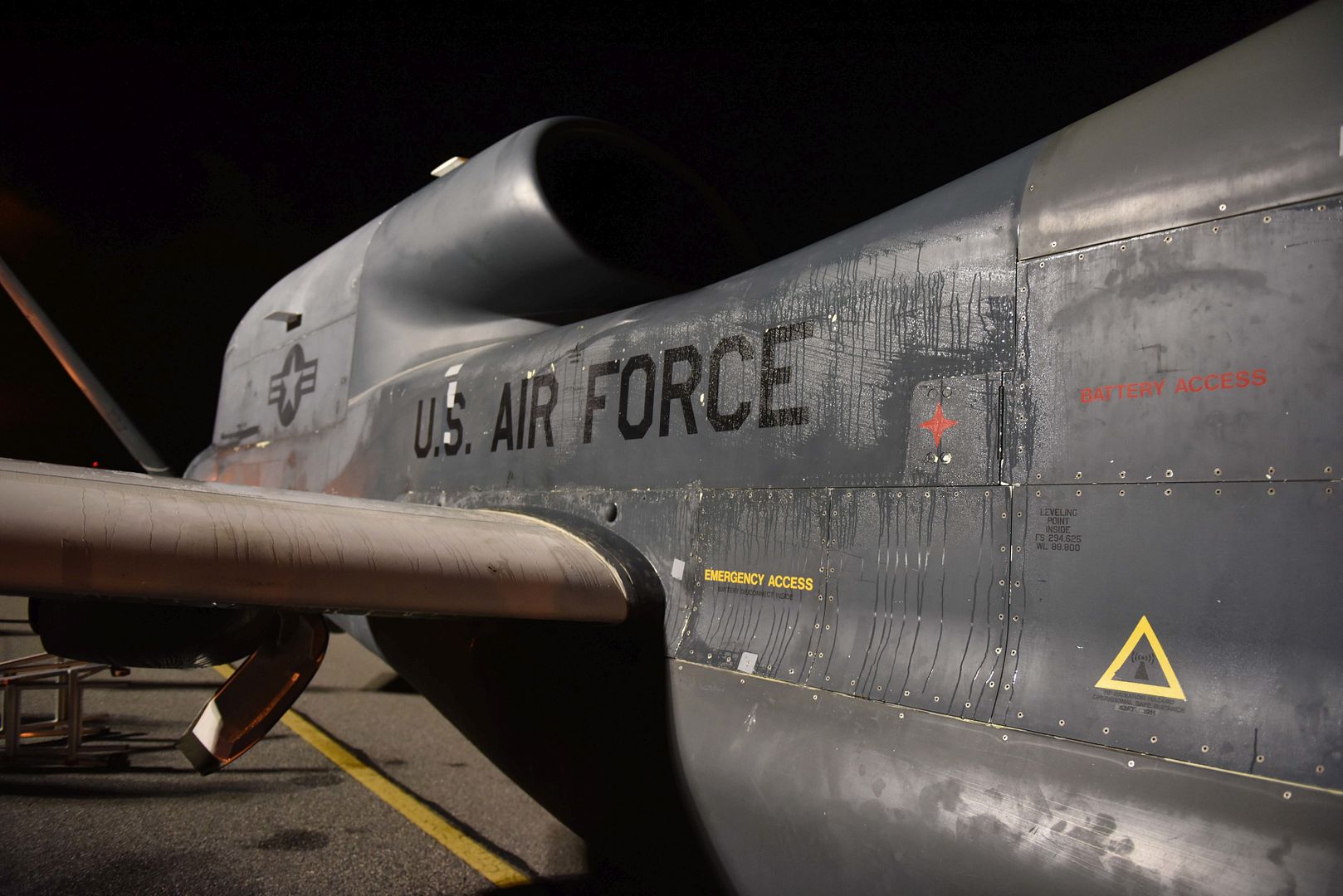
EIELSON AIR FORCE BASE, Alaska -- With a backdrop of blue skies and miles of mountain ranges, Misawa maintainers and pilots walk the flight line of Eielson Air Force Base, Alaska, with a crucial mindset and mission in hand--fight tonight.
In efforts to prepare 35th Fighter Wing pilots and maintainers for RED FLAG and real-world scenarios, Airmen began live ammunition training during Distant Frontier, May 15 to 26.
?We take advantage of Distant Frontier as an opportunity to practice various skillsets, like low level flying, basic service attacks and close air support,? said Capt. Benjamin Walters a 13th Fighter Squadron F-16 Fighting Falcon pilot. ?This is something we don?t get at home due to air space restrictions.?
For Misawa maintainers, specifically weapons Airmen, DF is an opportunity to work and load live ammunitions and ensure weapons systems work properly.
?Our Airmen are getting the experience of loading live weapons and doing post-load inspections for a live weapons fire,? said Senior Master Sgt. David Allshouse, the 13th Aircraft Maintenance Unit superintendent. ?Our goal is to meet every sortie and never see a live weapon come back because of a maintenance malfunction.?
Honing these skills and maintaining proficiency is crucial for pilots and their maintainer counterparts throughout the Indo-Asia-Pacific region. It is one way Wild Weasels promote security cooperation with allies--deterring aggression and being ready to fight tonight when called upon.
?You need to have a very inherent ability to employ ordnances and you don?t want those skills to atrophy because they are foundational to how we fly,? explains Walters. ?There are a lot of things going on within the Pacific theater and we can be called on at any time to do our job; we need to be ready.?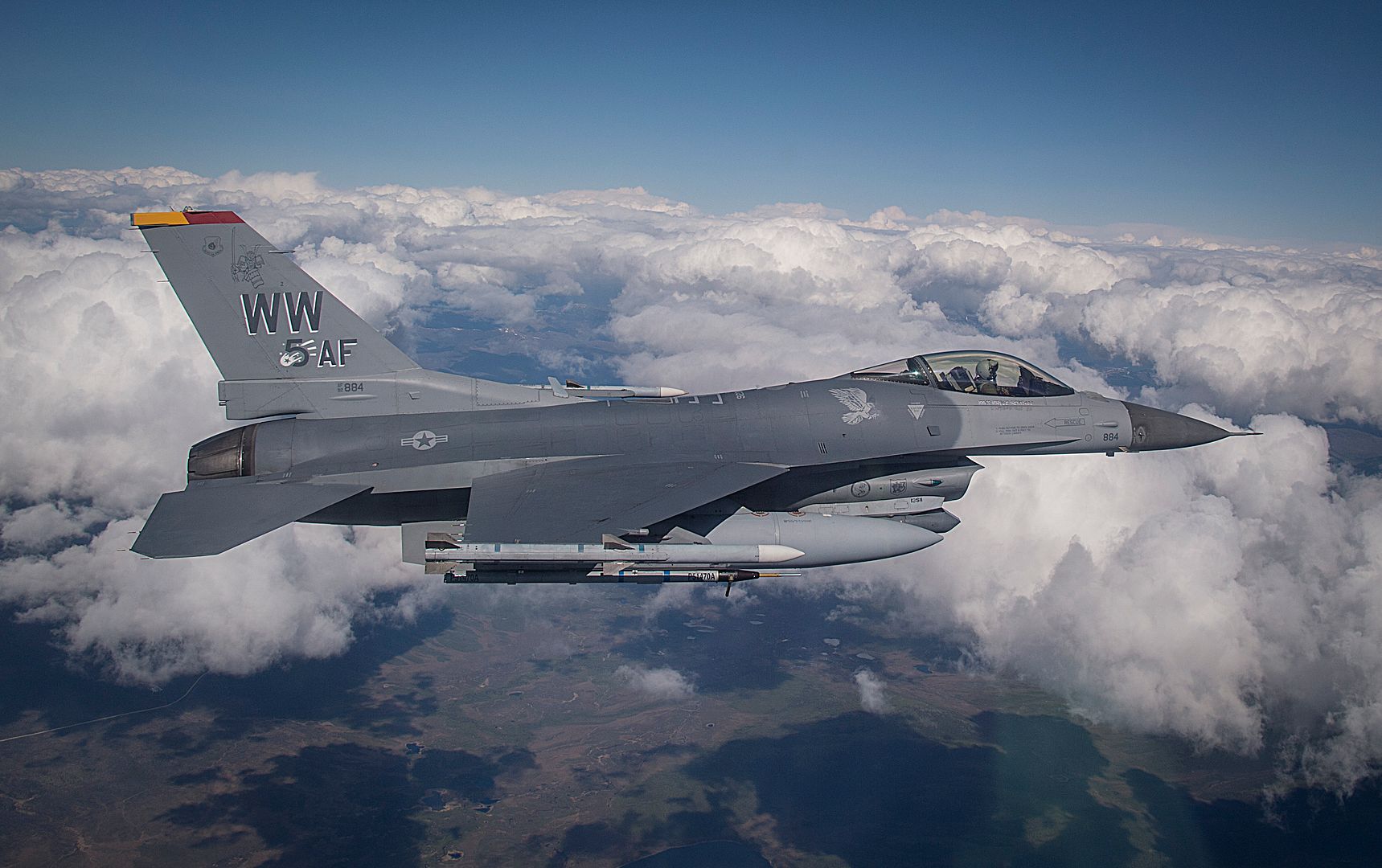
OKLAHOMA CITY, May 23, 2017 ? Boeing [NYSE: BA] has completed a series of upgrades that substantially enhance the technological capabilities of Saudi Arabia?s E-3A Airborne Warning and Control System (AWACS) aircraft.
Among the enhancements to improve radar capabilities and reduce repair time for the airborne surveillance fleet are systems that increase the original equipment?s radar sensitivity and expand the range for tracking targets.
The upgrades, called the Radar System Improvement Program (RSIP), comprise a new radar computer, a radar control maintenance panel and electrical and mechanical software and hardware.
"The AWACS?s main mission is to provide real-time situation awareness, and our teams have stayed true to that mission,? said Keith Burns, Saudi AWACS programs manager for Boeing. ?The modernized software, multiple radar nodes and overall enhanced operation make this is the most significant upgrade to the AWACS radar since it was developed in the 1970s.?
Boeing engineers and technicians performed the installation and checkout of the first upgraded aircraft at Boeing Field in Seattle. The remaining aircraft were modified at Alsalam Aerospace Industries in Riyadh, Saudi Arabia, with support of Boeing engineers, technicians and a test and evaluation team.
The RSIP kit is built by Northrop Grumman Electronic Systems and has been installed on United States, United Kingdom, NATO and French AWACS fleets.
Boeing delivered Saudi Arabia's AWACS aircraft between June 1986 and September 1987.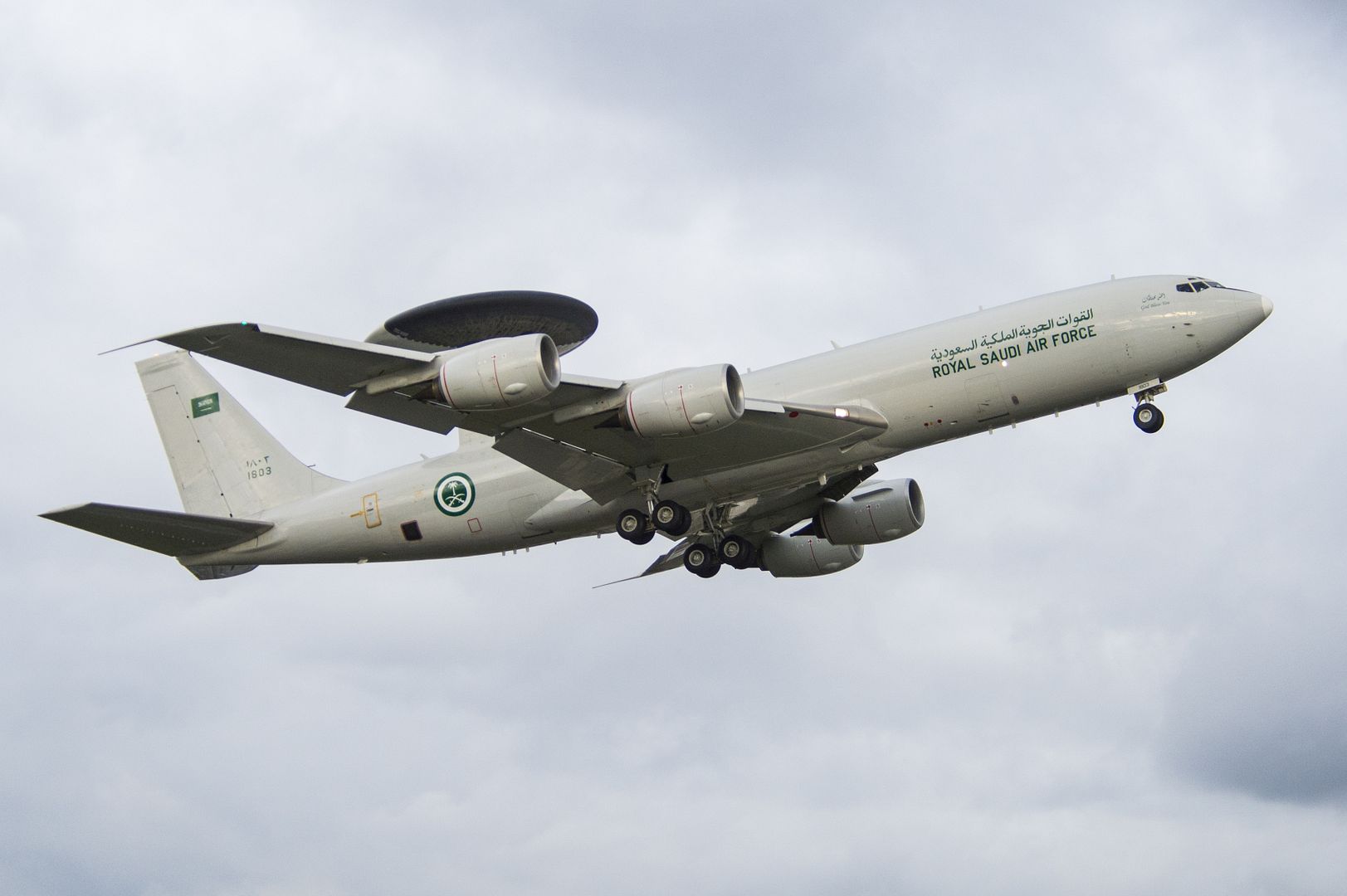
24 May 2017 Press Release
The wing-fuselage junction, the installation of the tailplane and also the tailcone have been completed. The aircraft is in the next assembly station for structural completion such as the installation of winglets, ground testing of mechanical, electrical and avionics systems. Next steps will include in particular cabin completion, engine installation, painting and flight tests. This will lead to the delivery scheduled in Q4 2017, of the first A350-900 to Air Mauritius.
Air Mauritius will acquire a total of six A350-900 twin engine widebodies comprising four directly purchased from Airbus and two on lease from AerCap. At entry into service, the A350 XWB will be deployed on the carrier's long-haul, mainly the Mauritius-Paris route. Air Mauritius currently operates a fleet of 13 aircraft of which 10 Airbus aircraft including six A340-300, two A330-200 and two A319 on regional and long haul services.
The A350 XWB features the latest aerodynamic design, carbon fiber fuselage and wings, plus new fuel-efficient Rolls-Royce engines. Together, these latest technologies translate into unrivalled levels of operational efficiency, with a 25 per cent reduction in fuel burn and emissions, and significantly lower maintenance costs. The spaciousness, quietness, beautiful interior and mood lighting in the cabin contribute to superior levels of comfort and well-being, setting new standards in terms of flight experience for all passengers.
To date, Airbus has recorded a total of 831 firm orders for the A350 XWB from 44 customers worldwide, already making it one of the most successful widebody aircraft ever.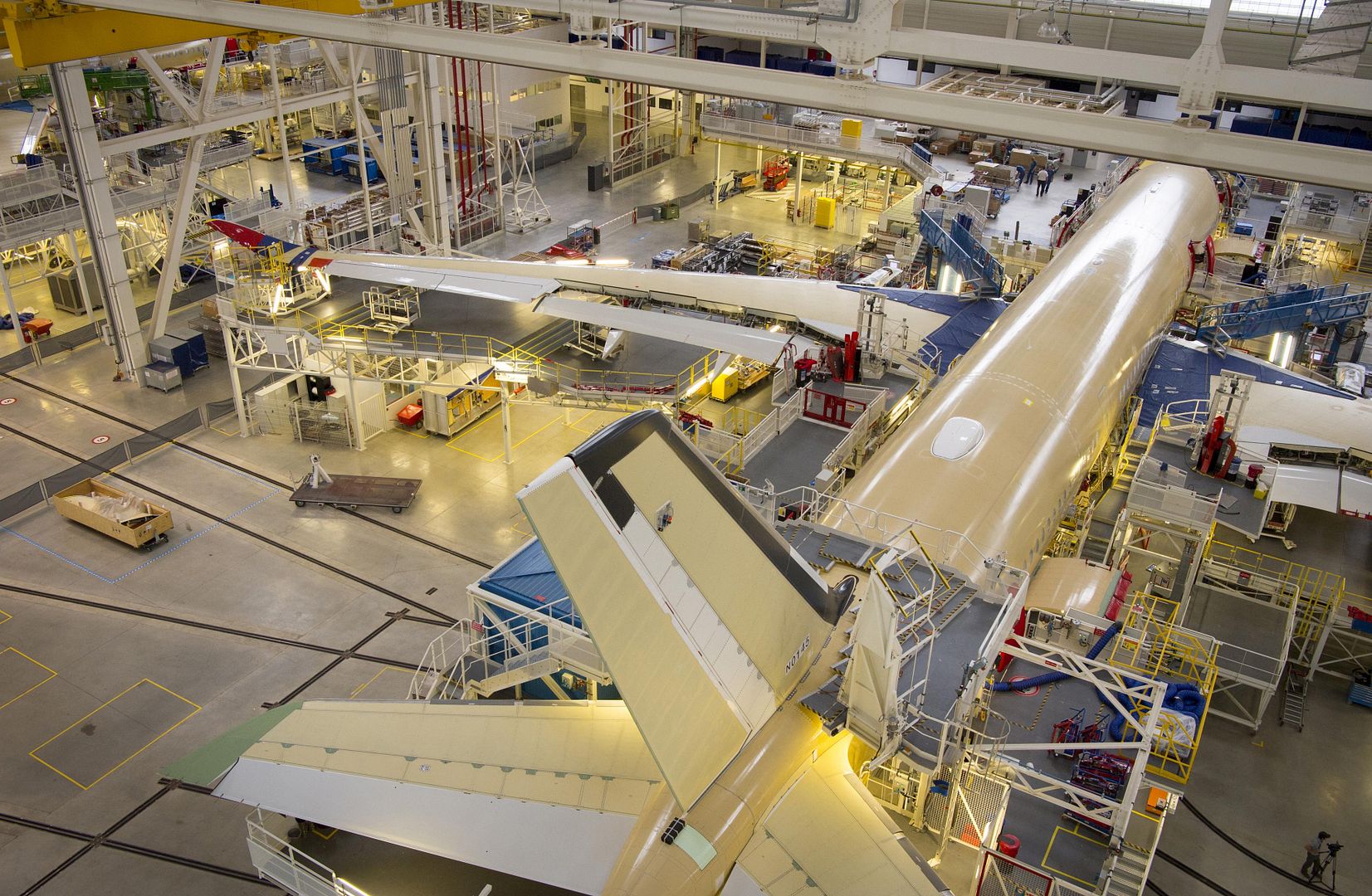
-
 Main AdminWATERS SOUTH OF JAPAN (May 22, 2017) An MH-60S Sea Hawk helicopter assigned to the "Golden Falcons" of Helicopter Sea Combat Squadron (HSC) 12, flies alongside the aircraft carrier USS Ronald Reagan (CVN 76) in the waters south of Japan. Ronald Reagan is the flagship of Carrier Strike Group 5, providing a combat-ready force that protects and defends the collective maritime interests of its allies and partners in the Indo-Asia-Pacific region. (U.S. Navy photo by Mass Communications Specialist 2nd Class Nathan Burke/Released)
Main AdminWATERS SOUTH OF JAPAN (May 22, 2017) An MH-60S Sea Hawk helicopter assigned to the "Golden Falcons" of Helicopter Sea Combat Squadron (HSC) 12, flies alongside the aircraft carrier USS Ronald Reagan (CVN 76) in the waters south of Japan. Ronald Reagan is the flagship of Carrier Strike Group 5, providing a combat-ready force that protects and defends the collective maritime interests of its allies and partners in the Indo-Asia-Pacific region. (U.S. Navy photo by Mass Communications Specialist 2nd Class Nathan Burke/Released)
OAK HARBOR, Wash. (May 22, 2017) A P-8A Poseidon assigned to the "Skinny Dragons" of Patrol Squadron (VP) 4 flies near Mount Baker during a training exercise. VP-4 is stationed at Naval Air Station Whidbey Island, Calif., and became the first P-8 squadron on the west coast following a successful transition from the P-3C Orion aircraft. (U.S. Navy photo by Mass Communication Specialist 3rd Class Juan S. Sua/Released)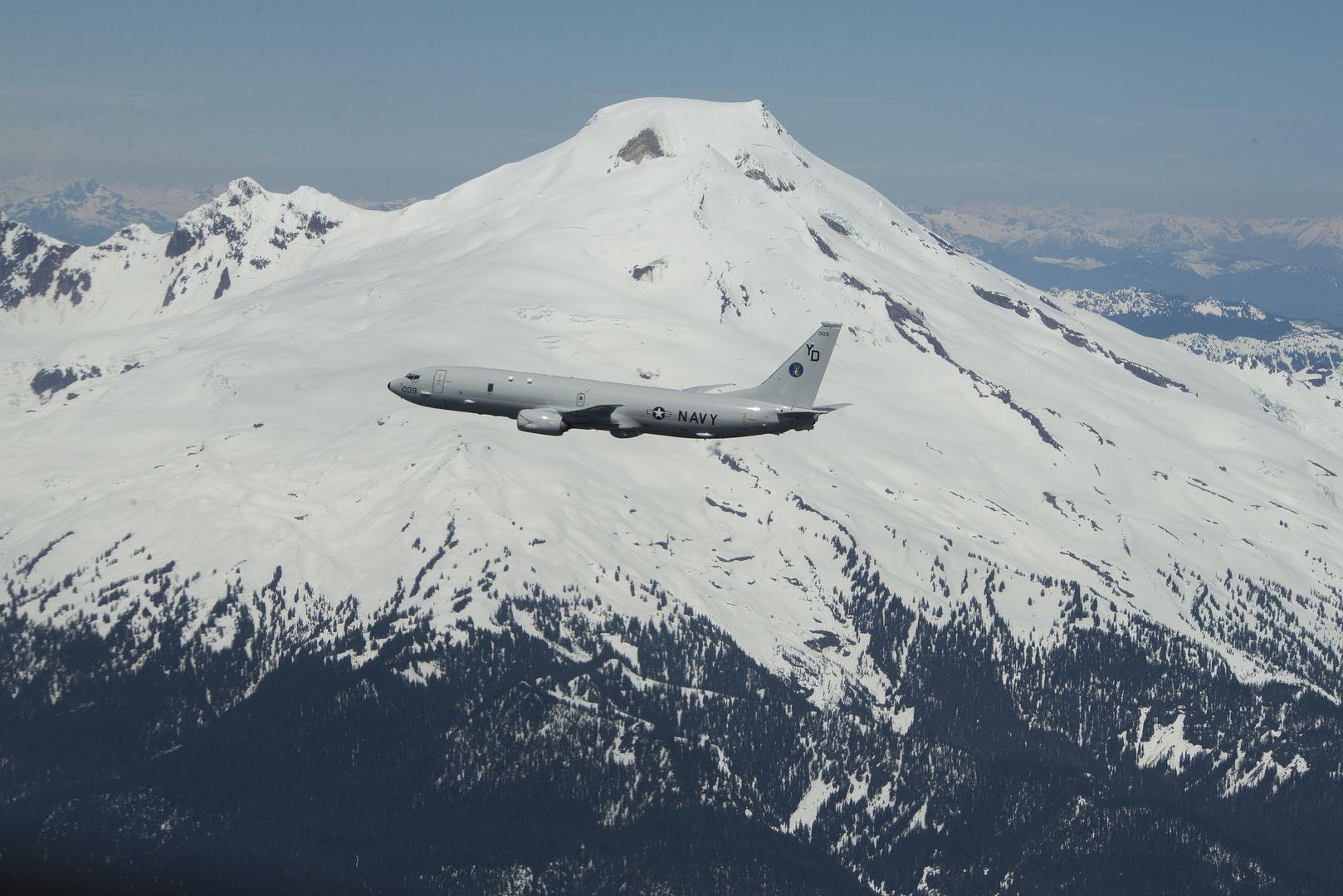
A Finnish F/A-18 Hornet waits while a U.S. Air Force F-15C Eagle takes off at Rovaniemi Air Base, Finland, May 22, in support of Arctic Challenge 2017. Finland is one of the hosts of the two-week long exercise, aimed at improving overall coordination between allies and partner militaries. (U.S. Air Force photo/Airman 1st Class Abby L. Finkel)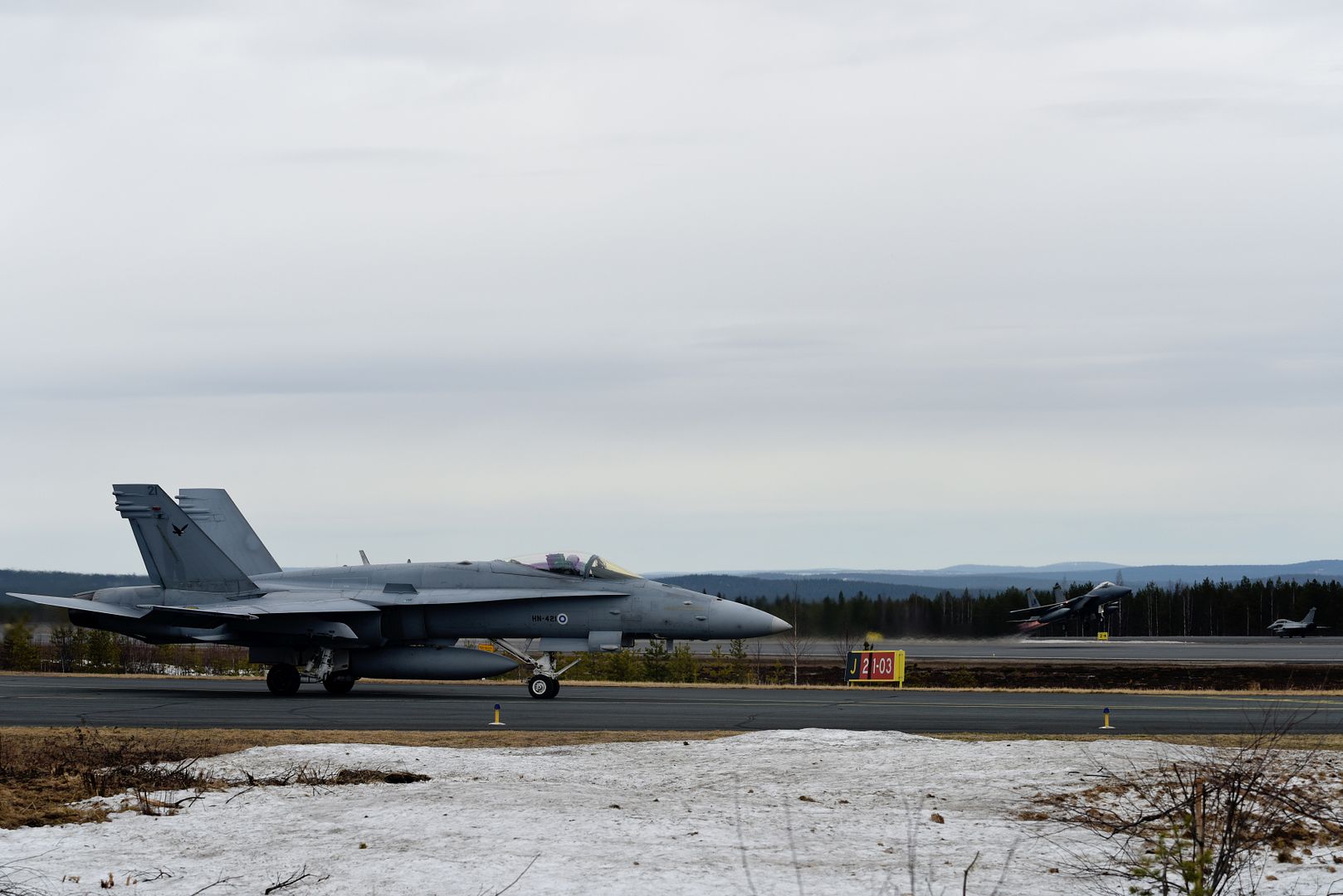
A 493rd Fighter Squadron F-15C Eagle from the 48th Fighter Wing at Royal Air Force Lakenheath, England, takes off at Rovaniemi Air Base, Finland, May 22, in support of Arctic Challenge 2017. Exercises such as ACE 17 help improve the ability of participating nations' armed forces to collectively conduct the full spectrum of military operations. (U.S. Air Force photo/Airman 1st Class Abby L. Finkel)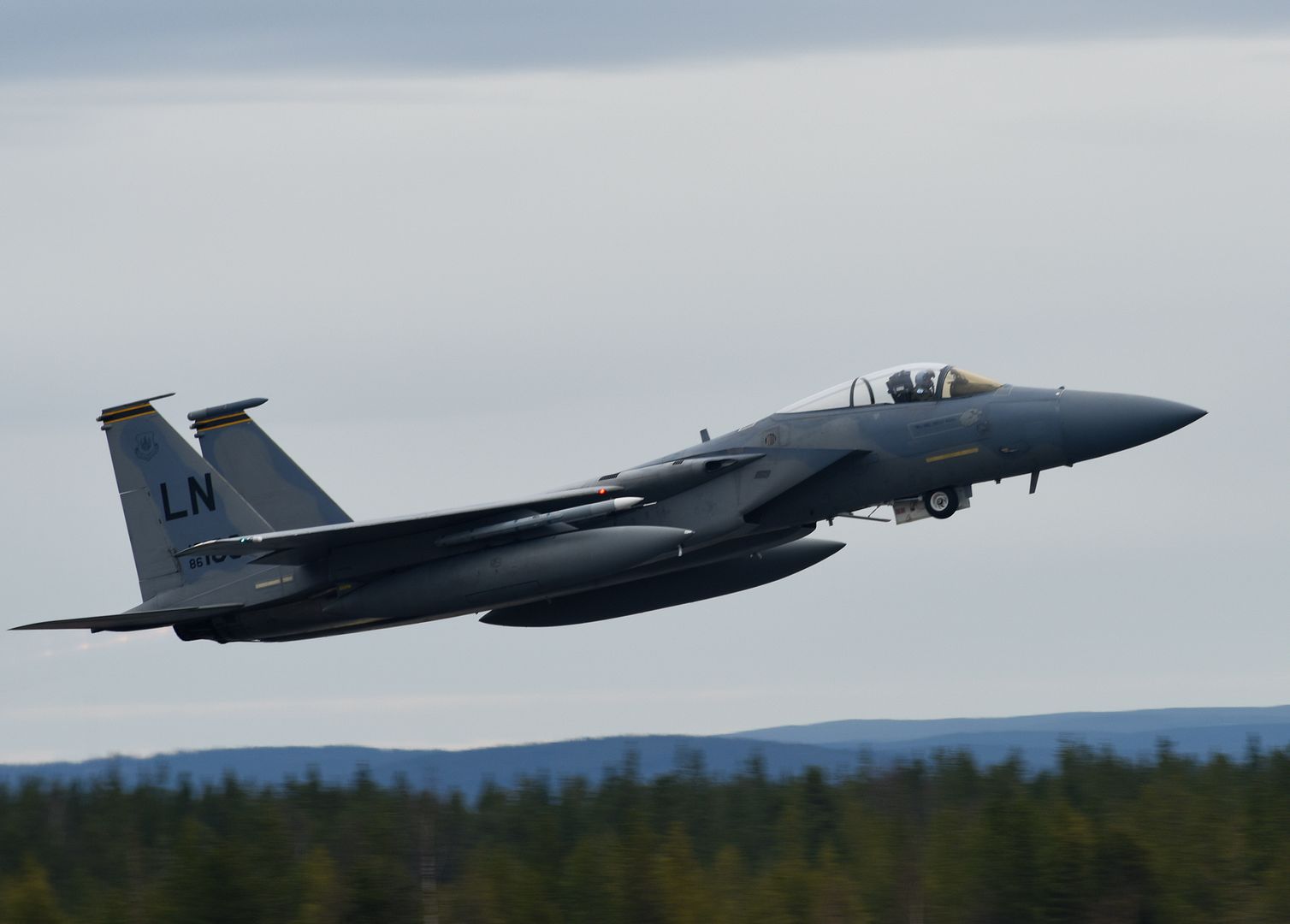
ARLINGTON, Va., May 24, 2017 ? Boeing [NYSE: BA] and the U.S. Defense Advanced Research Projects Agency (DARPA) are collaborating to design, build and test a technology demonstration vehicle for the Experimental Spaceplane (XS-1) program.
Boeing will develop an autonomous, reusable spaceplane capable of carrying and deploying a small expendable upper stage to launch small (3,000 pound/1,361 kg) satellites into low Earth orbit. Boeing and DARPA will jointly invest in the development.
Once the spaceplane ? called Phantom Express ? reaches the edge of space, it would deploy the second stage and return to Earth. It would then land on a runway to be prepared for its next flight by applying operation and maintenance principles similar to modern aircraft.
?Phantom Express is designed to disrupt and transform the satellite launch process as we know it today, creating a new, on-demand space-launch capability that can be achieved more affordably and with less risk,? said Darryl Davis, president, Boeing Phantom Works.
The Aerojet Rocketdyne AR-22 engine, a version of the legacy Space Shuttle main engine, would power the spaceplane. It is designed to be reusable and operates using liquid oxygen and liquid hydrogen fuel.
Phantom Express would offer an advanced airframe design as well as third-generation thermal protection to create a vehicle capable of flying at high flight velocity, while carrying a smaller, more affordable expendable upper stage to achieve the mission objectives.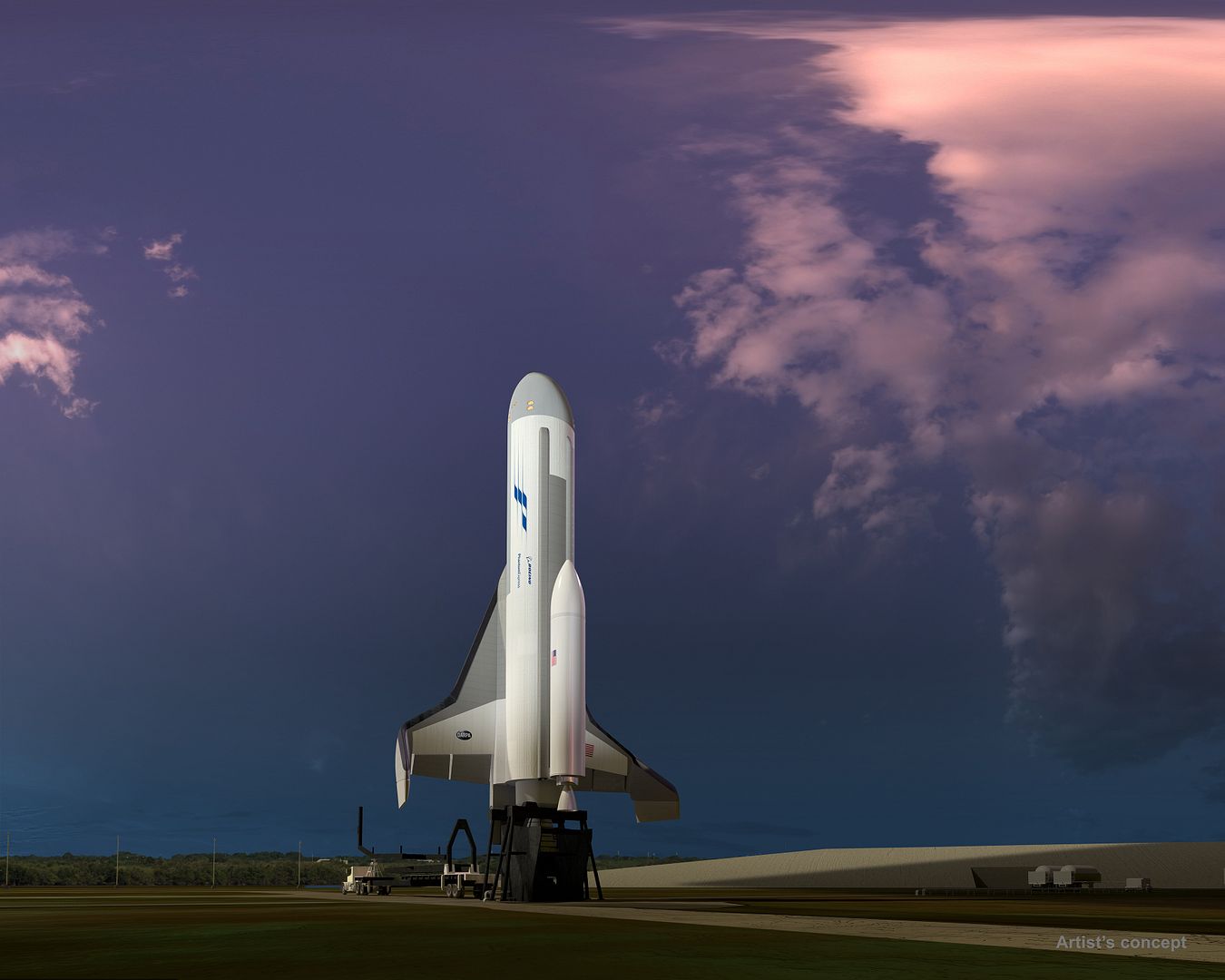
In the test phase of the program, Boeing and DARPA plan to conduct a demonstration of 10 flights over 10 days.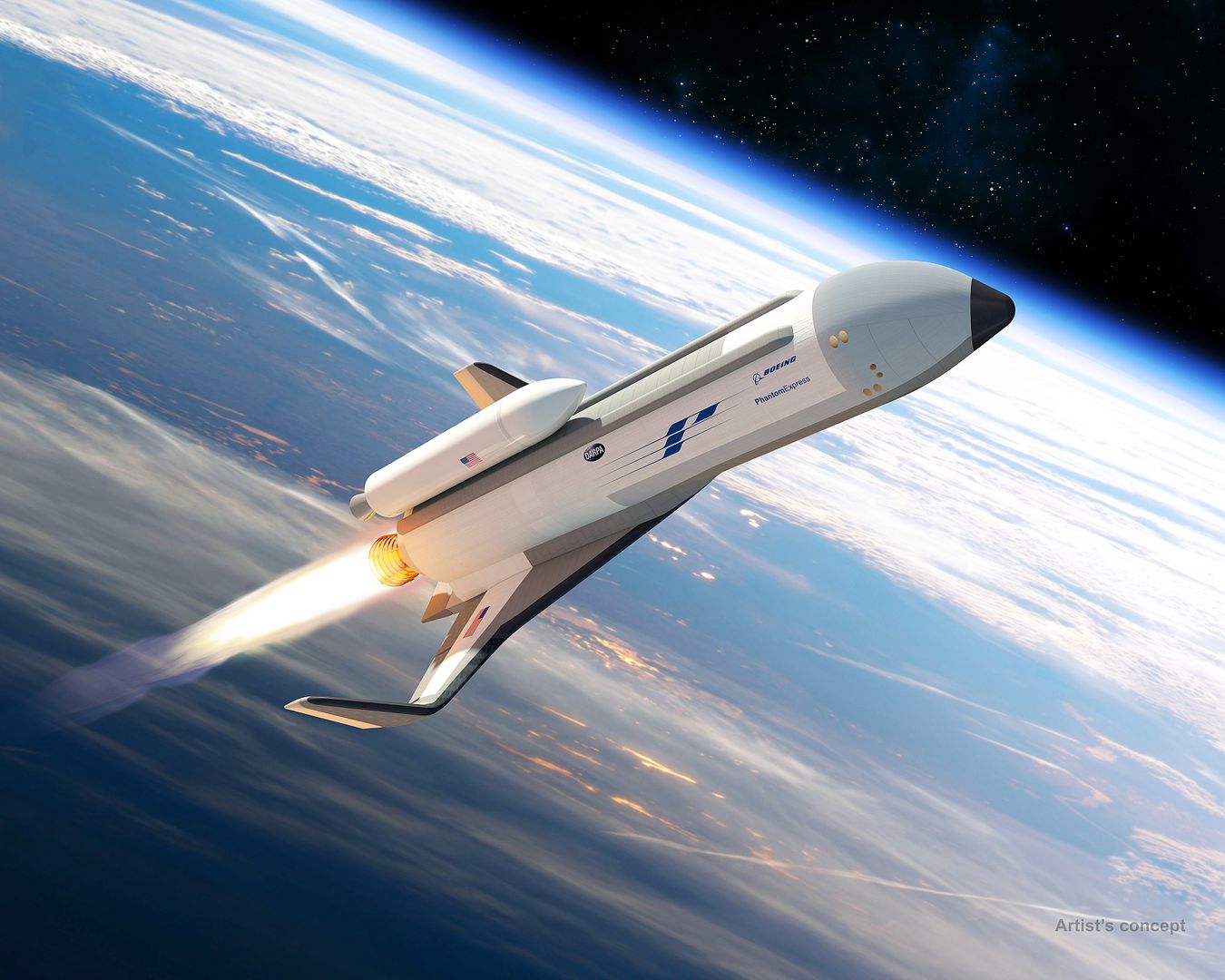
24 May 2017 Press Release
Airbus has delivered the first A320neo to Vistara, a Delhi based full service airline and joint venture between Tata Sons Ltd. and Singapore Airlines (SIA). The delivery is the first of seven aircraft to be leased from BOC Aviation. The aircraft sports a unique A320neo Vistara star symbol livery on its underbelly.
The CFM powered aircraft is configured in a three class layout with 158 seats (8 business class, 24 premium and 126 economy class). Vistara has taken inputs from its growing number of frequent fliers and redesigned the cabin with even more comfort and relaxing features such as mood lighting and increased seat pitch.
Vistara currently operates 13 A320 aircraft on domestic India routes. The increased range of the NEO provides greater reach as Vistara spreads its wings internationally in the future.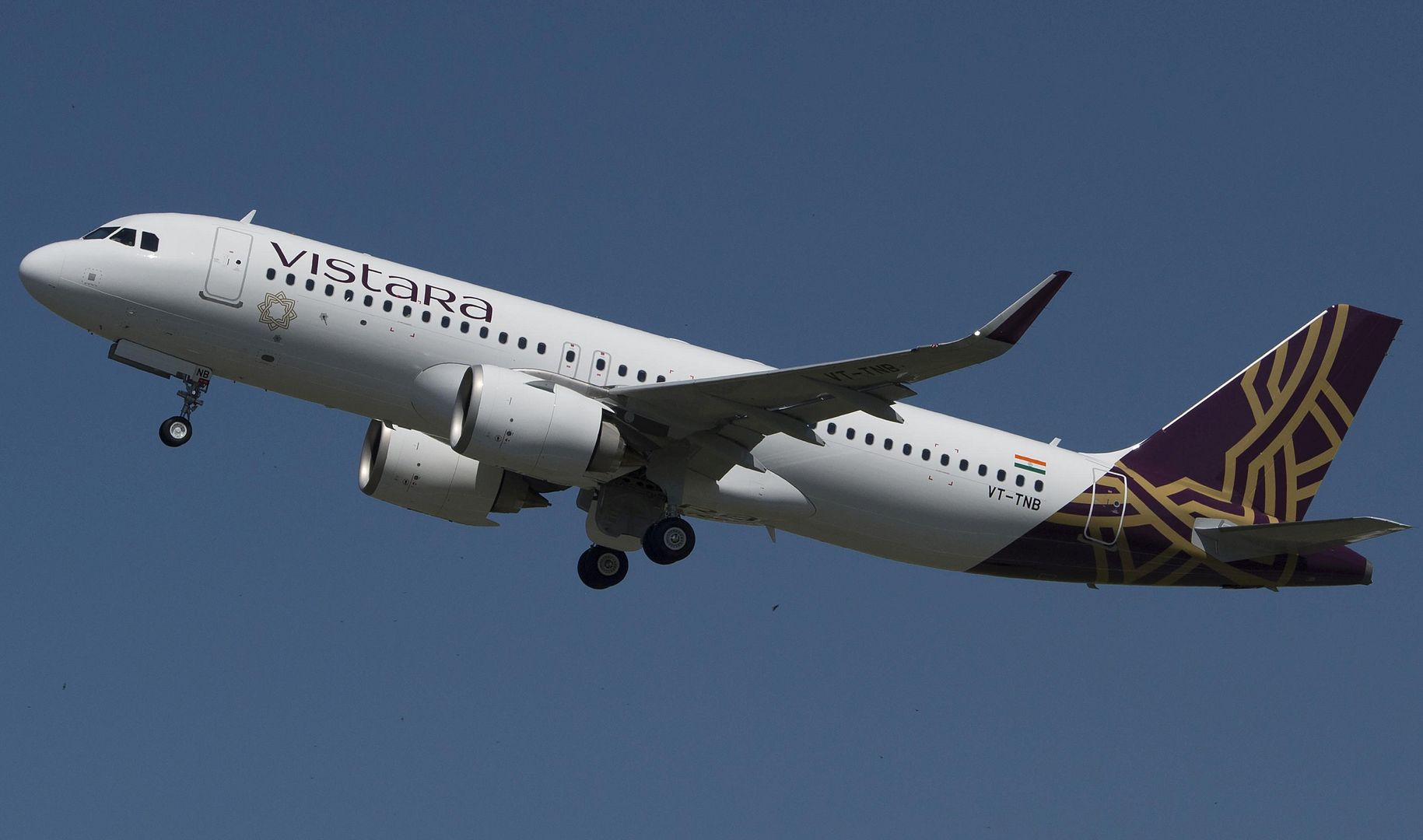
The A320neo Family incorporates the very latest technologies including new generation engines and Sharklets, which together deliver more than 15 percent fuel and CO2 savings from day one and 20 percent by 2020 as well as 50 percent noise reduction. With more than 5,000 orders received from 92 customers since its launch in 2010, the A320neo Family has captured some 60 percent share of the market. With this delivery, Airbus has delivered more than 110 A320neo aircraft to 24 operators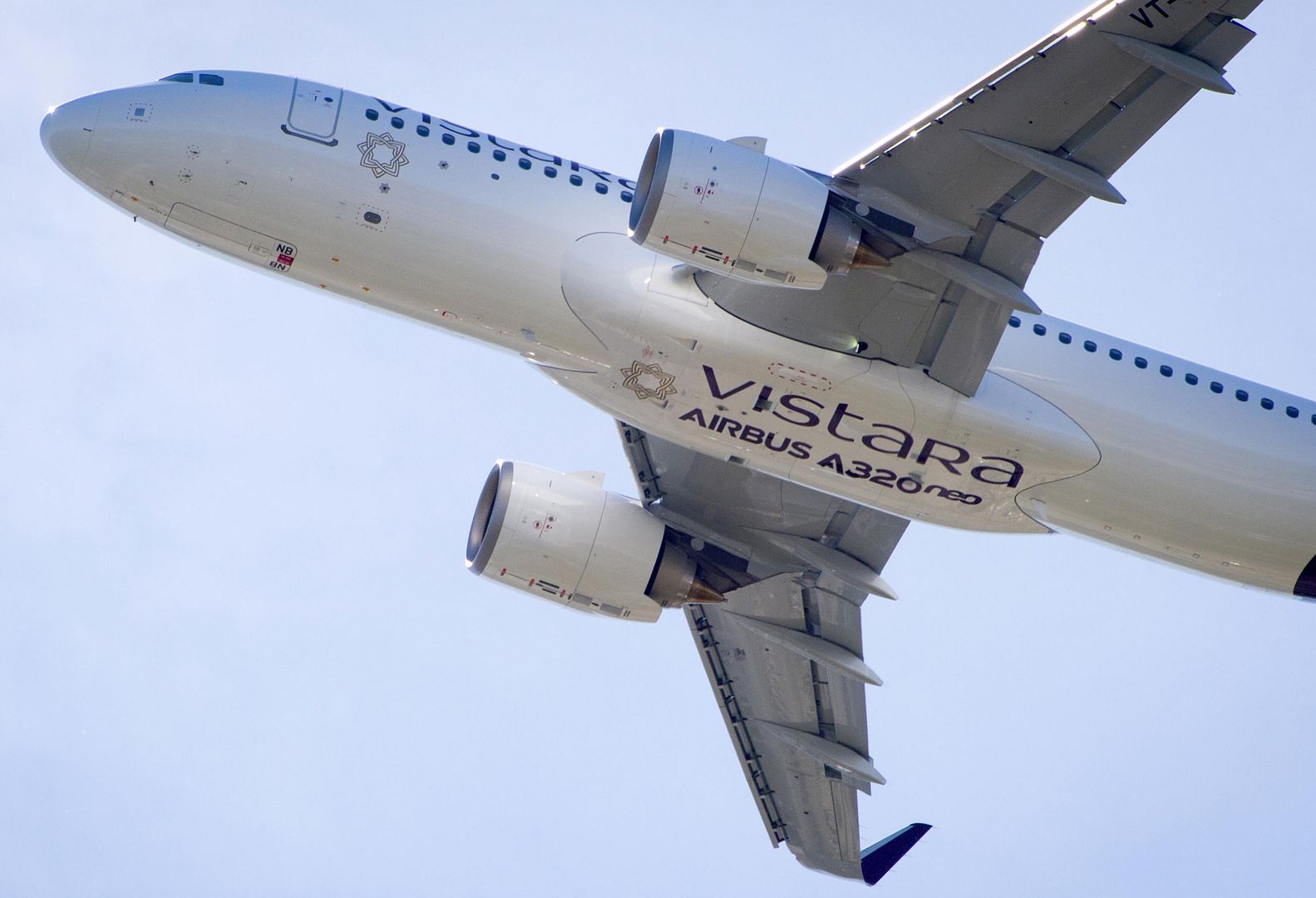
News Article / May 24, 2017
A detachment of six Royal Canadian Air Force CF-18 Hornet fighters began patrolling Iceland?s airspace as part of Operation Reassurance on May 22, 2017.
For approximately one month, Air Task Force-Iceland, based out of Keflavik Air Base, will provide a continuous air surveillance and interception capability that could be launched immediately to meet and identify unknown airborne objects within, or approaching, NATO airspace. Air Task Force-Iceland comprises Canada?s periodic contribution to the North Atlantic Treaty Organization (NATO)-Airborne Surveillance and Interception Capabilities to meet Iceland's Peacetime Preparedness Needs (ASIC-IPPN).
?Canada is a committed NATO ally and our commitment to the transatlantic bond is as strong as ever. Air Task Force-Iceland is part of the renewal of the mandate of Operation Reassurance announced by the Government of Canada in July 2016 at the NATO Warsaw Summit in Poland,? said Defence Minister Harjit Sajjan.? Canada and Iceland continue to be close partners within NATO and this deployment is an example of the Canada?s continuing solidarity and collaboration with Allies to ensure safety and security in the Alliance?s airspace.?
The Task Force is commanded by Lieutenant-Colonel William ?Billy? Mitchell, who is currently the commanding officer of 433 Tactical Fighter Squadron at 3 Wing Bagotville, Quebec. The Air Task Force contingent includes a Royal Canadian Air Force fighter detachment from 3 Wing and personnel support from 2 Wing Bagotville, as well as intercept controllers from 22 Wing North Bay, Ontario, for a total of approximately 180 personnel.
Air Task Force-Iceland will conduct the same activities as were previously carried out under Operation Ignition. The last deployment under Operation Ignition occurred in 2013.
Following the mission to Iceland, Royal Canadian Air Force members from 4 Wing Cold Lake, Alberta, will take part in Operation Reassurance missions in Romania beginning in September.
?The men and women of the Canadian Armed Forces have world-class military skills and a global reputation as a professional and capable force,? said Lieutenant-General Stephen Bowes, the commander of the Canadian Joint Operations Command. ?Air Task Force-Iceland is another example of the [Canadian Armed Forces] having the necessary capabilities to make a meaningful contribution across the full spectrum of international operations.?
Canada and Iceland are close partners within NATO. As Iceland is the only NATO country with no standing military of its own, Canada is proud to participate in these cooperative defence activities in support of the NATO air surveillance mission.
The commitment of Canadian air assets and personnel as part of Operation Reassurance demonstrates Canada?s ability and willingness to react rapidly to potential threats by working side by side with our NATO Allies. Operation Reassurance refers to the military activities under taken by the Canadian Armed Forces since 2014 to support NATO assurance and deterrence measures. Operation Reassurance is designed to reinforce the defence of NATO Allies in Central and Eastern Europe and reassure those Allies? populations of NATO support.
The CF-18 Hornet, Canada?s multipurpose fighter jet, is ideally suited for this surveillance mission. Its pilots are trained to carry out air defence, air superiority, and tactical support missions.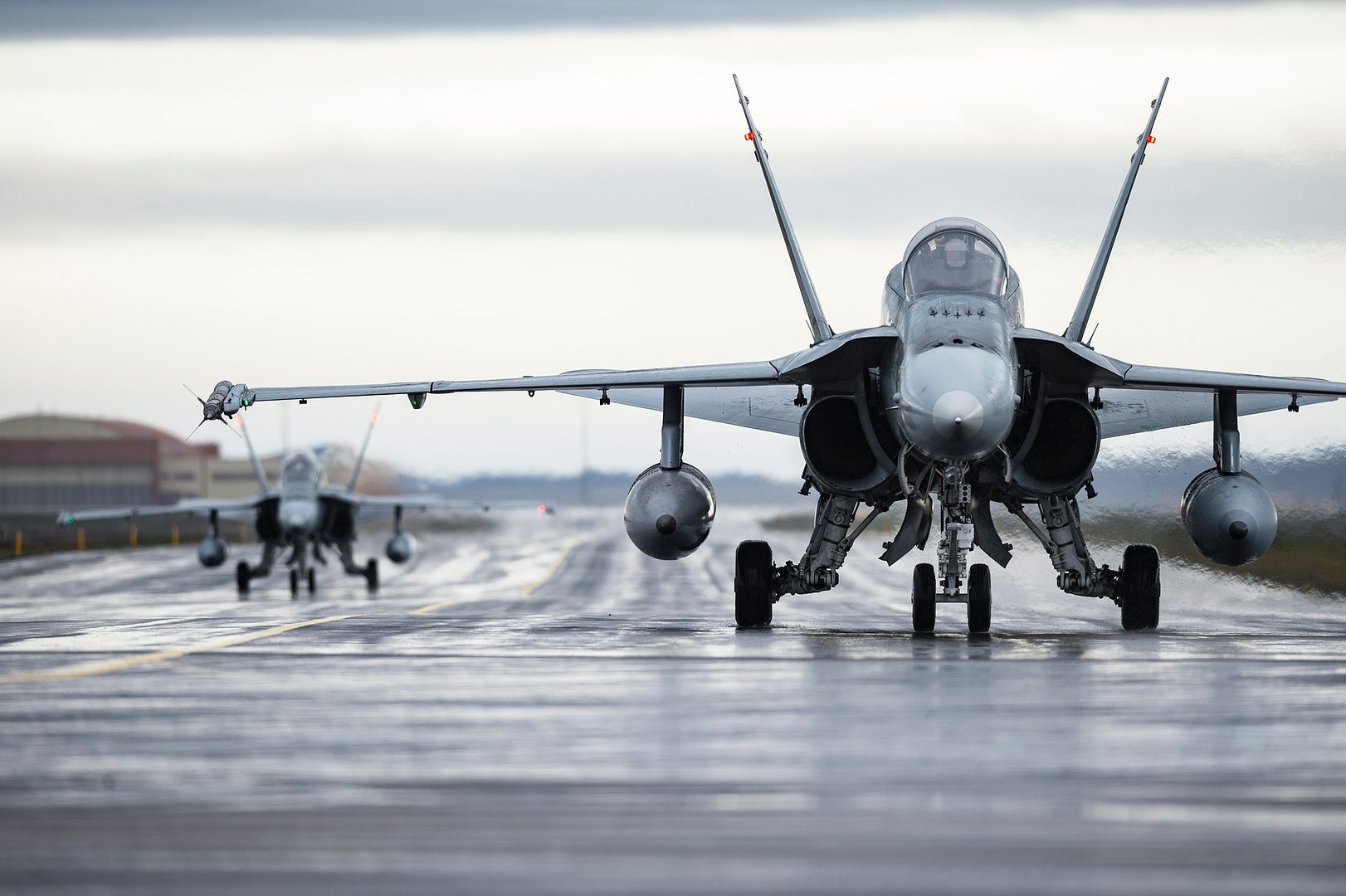
New Jersey Air National Guard F-16D Fighting Falcon's from the 177th Fighter Wing take off for a mission during a three-day Aeropsace Control Alert CrossTell live-fly training exercise at Atlantic City Air National Guard Base, N.J., May 24, 2017. Representatives from the Air National Guard fighter wings, Civil Air Patrol, and U.S. Coast Guard rotary-wing air intercept units will conduct daily sorties from May 23-25 to hone their skills with tactical-level air-intercept procedures. (U.S. Air National Guard photo's by Master Sgt. Matt Hecht/Released)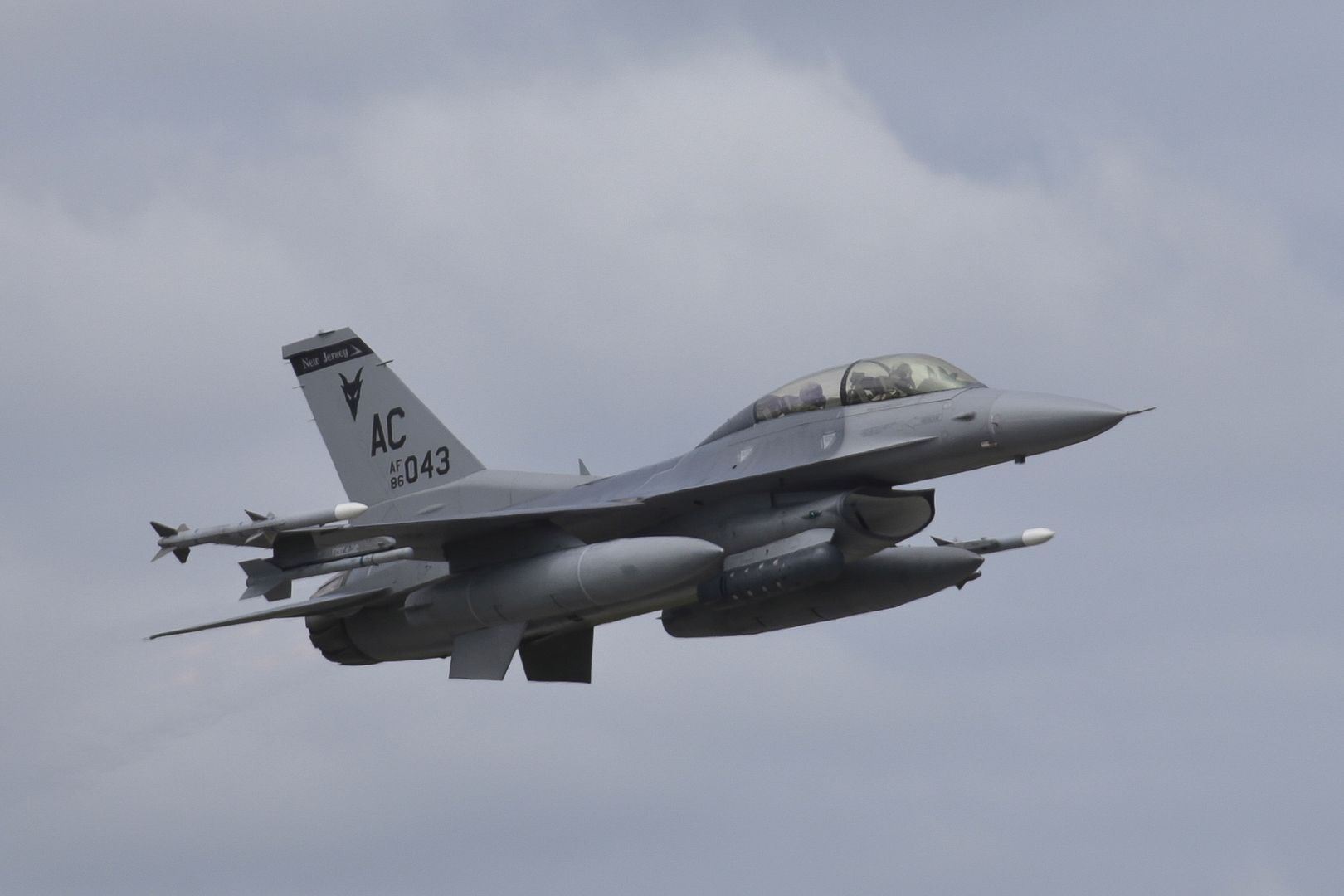

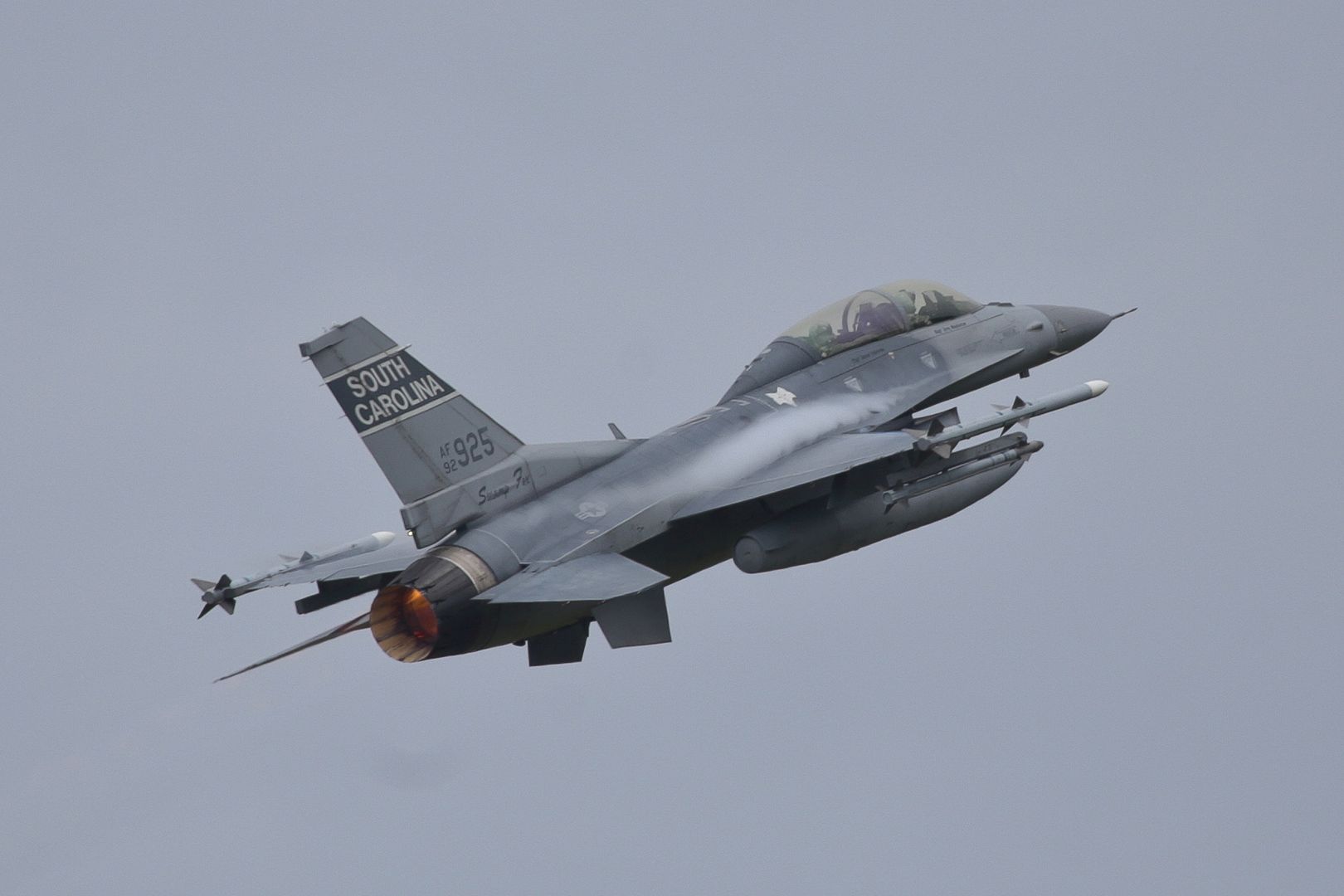
NAVAL AIR STATION PATUXENT RIVER, Md.- An F-35B is prepped for a test flight at Pax River Integrated Test Force in Patuxent River Md. May 24, 2017. The air station is the testing sight for the F-35?s capabilities. This site will be responsible for the overall design and improvements to the F-35 throughout it?s service history. (Official Marine Corps Photo by Cpl. Timothy R. Smithers)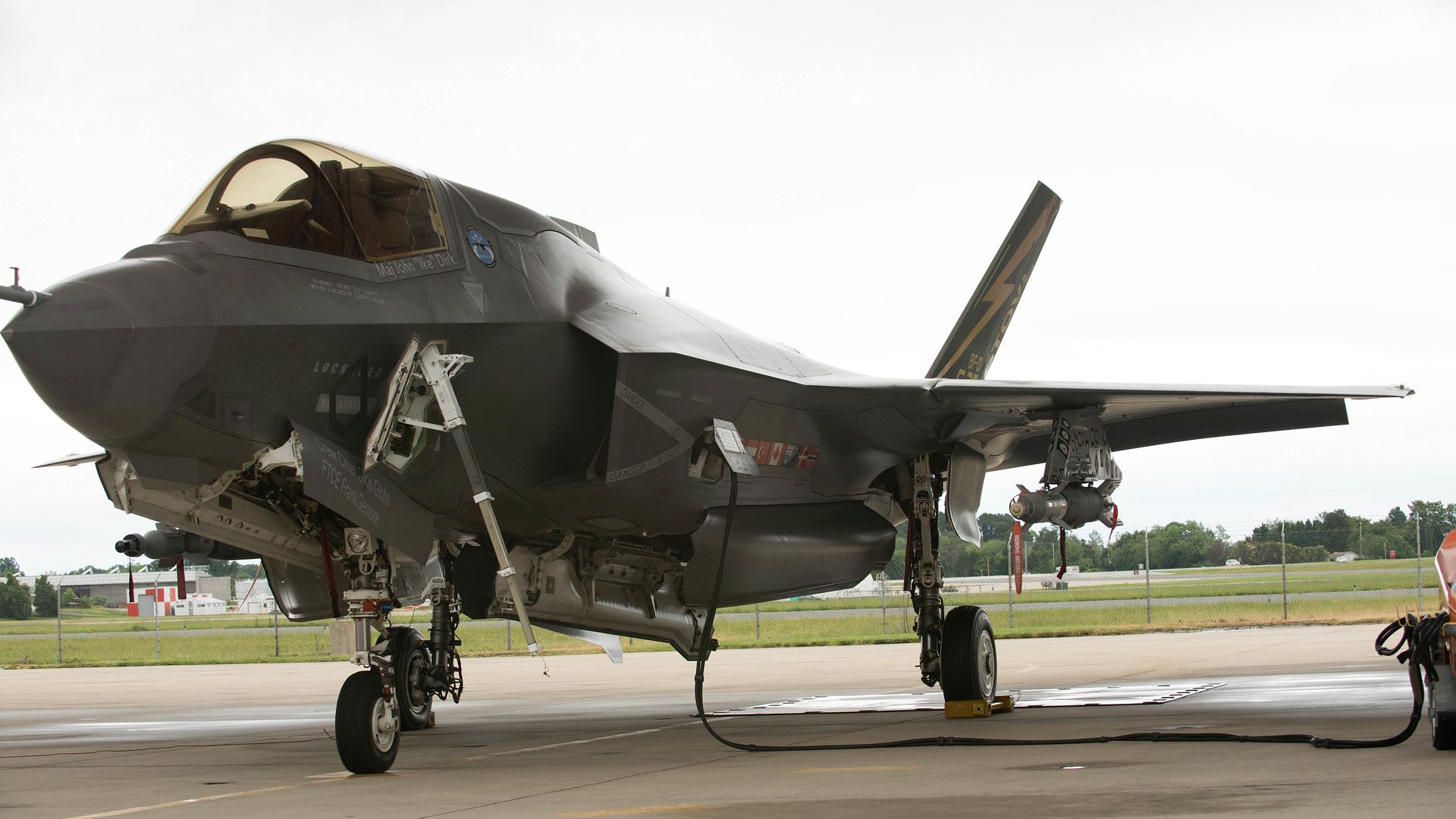
-
 Main AdminEDWARDS AIR FORCE BASE, Calif. --
Main AdminEDWARDS AIR FORCE BASE, Calif. --
From time to time, the F-22 Raptor Combined Test Force at the 411th Flight Test Squadron gets a visit from an old friend.
A highly modified and instrumented Boeing 757 called the F-22 Flying Test Bed is an F-22 avionics laboratory. The experimental FTB is the very first Boeing 757 ever produced and has been retrofitted in order to perform flight test of F-22 avionics and sensors in an open-air, operationally representative environment.
The FTB routinely flies with real F-22 Raptors both at Edwards and Nellis Air Force Base, Nevada in order to gain an early look at F-22 mission software before the software is released to developmental flight testers, mainly at Edwards.
The FTB visited earlier in the month to examine the F-22 Raptor program?s upgraded mission software.
?This particular FTB deployment provided an excellent training opportunity for the FTB test team, as well as members of the F-22 CTF, while reducing risk to the F-22 3.2B (software) program by allowing us to have an early look at some prototype mission software planned for the final 3.2B software delivery,? said Rachel Kitzmann, Boeing Agile Integration Laboratory F-22 lead test director. ?Our F-22 mission equipment is completely segregated from the 757 flight controls, so we can fly with prototype software that has not gone through a formal Equipment Operational Flight Clearance process. This allows us to have an early look at developmental software and problem fixes prior to release to the 411 Flight Test Squadron here at Edwards.?
Kitzmann added the FTB has the ability to change software loads real-time during flight, which allows the test team to test multiple configurations during early developmental testing. The fact that all of the mission equipment is housed in a 757 means that Boeing test engineers, F-22 test pilots and other F-22 customer representatives can be present on board and witness the flight test in real time. Additionally, the 757 can fly approximately a seven-hour sortie, which is far longer than a typical F-22 flight test mission, she said.
?The FTB saves money and reduces the F-22 modernization timeline,? said Kevin Sullivan, 411th FLTS F-22 avionics lead. ?It provides risk reduction because it?s easier to fly, fix, fly more quickly instead of having software certified and loaded into an actual F-22. It allows us to look at the avionics software in an F-22 representative hardware and software environment and is capable of acting like an F-22, which can integrate with our F-22s here during test sorties.?
When not in flight, the FTB is connected to Boeing?s Agile Integration Ground Laboratory, which allows the company to add additional hardware, instrumentation and test equipment in order to perform system-level integration and development testing of the F-22 mission systems. The F-22 FTB has a unique wing above the flight deck that houses the same sensors as on a Raptor.
Kitzmann said this last mission to Edwards was the final flight the FTB took out of Boeing Field in Washington where it had been based since 1999. After leaving Edwards May 5, the FTB headed to its new home in St. Louis, Missouri.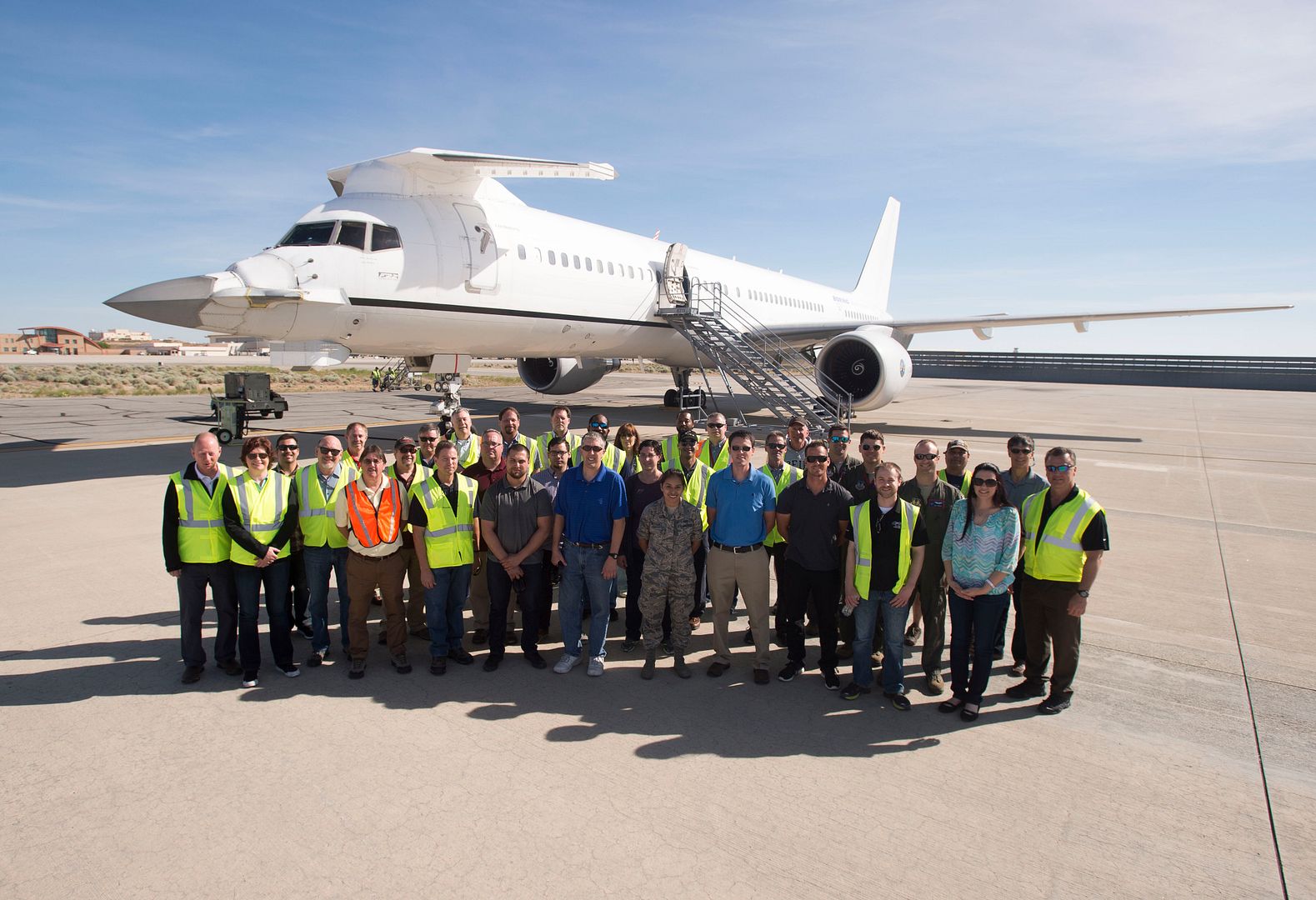
MARIETTA, Ga., May 25, 2017 /PRNewswire/ -- The first Lockheed Martin (NYSE: LMT) LM-100J commercial freighter aircraft achieved a critical milestone with the completion of its first flight here today.
"I was proud to fly the first flight of our LM-100J. It performed flawlessly, as is typical of our military C?130J new production aircraft," said Wayne Roberts, chief test pilot for the LM-100J Program. "This new model will perform many commercial roles in the decades to come, like humanitarian service following natural disasters and others like nuclear accident response, oil spill containment, and firefighting. This aircraft will also enable remote area development such as mining and oil and gas exploration. This day marks the beginning of a tremendous commercial capability that only the LM-100J can deliver."
This first flight followed the same test flight route over North Georgia and Alabama that is used for all C-130J Super Hercules aircraft. The LM-100J will complete initial production flight tests and then begin Federal Aviation Administration (FAA) type certificate update flight test requirements.
"This first flight is a source of pride for Lockheed Martin and serves as a proof-point to the ongoing versatility of the Super Hercules aircraft," said George Shultz, vice president and general manager, Air Mobility & Maritime Missions, and Marietta site general manager. "I'm continually impressed by the commitment to quality and relevance that our employees, industry partners and customers have invested into the LM-100J. Like its military counterpart, the LM?100J is exceeding all expectations in terms of performance and capabilities."
The LM-100J is the 17th different mission capability developed for the C-130J Super Hercules and it is an updated version of the L-100 cargo aircraft, which Lockheed Martin produced from 1964-1992. Lockheed Martin officials submitted a Program Notification Letter to the FAA on Jan. 21, 2014, for a type design update to this aircraft, a civil-certified variant of the C-130J Super Hercules to be marketed as the LM-100J.
Through select design innovations, the LM-100J will perform as a commercial multi-purpose air freighter capable of rapid and efficient cargo transport. The LM-100J is an ideal airlift solution for delivering bulk and oversize cargo, particularly to austere locations worldwide. Like its military counterpart, the LM-100J will be able to support multiple missions, ranging from firefighting to medevac to VIP transport.
The LM-100J incorporates technological developments and improvements over the existing L?100s that result from years of C-130J operational experience, including more than 1.5 million fleetwide flight hours. The result of this experience and advancement translates to an aircraft that will deliver reliable service in a multi-role platform for decades to come.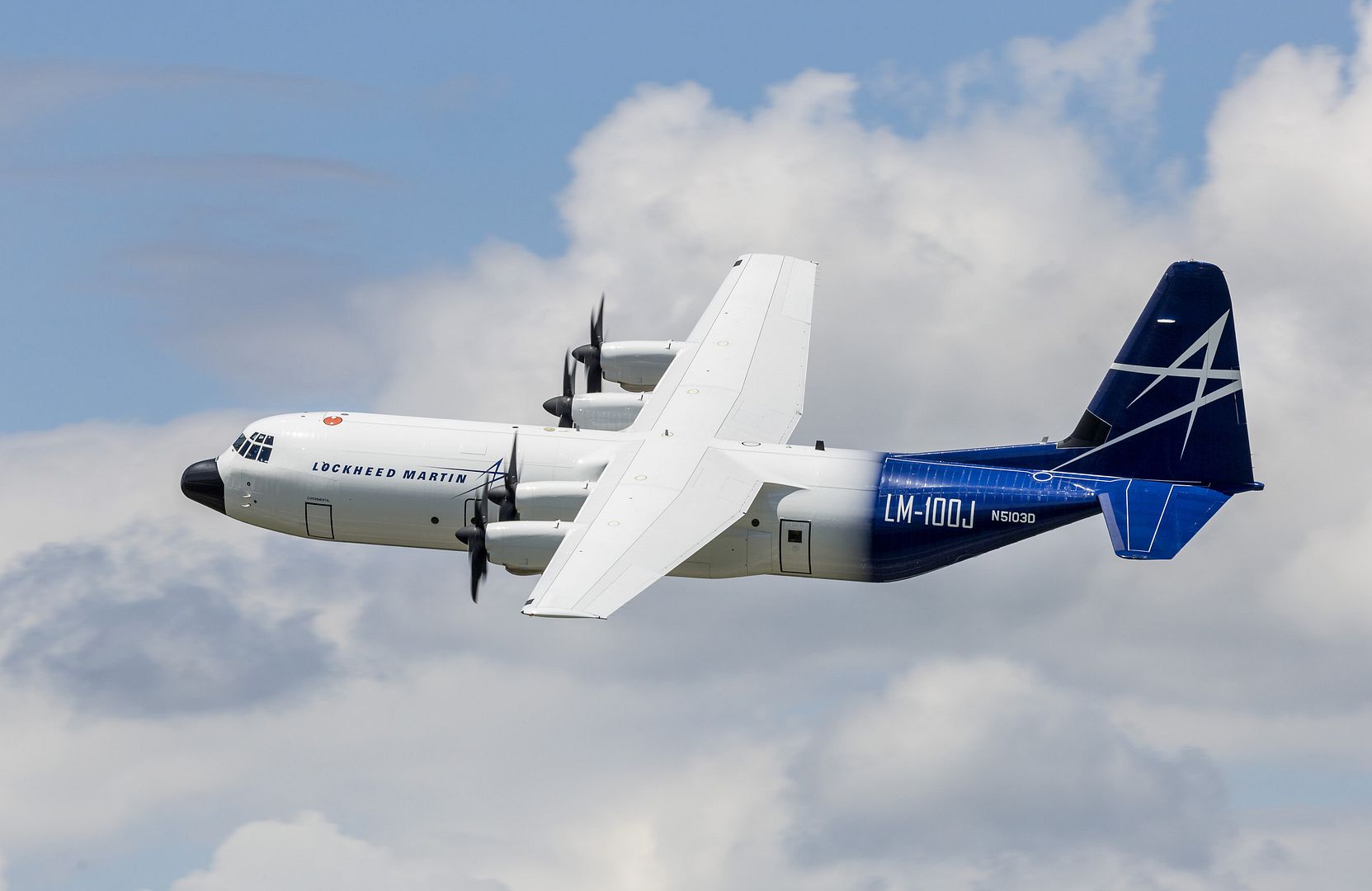
-
 Main AdminLt. Col. Chad Holesko, an F-16 Fighting Falcon pilot assigned to the Ohio Air National Guard?s 180th Fighter Wing, taxis by MiG 29 aircraft May 26, 2017, at Kecskemet Air Base, Hungary. Approximately 150 Airmen and eight F-16 fighter jets from the 180FW traveled to the air base to participate in Load Diffuser 17, a two-week Hungarian-led multinational exercise focused on enhancing interoperability capabilities and skills among NATO allied and European partner air forces by conducting joint operations and air defenses to maintain joint readiness, while also bolstering relationships within the U.S. Air National Guard?s State Partnership Program initiatives. Ohio became state partners with Hungary in 1993. Air National Guard photo by Senior Master Sgt. Beth Holliker.
Main AdminLt. Col. Chad Holesko, an F-16 Fighting Falcon pilot assigned to the Ohio Air National Guard?s 180th Fighter Wing, taxis by MiG 29 aircraft May 26, 2017, at Kecskemet Air Base, Hungary. Approximately 150 Airmen and eight F-16 fighter jets from the 180FW traveled to the air base to participate in Load Diffuser 17, a two-week Hungarian-led multinational exercise focused on enhancing interoperability capabilities and skills among NATO allied and European partner air forces by conducting joint operations and air defenses to maintain joint readiness, while also bolstering relationships within the U.S. Air National Guard?s State Partnership Program initiatives. Ohio became state partners with Hungary in 1993. Air National Guard photo by Senior Master Sgt. Beth Holliker.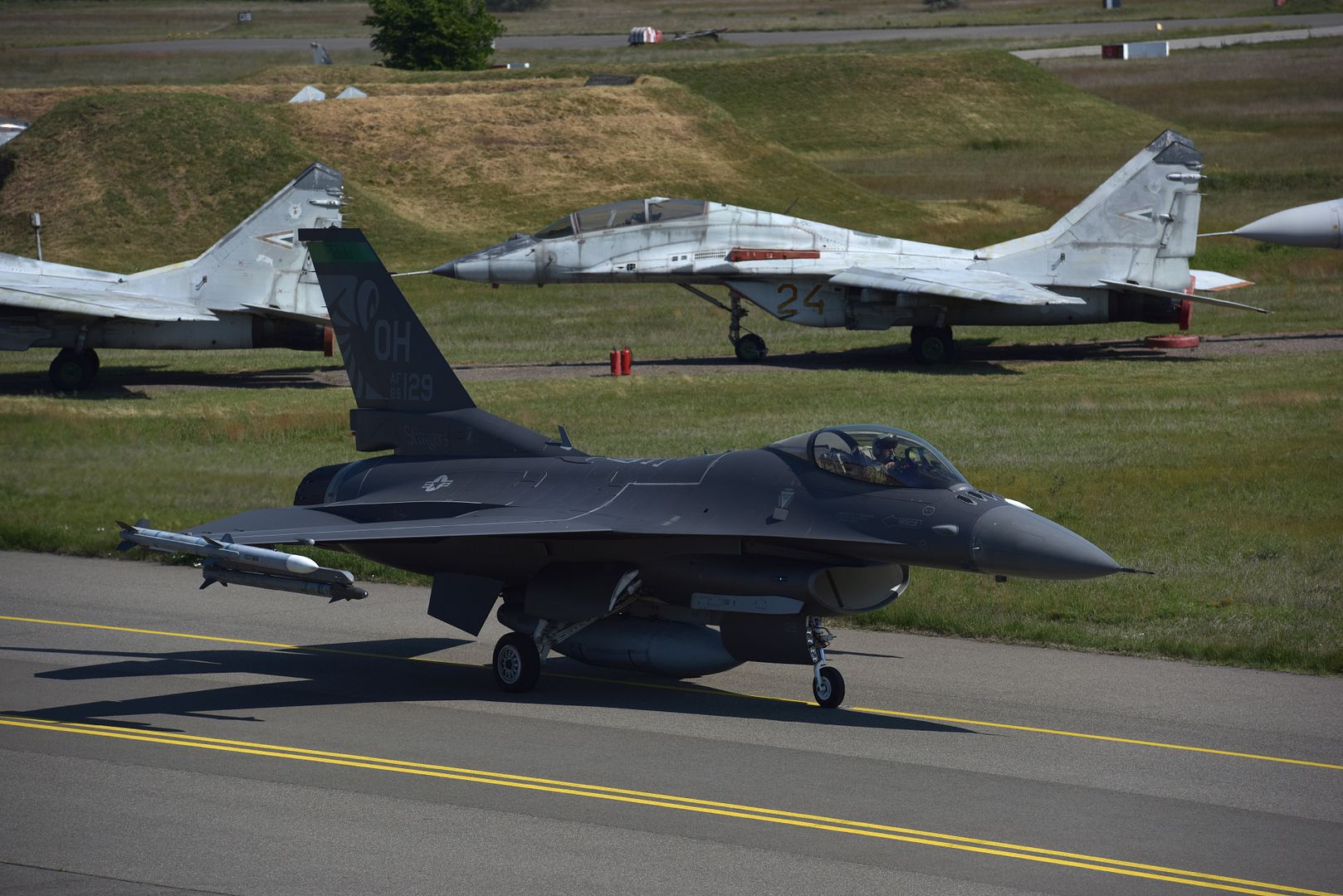
A pilot assigned to the Slovenian Air Force conducts a preflight inspection on a Piltus PC-9 aircraft May 26, 2017 at Kecskemet Air Base, Hungary. Slovenia, along with Hungary, Slovakia, Croatia, Czech Republic and the United States, participated in Load Diffuser 17, a two-week Hungarian-led multinational exercise focused on enhancing interoperability capabilities and skills among NATO allied and European partner air forces by conducting joint operations and air defenses to maintain joint readiness, while also bolstering relationships within the U.S. Air National Guard?s State Partnership Program initiatives. Ohio became state partners with Hungary in 1993. Air National Guard photo by Senior Master Sgt. Beth Holliker.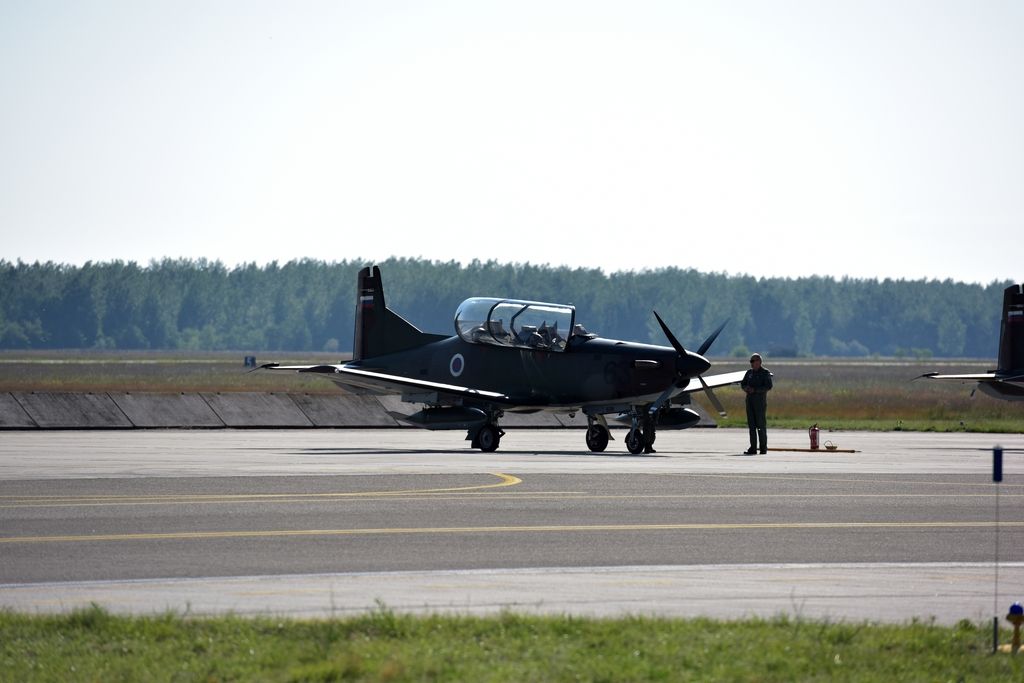
Staff Sgt. Steve Bohme, an F-16 Fighting Falcon mechanic assigned to the 180th Fighter Wing, Ohio Air National Guard, conducts a preflight inspection before a training mission May 26, 2017 at Kecskemet Air Base in Hungary. Approximately 150 Airmen and eight F-16 fighter jets from the 180FW traveled to the air base to participate in Load Diffuser 17, a two-week Hungarian-led multinational exercise focused on enhancing interoperability capabilities and skills among NATO allied and European partner air forces by conducting joint operations and air defenses to maintain joint readiness, while also bolstering relationships within the U.S. Air National Guard?s State Partnership Program initiatives. Ohio became state partners with Hungary in 1993. Air National Guard photo by Senior Master Sgt. Beth Holliker.
A 493rd Fighter Squadron F-15C Eagle from the 48th Fighter Wing at Royal Air Force Lakenheath, England, taxis to a runway at Rovaniemi Air Base, Finland, May 25, in support of Arctic Challenge 2017. Participating in multinational exercises such as ACE 17 allows the U.S. to enhance professional relationships and improve overall coordination with allies and partner militaries. (U.S. Air Force photo/Airman 1st Class Abby L. Finkel)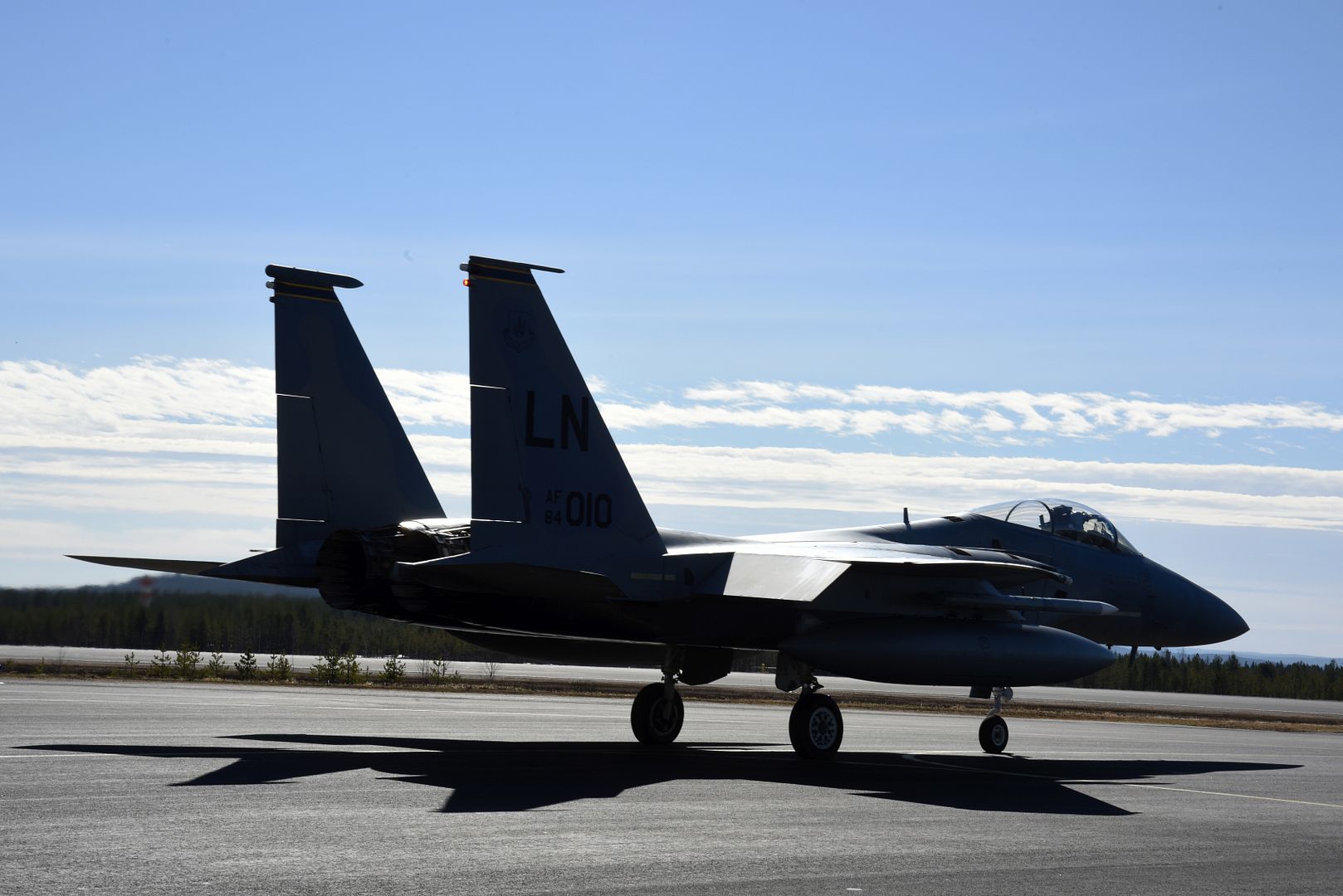
A French Mirage 2000 takes off at Rovaniemi Air Base, Finland, May 22, in support of Arctic Challenge 2017. Continued, realistic interoperability exercises, such as ACE 17, allow the U.S., allies and partner nations to build their expertise in the air. (U.S. Air Force photo/Airman 1st Class Abby L. Finkel)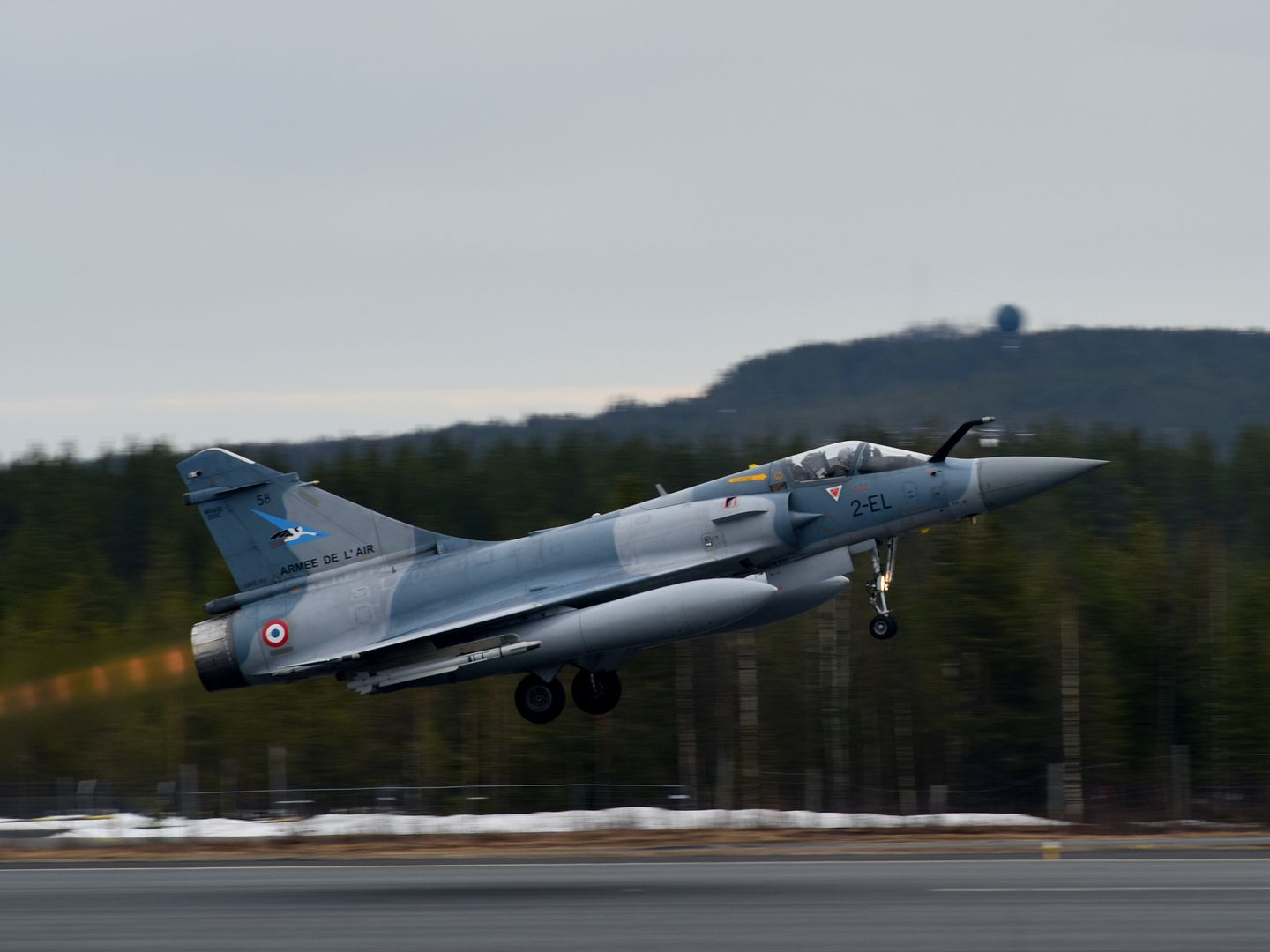
Two French Rafale aircraft taxi to a runway at Rovaniemi Air Base, Finland, May 22, in support of Arctic Challenge 2017. The French are training alongside the U.S. and other allies and partners in Europe, in an effort to maintain the relationships and trust that are essential for ensuring regional security. (U.S. Air Force photo/Airman 1st Class Abby L. Finkel)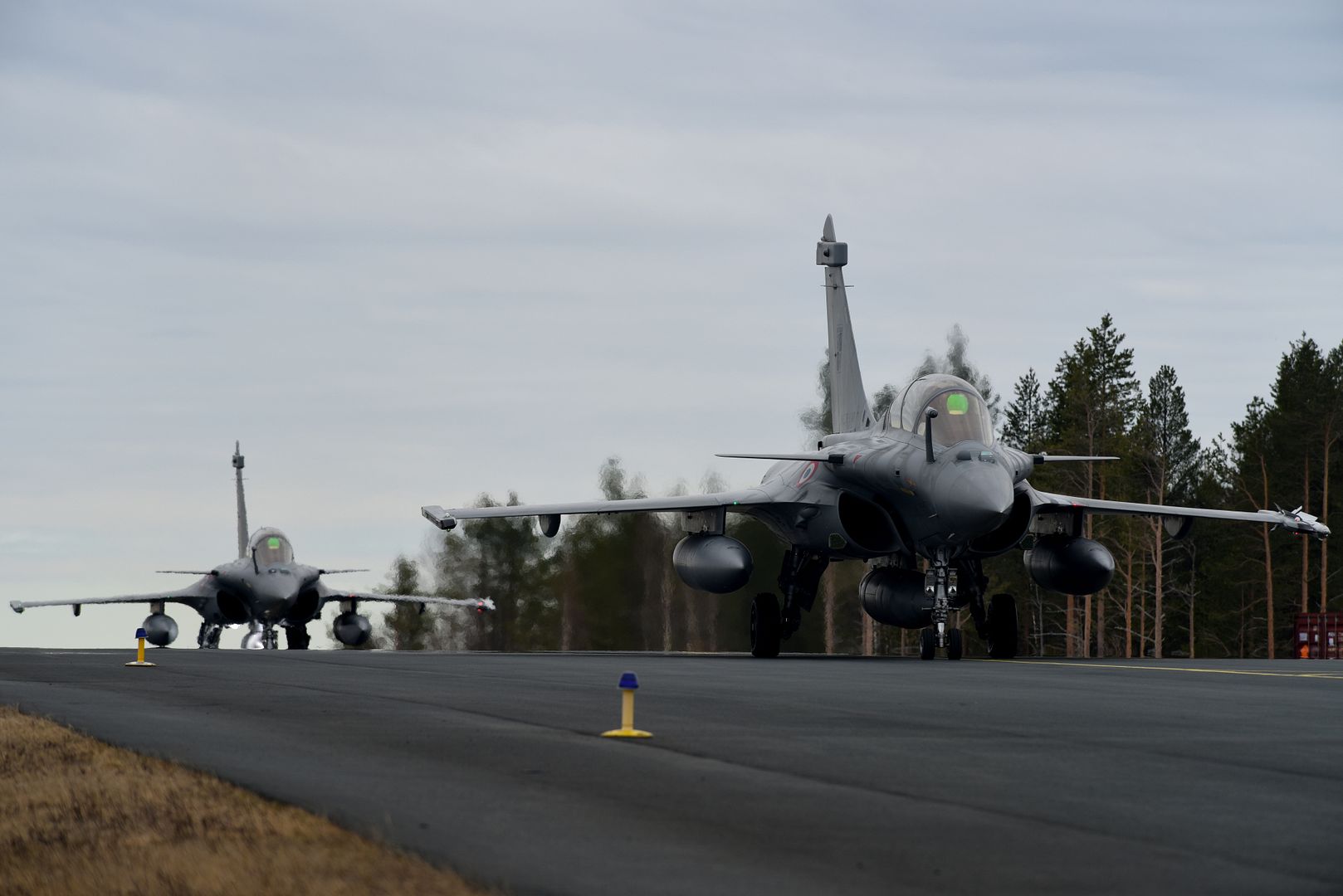
A U.S. Air Force F-16 assigned to the 149th Fighter Wing, Texas Air National Guard, painted with World War II heritage markings is parked outside the Air National Guard Paint Facility in Sioux City, Iowa on May 26, 2017. The 149th FW received authorization for the nonstandard markings in order to commemorate the United States Air Force 70th Anniversary. The markings represent the lineage of the 149th FW with the unit?s origins dating back to the 396th Fighter Squadron ?Thunder Bums? P-47 paint scheme from 1944.
U.S. Air National Guard Photo's by: Master Sgt. Vincent De Groot 185th ARW PA/Released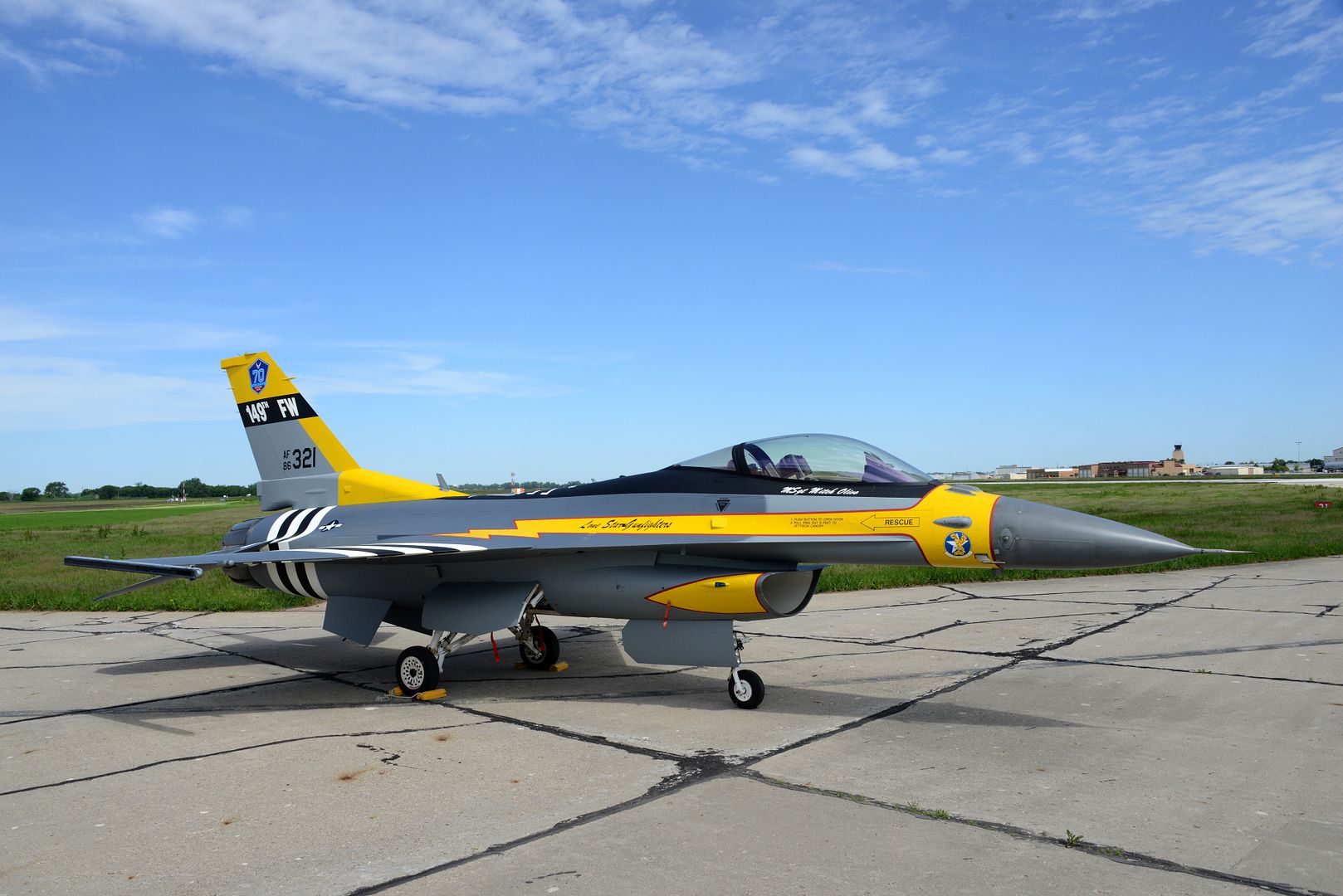

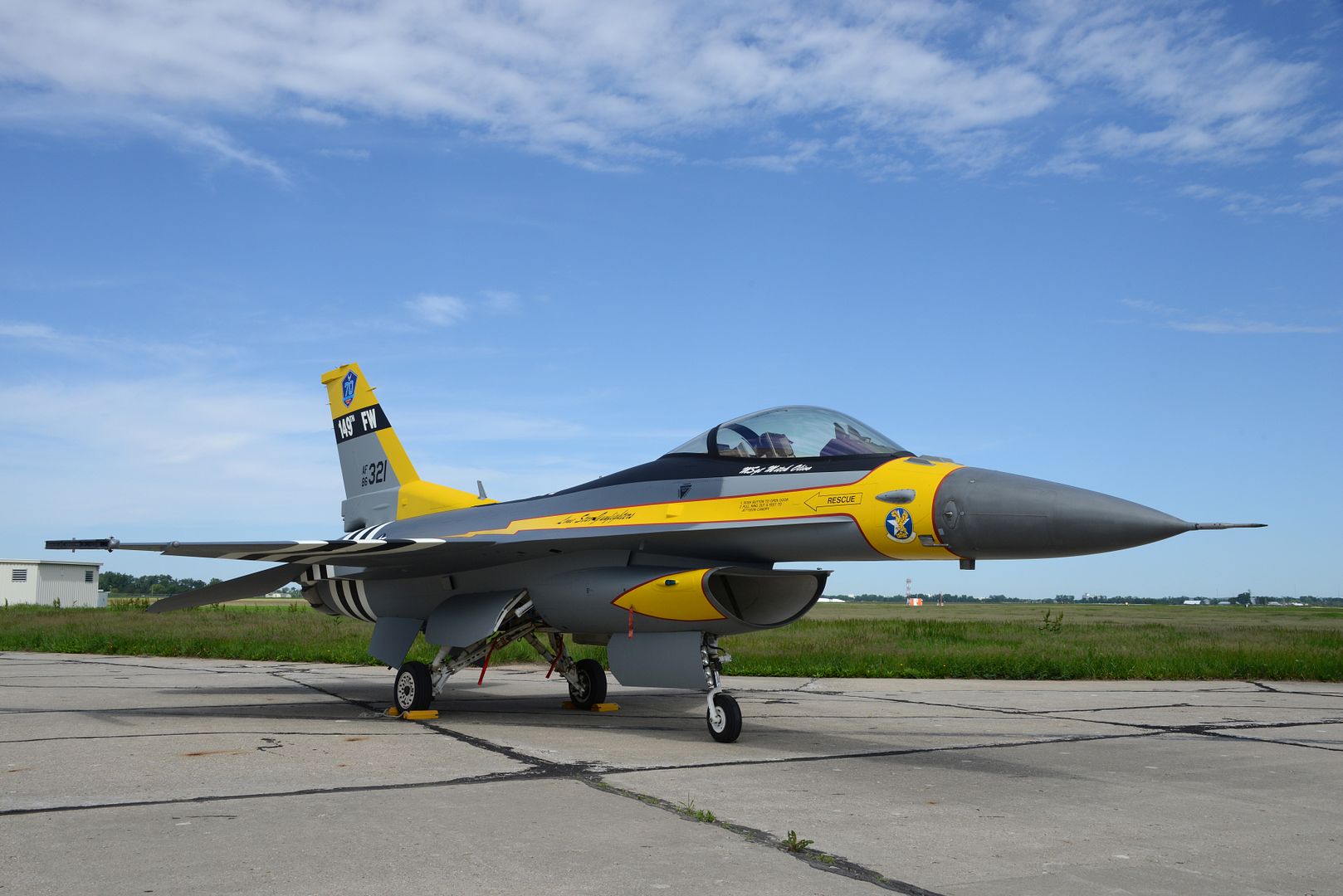
May 26, 2017 Montr?al Commercial Aircraft, Press Release
Bombardier Commercial Aircraft announced today that Swiss International Air Lines (SWISS) took delivery of its first CS300 aircraft at Bombardier?s facility in Mirabel, Canada, where the C Series aircraft are manufactured. When the aircraft enters commercial service in a few days, SWISS will become the first airline to operate both C Series aircraft models. SWISS will dedicate this new aircraft to the French-speaking part of Western Switzerland as the airline will operate this CS300 aircraft from Geneva.
?We are very proud to deliver SWISS?s first CS300 aircraft today. SWISS is known for its leading-edge technical and operational excellence and has been a wonderful partner for the C Series aircraft program. The SWISS family has been part of the C Series journey from the beginning and we thank the airline for its continuous support,? said Fred Cromer, President of Bombardier Commercial Aircraft. ?This new delivery is a demonstration of Bombardier?s commitment to deliver revolutionary and high-performing aircraft and help connecting communities with the best flying experience in the world!?
?The C Series aircraft program continues getting strong momentum with its successful entry into service with SWISS and today, the launch airline becomes the first one to take delivery of both the CS100 and the CS300 models,? said Rob Dewar, Vice President, C Series Aircraft Program, Bombardier Commercial Aircraft. ?The C Series airliners demonstrate robust in-service performance to date and we are confident that SWISS will also benefit from a smooth entry-into-service with the CS300 aircraft.?
?We are delighted that, having successfully integrated the first Bombardier CS100s into our fleet from mid-2016 onwards, we can now welcome our first CS300,? says Thomas Kl?hr, SWISS?s Chief Executive Officer. ?With its 20 additional seats, this second model in the C Series family ideally complements our current aircraft fleet, and gives us an optimal equipment mix for our European short- and medium-haul services. Our first CS300 will be initially stationed in Geneva, where its superior comfort credentials will be excellently suited to this premium travel market,? Kl?hr continues. ?In fact, our entire Geneva-based fleet will soon consist solely of Bombardier C Series aircraft.?
SWISS? first CS300 aircraft is scheduled to enter service on June 1st, 2017 with its maiden commercial flight taking passengers from Geneva to Heathrow. SWISS will take delivery of a total of 30 CS100 and CS300 aircraft.
Twelve C Series aircraft have been delivered by Bombardier so far, nine of which have been delivered to SWISS. Three CS300 aircraft are currently in operations with airBaltic.
The C Series aircraft is manufactured by the C Series Aircraft Limited Partnership, an affiliate of the Bombardier Commercial Aircraft segment of Bombardier Inc.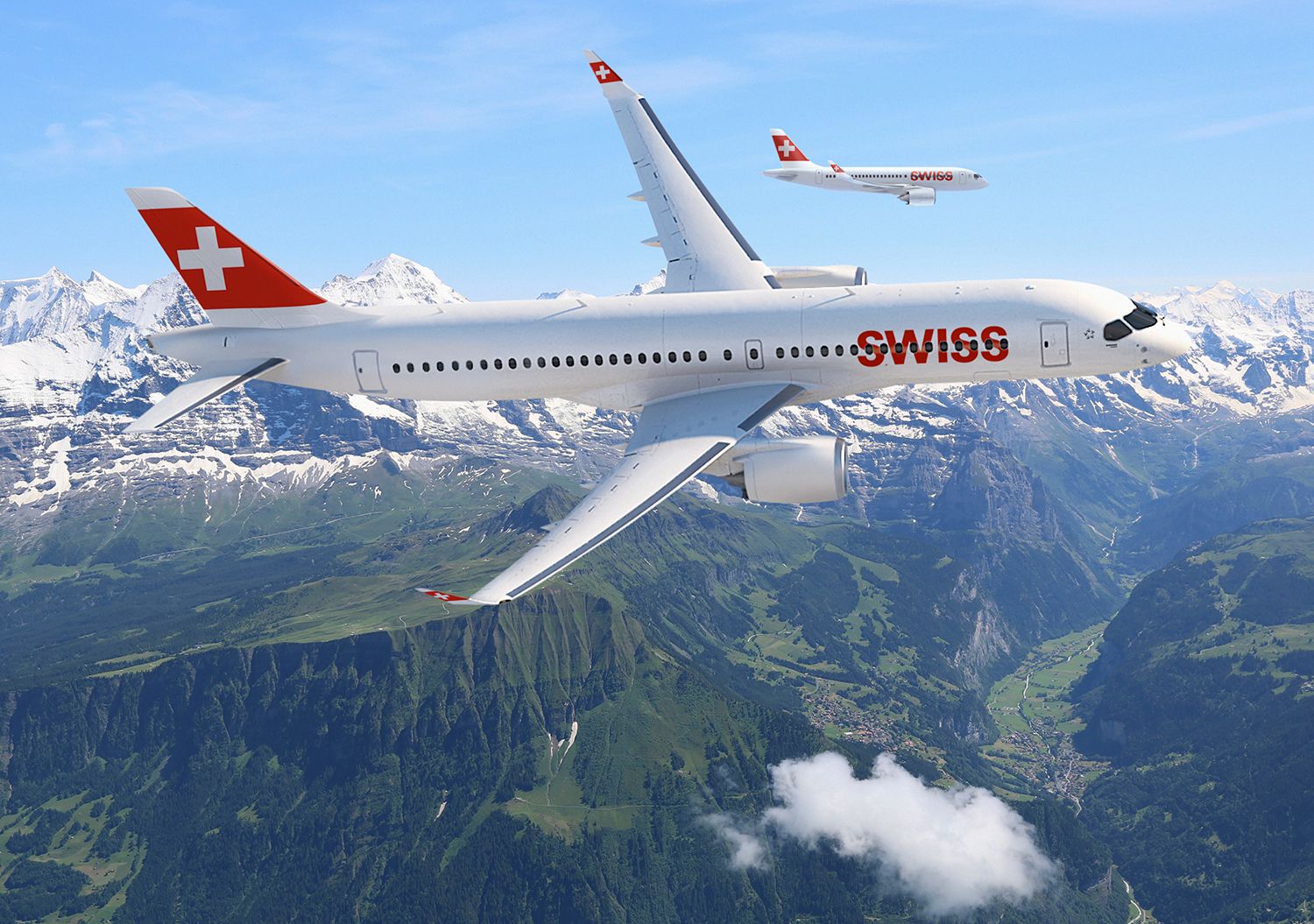
-
 Main AdminA pilot aboard a A-10 Thunderbolt II from the 442d Fighter Wing, out of Whiteman, Mo., flies over the water during the National Salute to America?s Heroes Air and Sea Show, May 27, 2017, at Miami Beach, Fla. Top tier U.S. military assets assembled in Miami to showcase air superiority while honoring those who have made the ultimate sacrifice during the Memorial Day weekend. The 442d FW teamed up with two HH-60G Pave Hawk and an HC-130P/N Combat King aircraft from the 920th Rescue Wing and the 129th Rescue Wing respectively, demonstrating combat-search-and-rescue capabilities. (U.S. Air Force photo/Staff Sgt. Jared Trimarchi)
Main AdminA pilot aboard a A-10 Thunderbolt II from the 442d Fighter Wing, out of Whiteman, Mo., flies over the water during the National Salute to America?s Heroes Air and Sea Show, May 27, 2017, at Miami Beach, Fla. Top tier U.S. military assets assembled in Miami to showcase air superiority while honoring those who have made the ultimate sacrifice during the Memorial Day weekend. The 442d FW teamed up with two HH-60G Pave Hawk and an HC-130P/N Combat King aircraft from the 920th Rescue Wing and the 129th Rescue Wing respectively, demonstrating combat-search-and-rescue capabilities. (U.S. Air Force photo/Staff Sgt. Jared Trimarchi)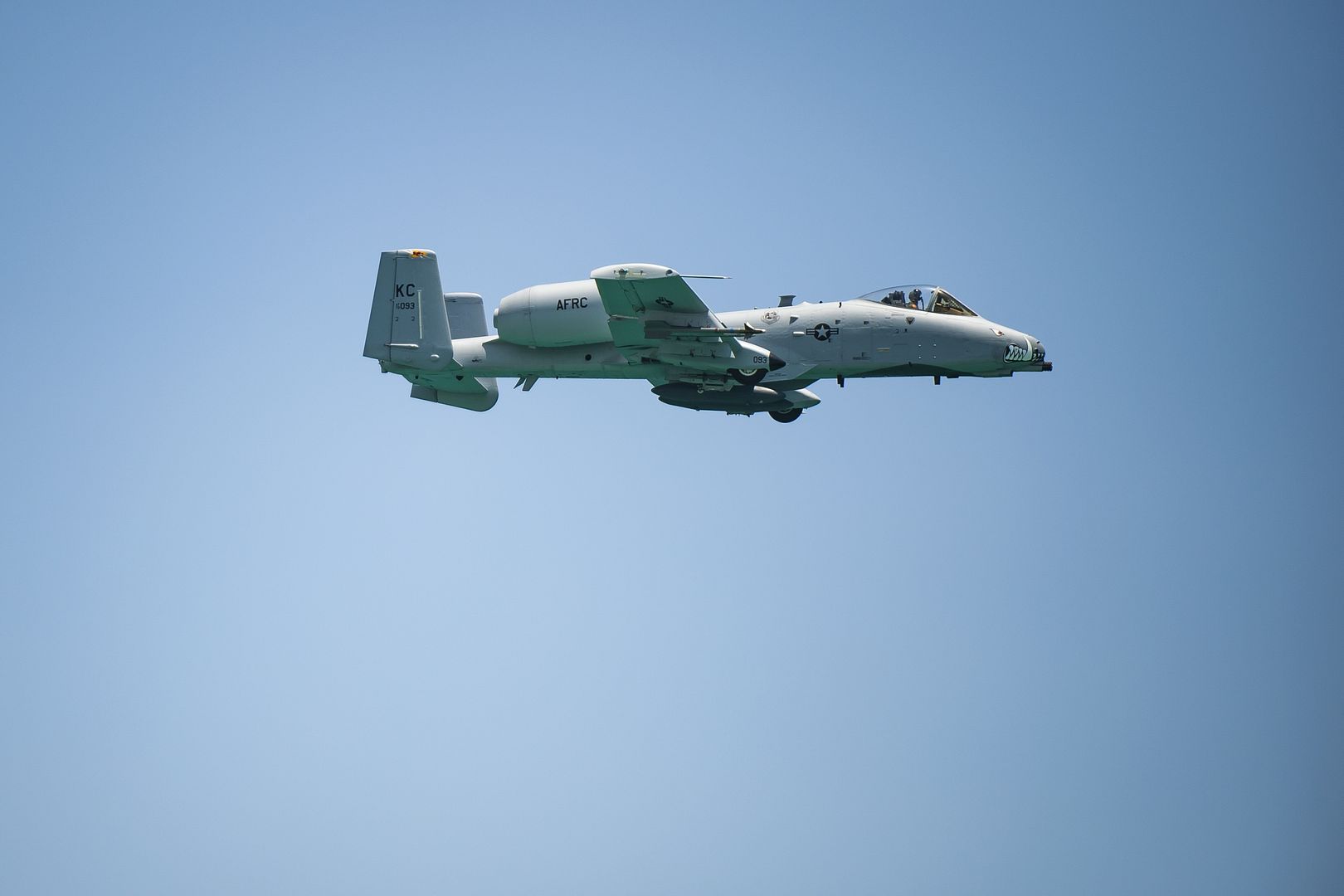
LUKE AIR FORCE BASE, Ariz. -- AM-5, Norway?s fifth F-35 Lightning II, touches down for the first time May 25, 2017 at Luke Air Force Base, Ariz. With nine countries involved in its development (United States, United Kingdom, Italy, Netherlands, Turkey, Canada, Denmark, Norway and Australia), the F-35 represents a new model of international cooperation, ensuring U.S. and Coalition partner security well into the 21st Century. (U.S. Air Force photo's by Airman 1st Class Caleb Worpel)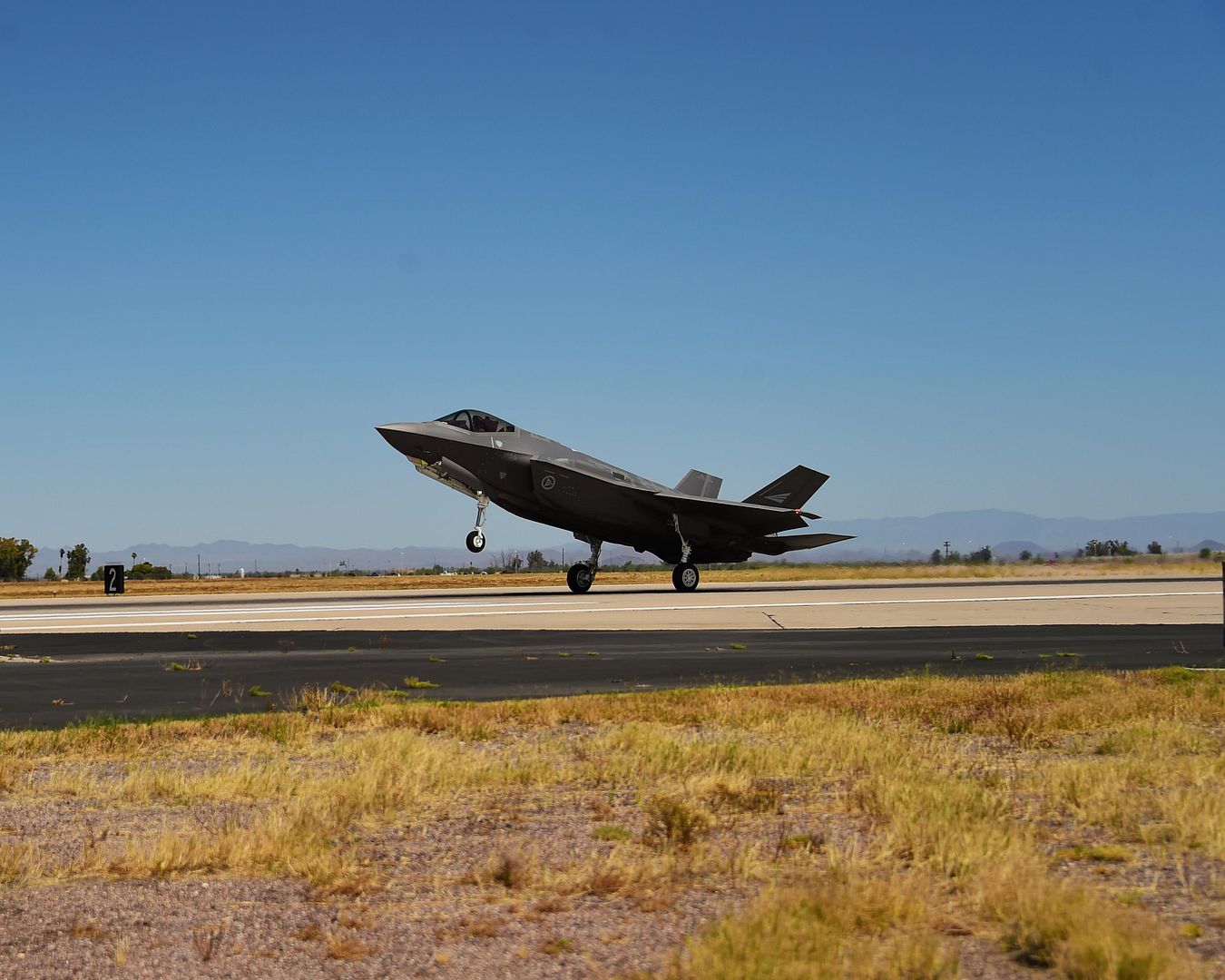
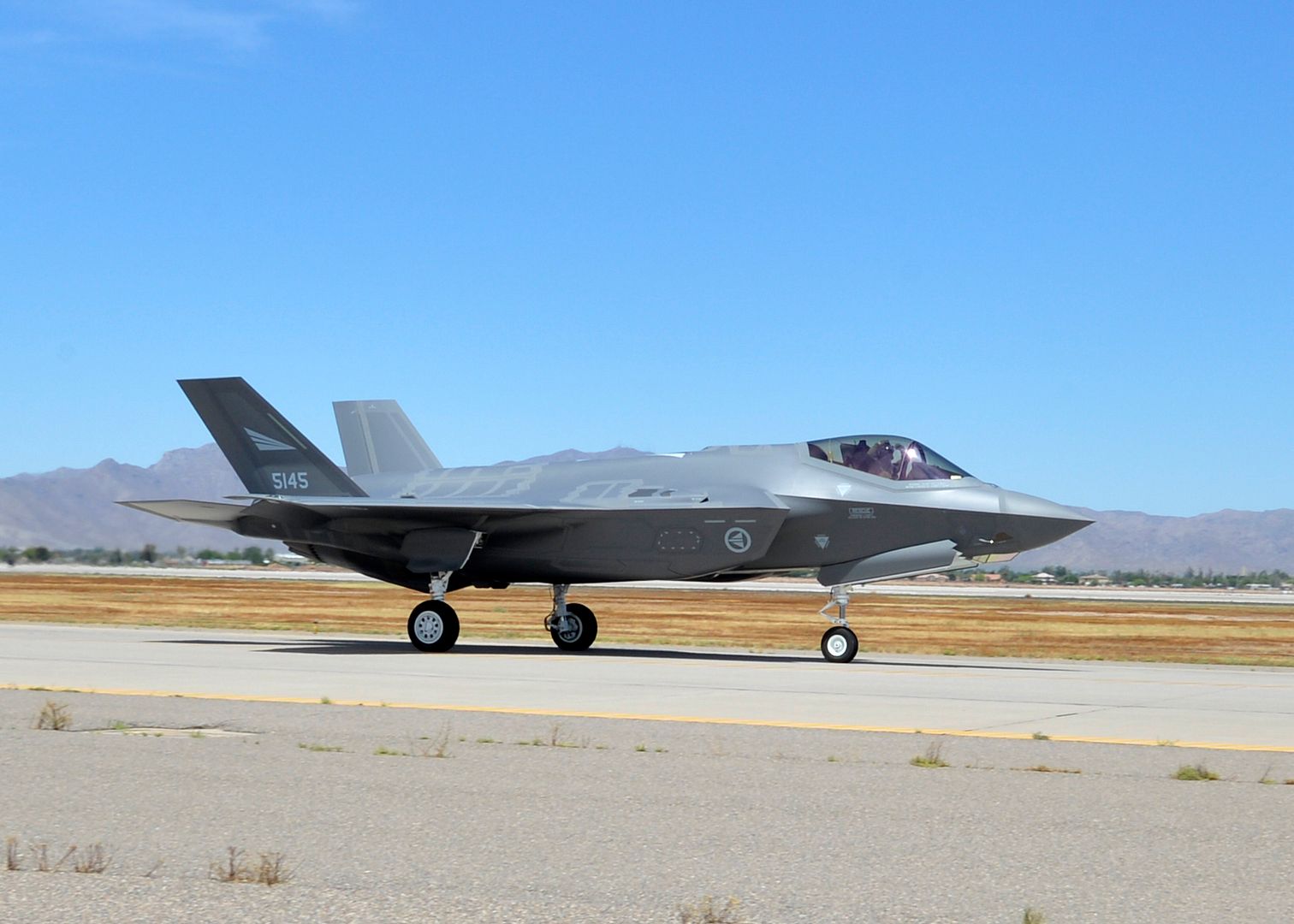
Published time: 28 May, 2017
The Irkut MC-21, Russia?s newest civilian narrow-body airliner, made its long-awaited maiden flight, as confirmed by the producer, which hopes the jet will compete with China?s COMAC C919, the legendary Boeing 737, and the Airbus A320.
The flight on Sunday differed from the plane?s roll-out from the assembly line earlier in May, which was a major media event in Irkutsk.
The MC-21?s maiden flight was first reported by witnesses on social media and later confirmed by Vice Prime Minister Dmitry Rogozin in a Facebook post, in which he said, ?We?re flying,? with several photos attached.
-
 Main AdminU.S. Army UH-60 Black Hawk helicopter pilots assigned to Task Force Warhawk, 16th Combat Aviation Brigade, 7th Infantry Division depart from an undisclosed location near Kandahar, Afghanistan, May 27, 2017. The Warhawks are working hard to support U.S. Forces Afghanistan as part of Operation Freedom's Sentinel and Resolute Support Mission.
Main AdminU.S. Army UH-60 Black Hawk helicopter pilots assigned to Task Force Warhawk, 16th Combat Aviation Brigade, 7th Infantry Division depart from an undisclosed location near Kandahar, Afghanistan, May 27, 2017. The Warhawks are working hard to support U.S. Forces Afghanistan as part of Operation Freedom's Sentinel and Resolute Support Mission.
Photo's by Capt. Brian Harris.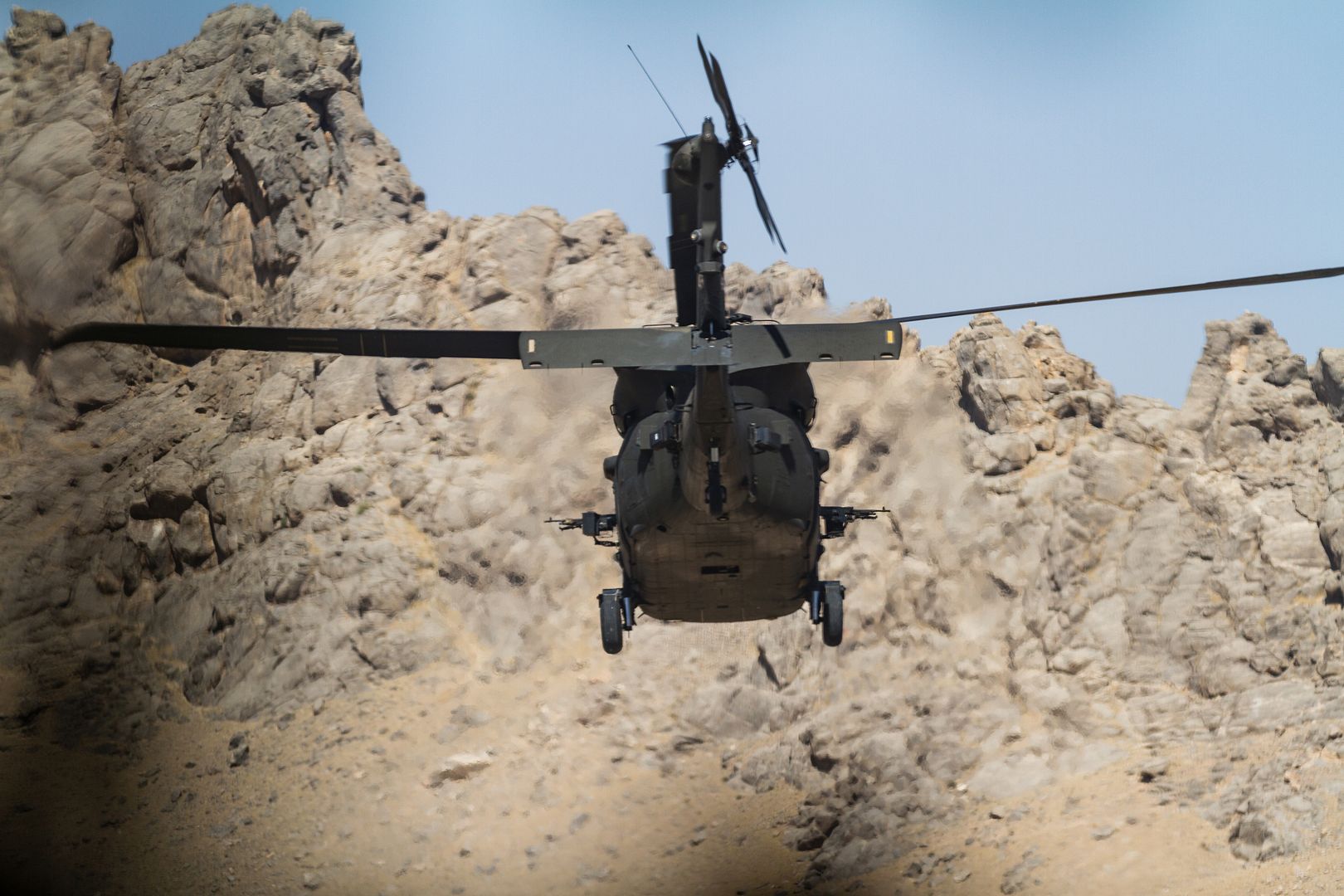
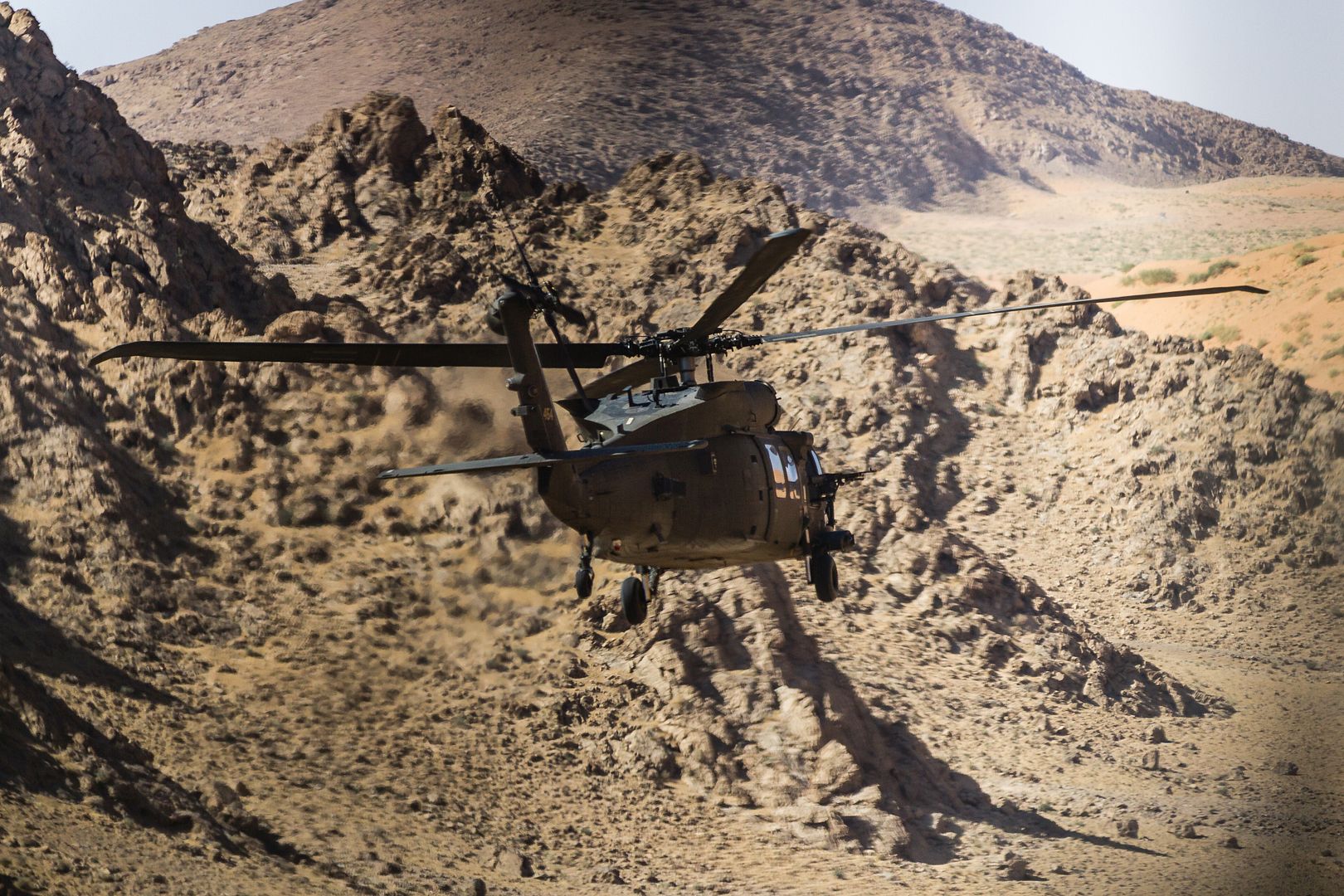
A U.S. Air Force F-15E Strike Eagle receives fuel from a 340th Expeditionary Air Refueling Squadron KC-135 Stratotanker during a flight in support of Operation Inherent Resolve May 23, 2017. The KC-135 provides aerial refueling capabilities as it supports U.S. and coalition forces as they work to liberate territory and people under the control of ISIS. (U.S. Air Force photo's by Staff Sgt. Trevor T. McBride)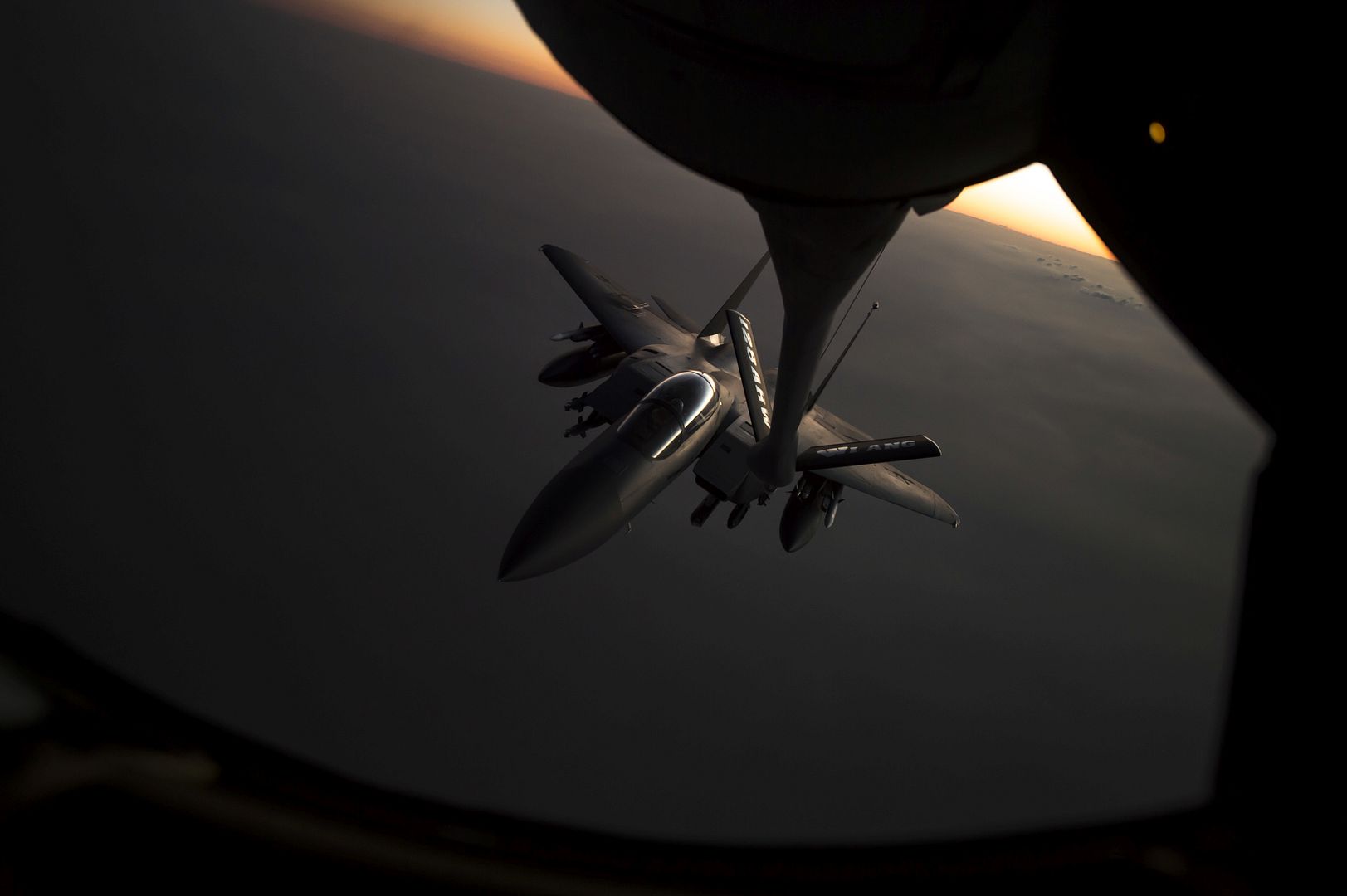

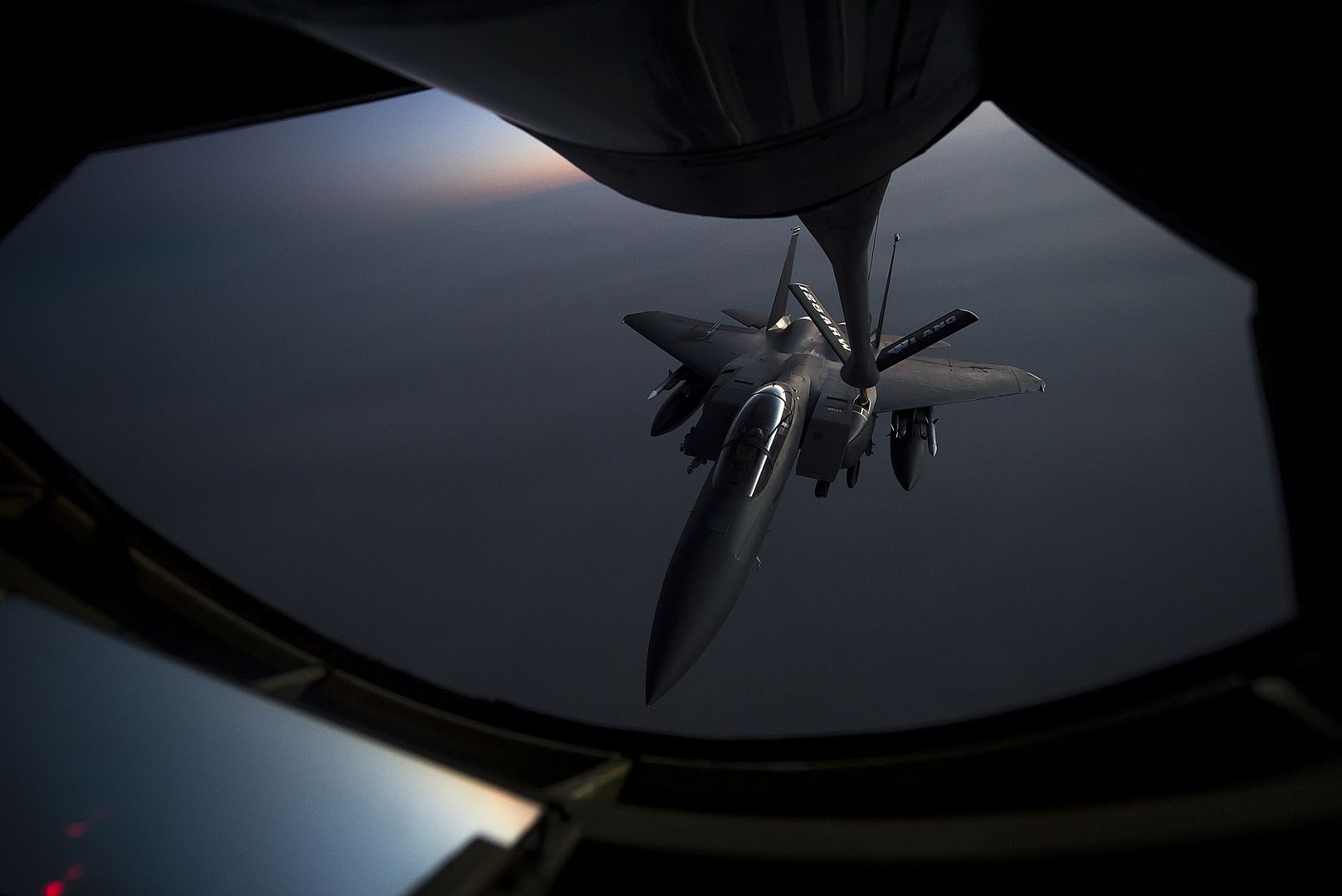
A U.S. Air Force F-16 Fighting Falcon departs after receiving fuel from a 340th Expeditionary Air Refueling Squadron KC-135 Stratotanker during a flight in support of Operation Resolute Support May 25, 2017. The 340th EARS, part of U.S. Air Forces Central Command, is responsible for delivering fuel for U.S. and coalition forces, enabling a persistent 24/7 presence in the area of responsibility. (U.S. Air Force photo by Staff Sgt. Trevor T. McBride)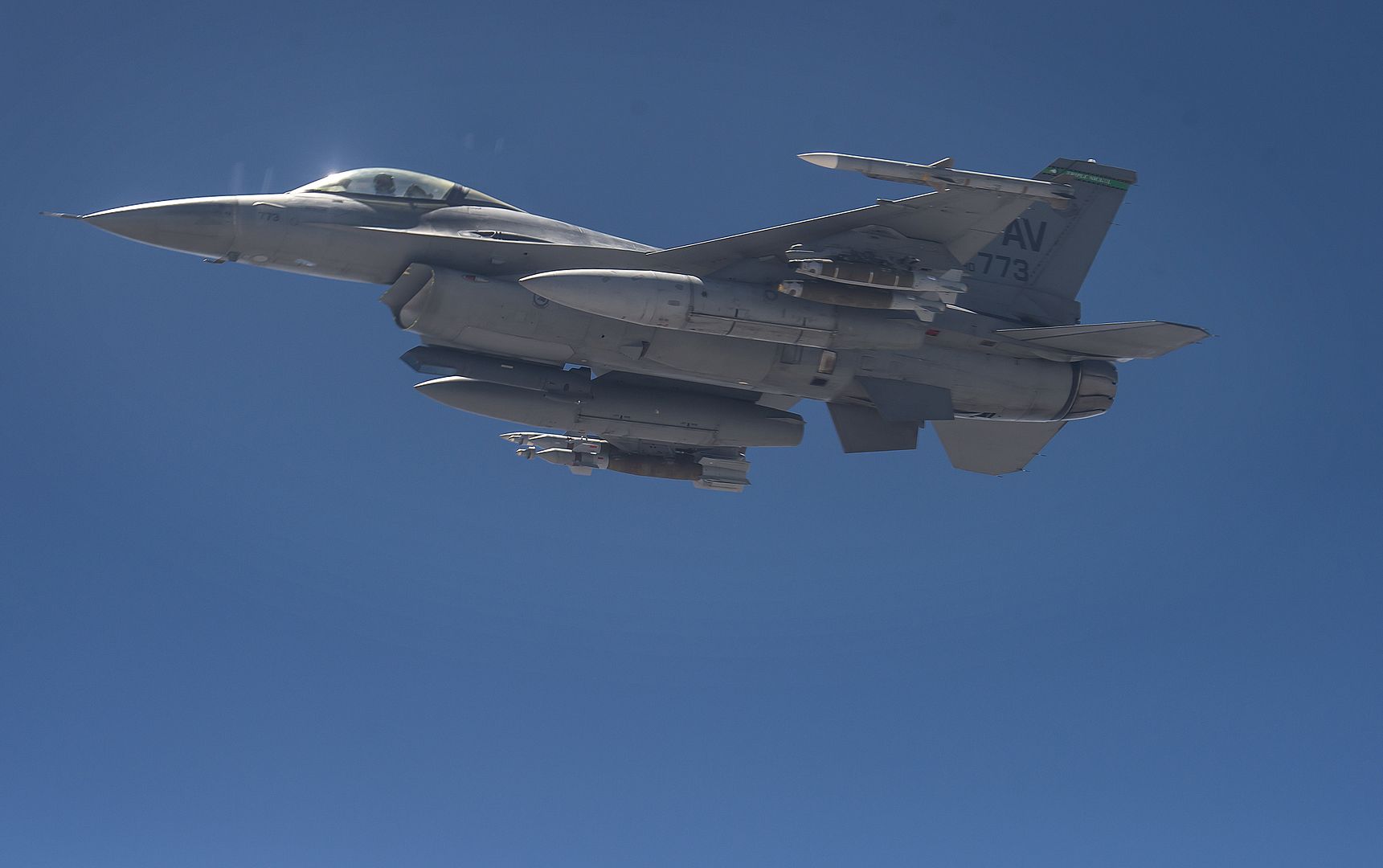
-
 Main AdminWATERS SOUTH OF JAPAN (May 28, 2017) An MH-60S Sea Hawk helicopter assigned to the ?Golden Falcons? of Helicopter Sea Combat Squadron (HSC) 12 practices evasive maneuvers and dispenses MJU-32 flares to simulate combating a guided missile threat. HSC-12 is embarked aboard the Navy's forward-deployed aircraft carrier, USS Ronald Reagan (CVN 76). Ronald Reagan, the flagship of Carrier Strike Group 5, provides a combat-ready force that protects and defends the collective maritime interests of its allies and partners in the Indo-Asia-Pacific region. (U.S. Navy photo by Mass Communications Specialist 2nd Class Nathan Burke/Released)
Main AdminWATERS SOUTH OF JAPAN (May 28, 2017) An MH-60S Sea Hawk helicopter assigned to the ?Golden Falcons? of Helicopter Sea Combat Squadron (HSC) 12 practices evasive maneuvers and dispenses MJU-32 flares to simulate combating a guided missile threat. HSC-12 is embarked aboard the Navy's forward-deployed aircraft carrier, USS Ronald Reagan (CVN 76). Ronald Reagan, the flagship of Carrier Strike Group 5, provides a combat-ready force that protects and defends the collective maritime interests of its allies and partners in the Indo-Asia-Pacific region. (U.S. Navy photo by Mass Communications Specialist 2nd Class Nathan Burke/Released)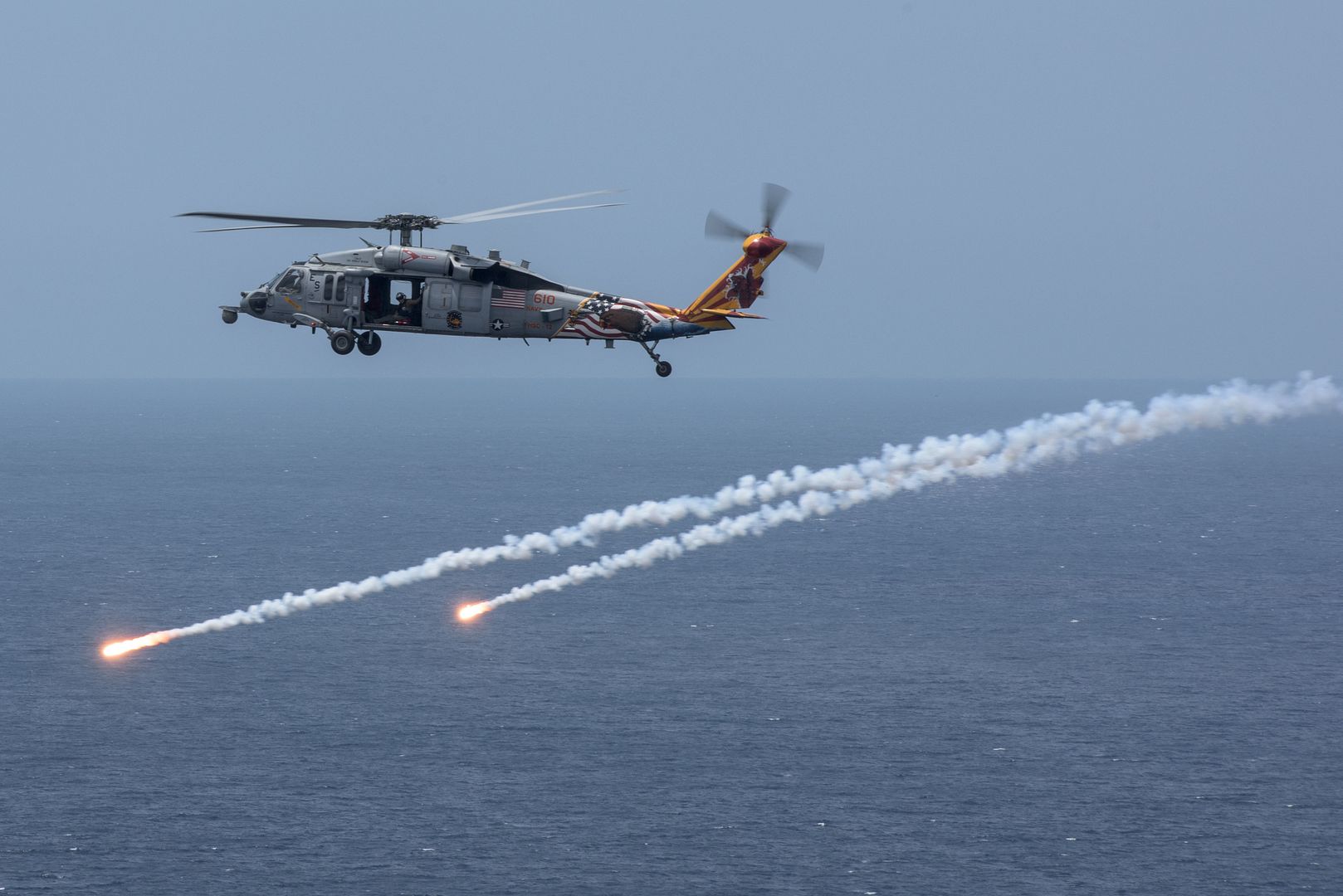
WATERS SOUTH OF JAPAN (May 27, 2017) An MH-60S Sea Hawk helicopter assigned to the ?Golden Falcons? of Helicopter Sea Combat Squadron (HSC) 12 prepares to land on the flight deck of the Navy?s forward-deployed aircraft carrier, USS Ronald Reagan (CVN 76). Ronald Reagan, the flagship of Carrier Strike Group 5, provides a combat-ready force that protects and defends the collective maritime interests of its allies and partners in the Indo-Asia-Pacific region. (U.S. Navy photo by Mass Communications Specialist 2nd Class Nathan Burke/Released)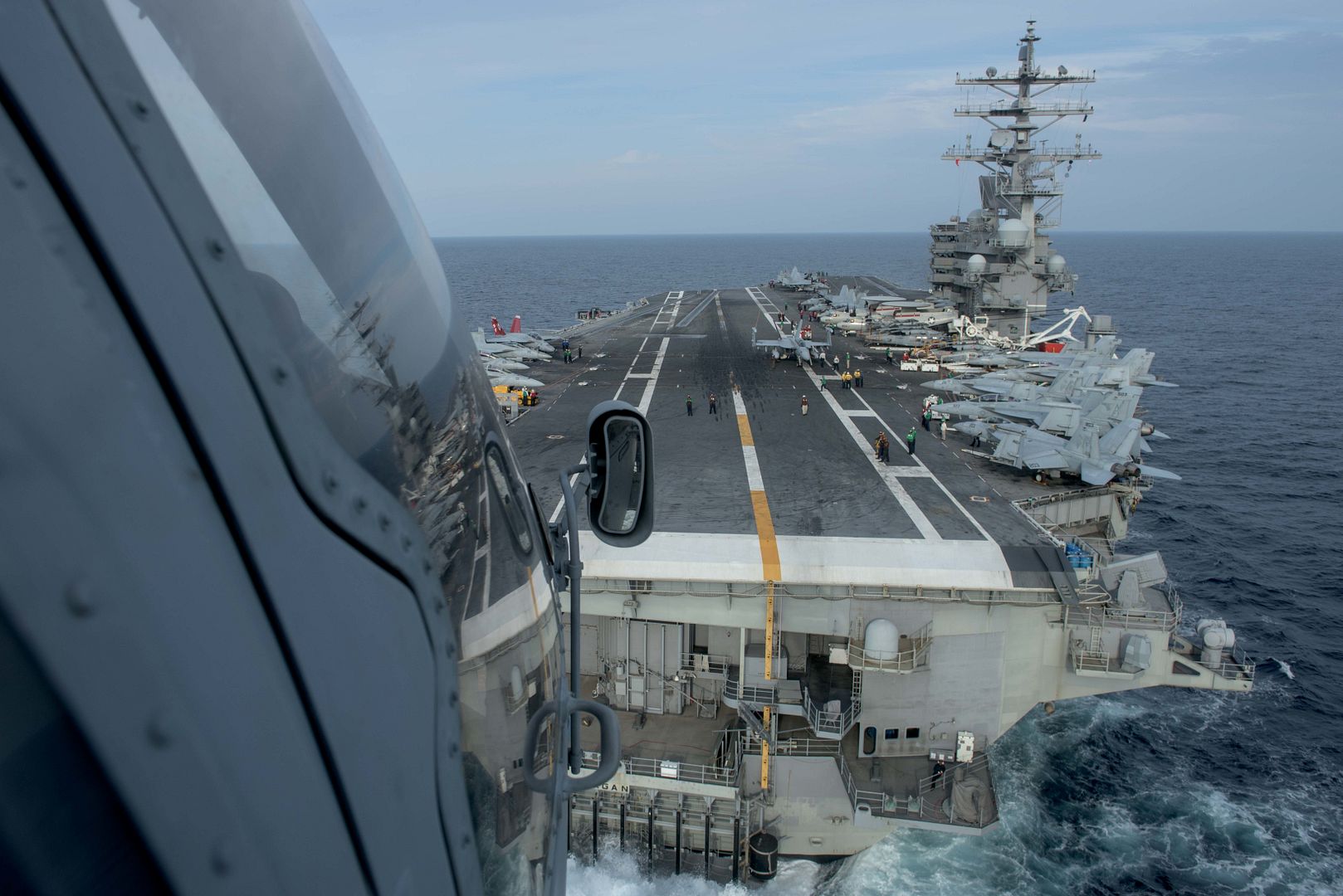
EDWARDS AIR FORCE BASE, Calif. --
A KC-46A Pegasus has entered the Benefield Anechoic Facility for the first time.
The new aerial refueling tanker is undergoing tests to demonstrate that it meets Federal Aviation Administration certification requirements and DOD electromagnetic environmental effects requirements for systems. These tests include shielding effectiveness, emission control and high intensity radiated fields.
The tests are to confirm that the KC-46A systems do not suffer performance degradation that would prevent mission completion when subjected to the external radio frequency environment and that undesirable emissions are controlled.
The tests are being conducted in the BAF to provide an electromagnetically controlled environment suitable for critically sensitive radio frequency measurements.
The BAF, operated by the 772nd Test Squadron, is the largest anechoic chamber in the world and can fit most aircraft inside. It provides a location where electronic warfare tests can be conducted without radio frequency interference from the outside world. The chamber is filled with polyurethane and polyethylene pyramids designed to stop reflections of electromagnetic waves. The size of the pyramids, which are painted dark blue or black, varies depending on the particular frequency and test procedure being conducted. Aircraft systems can be tested and verified that they work properly prior to actual flying.
?It also provides efficient testing that requires a large amount of high power RF radiation whereas outdoors this would be very restrictive, typically limited to shorter nighttime test operations,? said Delia Reyes, 772nd TS project lead engineer.
Participants in the test include Boeing, 772nd Test Squadron, 418th Flight Test Squadron and the Naval Surface Warfare Center Dahlgren Division.
Three specialized, high-power electromagnetic radiating trailers are being used for the tests.
The Air Force?s KC-46A tanker modernization program is among the Air Force's highest acquisition priorities, program managers say. Being able to refuel military aircraft in the air is critical to the U.S. military's ability to effectively operate globally. The Air Force initiated the KC-46 program to replace about a third of its aging KC-135 Stratotanker fleet, they say.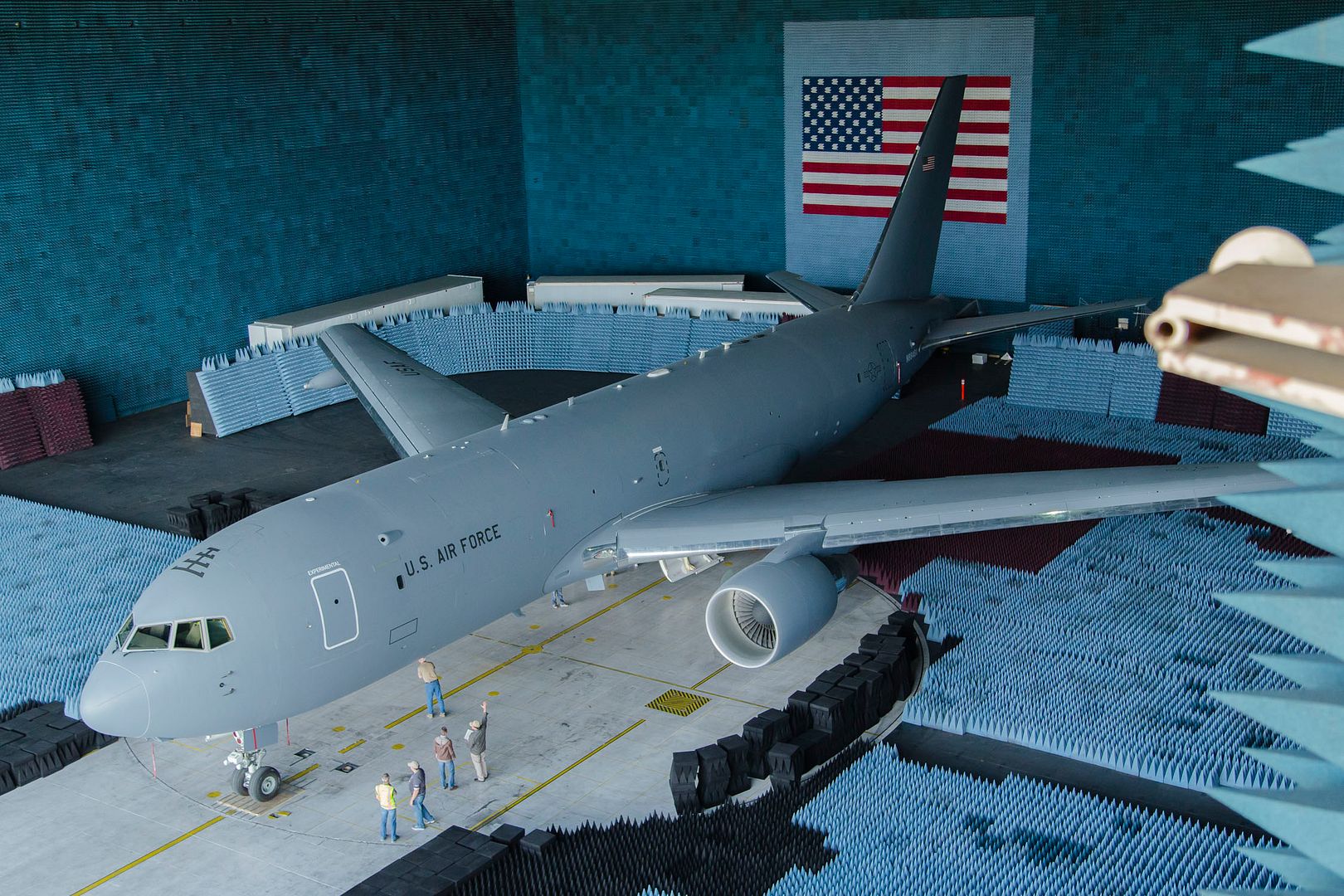
The KC-46A is designed to provide improved capability, including boom and drogue refueling on the same sortie; worldwide navigation and communication; airlift capability on the entire main deck floor; receiver air refueling; improved force protection and survivability; and multi-point air refueling capability.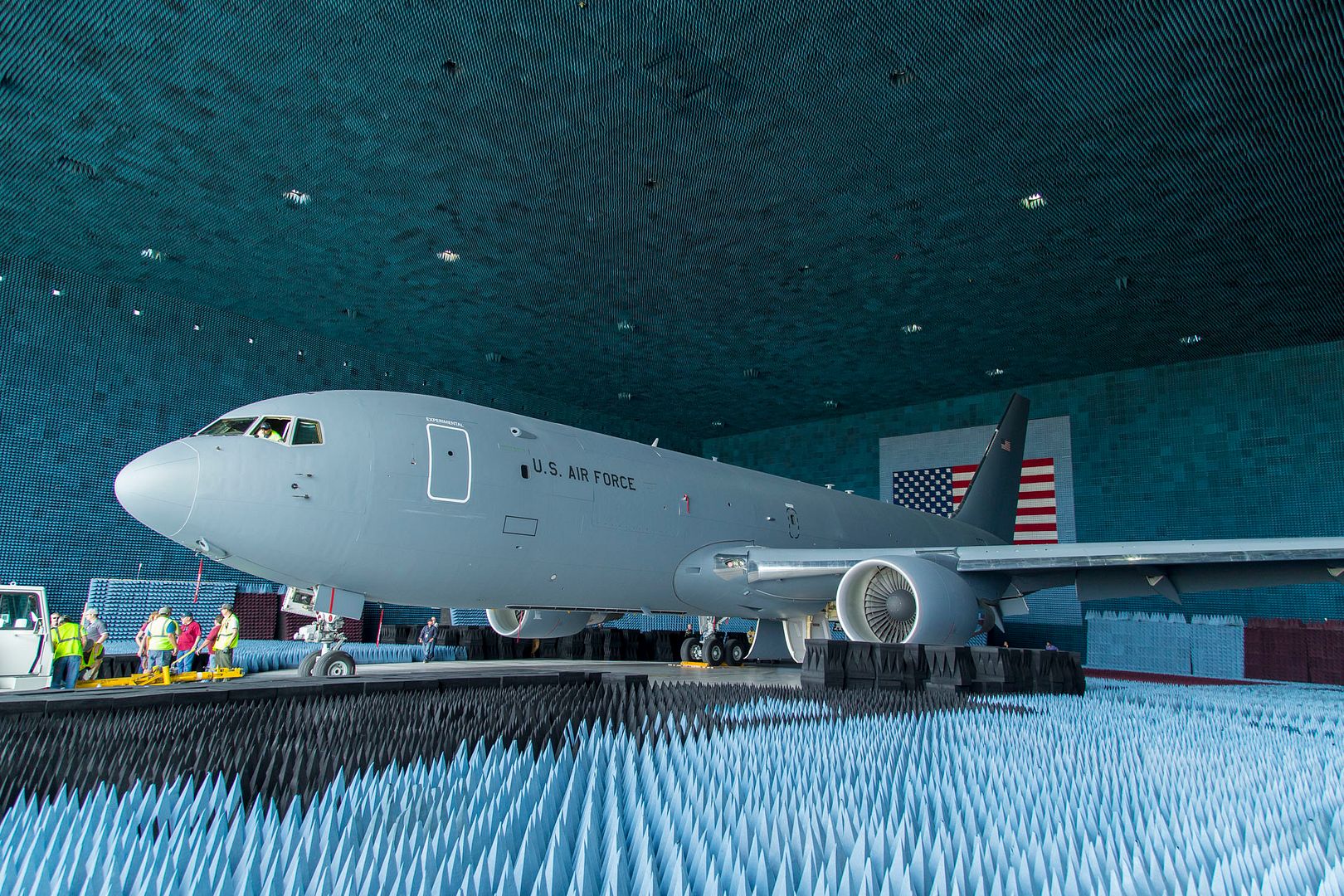
STRATFORD, Conn., May 30, 2017 /PRNewswire/ -- Lockheed Martin (NYSE: LMT) today announced it successfully reached a key milestone ? the Air Vehicle Critical Design Review (CDR) ? for the U.S. Air Force's Combat Rescue Helicopter (CRH) program. This event prepares the program to proceed to assembly, test, and evaluation of the HH-60W helicopter.
The joint Sikorsky and U.S. Air Force (USAF) helicopter program team met in May with key partners from government and industry for an in-depth design review. Throughout the review, the CRH team successfully presented a design that participants were confident would meet system requirements. Review participants included leaders from USAF and key suppliers who took part in the technical presentations.
"This milestone is an important achievement and demonstrates Sikorsky and the Air Force are well aligned on the technical requirements of the HH-60W," said Tim Healy, Sikorsky CRH program director. "We got here by conducting several milestones on or ahead of schedule, and we are committed to staying on that track as we build the first HH-60W aircraft."
In preparation for the CDR, the joint team generated more than 300 technical documents, created and reviewed over 50,000 hardware and software requirements, conducted 17 sub-system CDRs and designed 3,000 new parts. "The joint team did an outstanding job in documenting the design of the HH-60W," said Jim Andrews, Sikorsky CRH chief engineer. "We are excited to enter the build phase as the team has leveraged digital design tools to generate manufacturing efficiencies that will reduce cost and schedule. This approach will lead ultimately to the HH-60W becoming the first Black Hawk derivative to have a paperless assembly line."
The USAF awarded Sikorsky the $1.28 billion Engineering Manufacturing & Development (EMD) contract in June 2014, which includes development and integration of the next generation combat rescue platform and mission systems, delivery of four HH-60W helicopters, aircrew and maintenance training systems, and support for both. In January of 2017, the USAF exercised a $203 million contract option with Sikorsky to provide five additional aircraft, bringing the total to nine. The training suite includes devices that span full-motion simulators and discrete aircraft systems, such as hoist and landing gear.
The USAF Program of Record calls for 112 helicopters to replace the Air Force's rapidly aging HH-60G Pave Hawk helicopters, which perform critical combat search and rescue and personnel recovery operations for all U.S. military services.
The HH-60W is an advanced variant of the UH-60M Black Hawk helicopter design and features increased internal fuel capability for greater range. The CRH aircraft will feature GE T700-701D engines, composite wide-chord main rotor blades to sustain maneuverability at high density altitudes, and a new fatigue- and corrosion-resistant machined aero-structure to ensure reliability and availability to USAF operational units. The design includes an advanced Tactical Mission Kit integrating multiple sensors, data links, defensive systems, and other sources of intelligence information for use by combat rescue aircrews. The aircraft is designed with a weapons and cabin configuration specifically optimized for combat rescue and recovery operations.
"Conducting the Air Vehicle CDR demonstrates this helicopter system is well on its way to meeting the key program requirements of the Air Force," said Dave Schairbaum, USAF, CRH System Program Manager. "Successful execution of the program is essential to meet the continued demanding personnel recovery mission in today's challenging operational environment. We are working closely with Sikorsky to assure this newly designed aircraft meets the requirements, is affordable and is delivered on schedule to the warfighter."
The CRH and USAF teams will meet again in September for the Training Systems Critical Design Review.
This press release contains forward looking statements concerning opportunities for development, production and sale of helicopters. Actual results may differ materially from those projected as a result of certain risks and uncertainties, including but not limited to changes in government procurement priorities and practices, budget plans, availability of funding and in the type and number of aircraft required; challenges in the design, development, production and support of advanced technologies; as well as other risks and uncertainties including but not limited to those detailed from time to time in Lockheed Martin Corporation's Securities and Exchange Commission filings.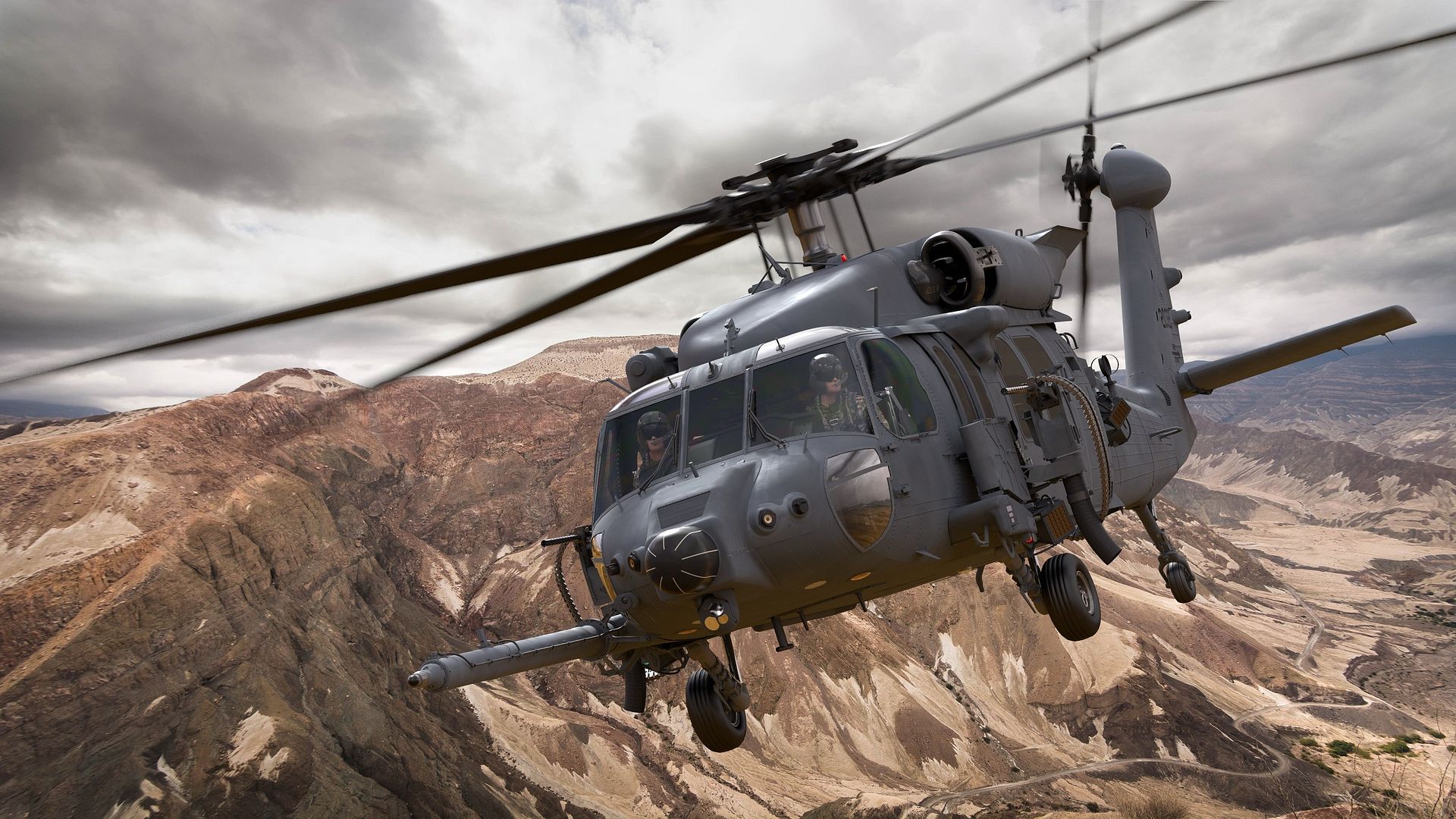
Leonardo Helicopters and IMP Aerospace & Defence (IMP) are pleased to announce that
?Team Cormorant? has been re-established to support the modernization of the Royal Canadian Air
Force?s (RCAF) fleet of EH101/CH-149 Cormorant Search and Rescue (SAR) helicopters and expansion of the fleet through the conversion of AW101-519 helicopters.
Team Cormorant comprises Leonardo Helicopters, the Original Equipment Manufacturer of the
EH101 and AW101 helicopters; IMP, the Prime Contractor for Cormorant In-Service Support; and
other key Canadian companies who will supply and support critical aircraft components, technology, systems, simulation and training.
The Cormorant Mid-Life Upgrade (CMLU) and Conversion Program proposed by Team Cormorant will create a fleet of the worlds most advanced and capable Search and Rescue helicopters available today, to meet the RCAF?s ?no fail? Search and Rescue mandate for the next 25 years.
It combines the current fleet of 14 Cormorant helicopters with additional helicopters obtained by
the Government of Canada when it acquired the assets of the U.S. VH-71 presidential helicopter
program, currently in storage at IMP Aerospace in Halifax. The CMLU and Conversion Program offers a single, common fleet incorporating the latest avionic and mission systems, advanced radars and sensors, vision enhancement and tracking systems.
The Canadian Government recently cited the Cormorant Mid-Life Upgrade (CMLU) program and the critical importance of the Cormorant in providing a vital SAR service that Canadians rely on. The CMLU will provide capability improvements to enhance its overall mission effectiveness and return the primary Rotary Wing Search and Rescue (RWSAR) helicopter to CFB Trenton, covering the Great Lakes region up to the High Arctic.
Team Cormorant?s CMLU program also offers significant reductions in cost of ownership and will
deliver the conversion without reducing the current Search and Rescue aircraft availability,
culminating in the expansion of service from three main SAR bases to four.
?Through Team Cormorant, Leonardo Helicopters will be able to deliver significant industrial
technology benefits and a value proposition that will transfer new skills and knowledge to Canada,
creating and sustaining more than 360 high-skilled jobs across the country,? said John Ponsonby,
Leonardo Helicopters UK Managing Director. ?The Cormorant CMLU will deliver Canada the most advanced and capable, state-of-the-art Search and Rescue helicopter available anywhere in the world today or the foreseeable future and the best value for Canada.?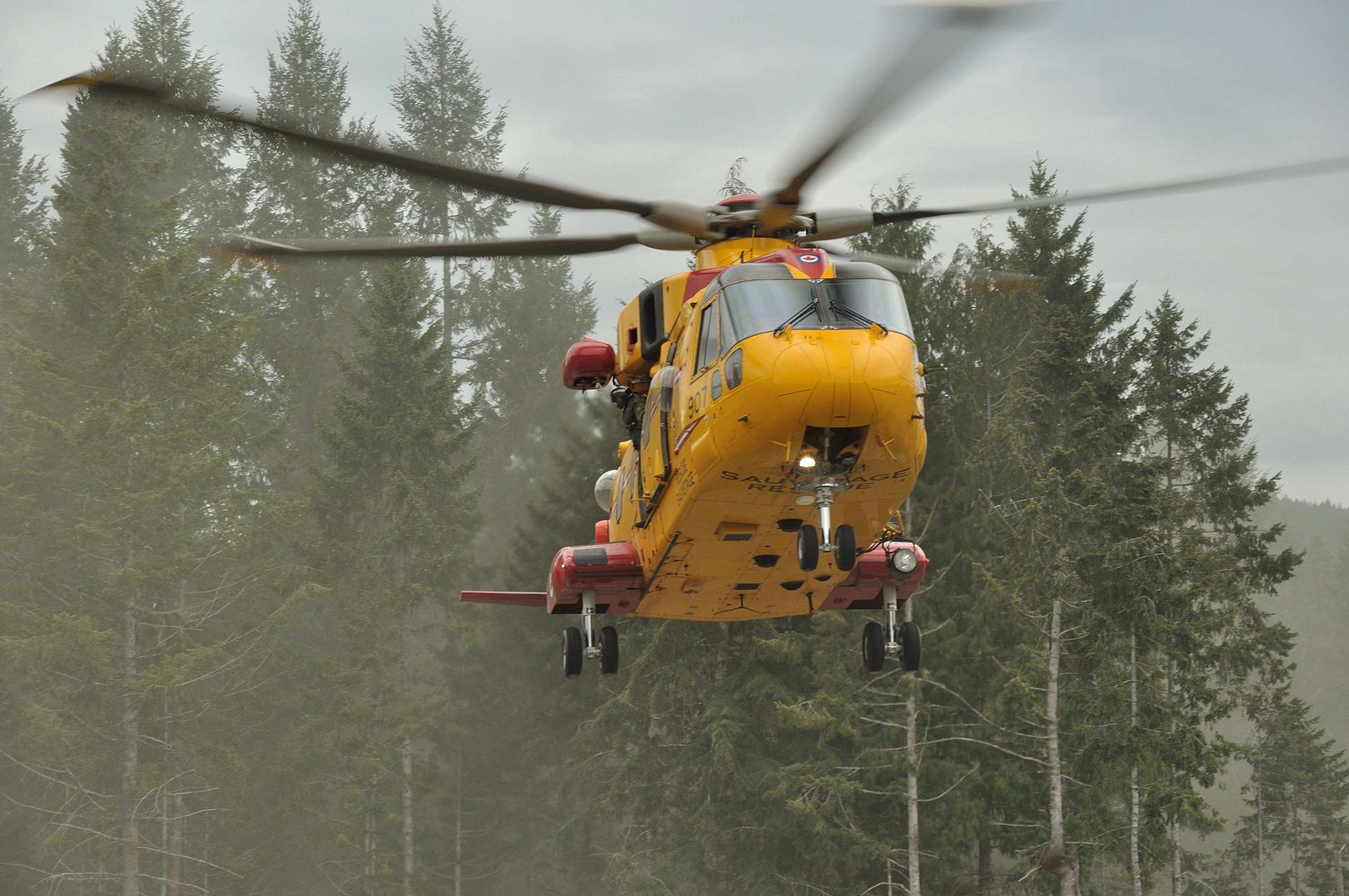
?IMP Aerospace & Defence has provided full turn-key In Service Support to the CH-149 Cormorant Search and Rescue fleet since its entry into service in the year 2000. The CH-149 fleet is actively operated by the RCAF across Canada delivering essential life-saving missions to Canadians in distress. The fleet has clocked more flight hours than any other AW101 fleet in the world and now requires an upgrade to ensure continued cost effective service into the future.? said David Gossen, President of IMP Aerospace & Defence. ?Canada has an amazing opportunity to further enhance SAR delivery to central and northern Canada and beyond through the conversion of VH-71 aircraft.?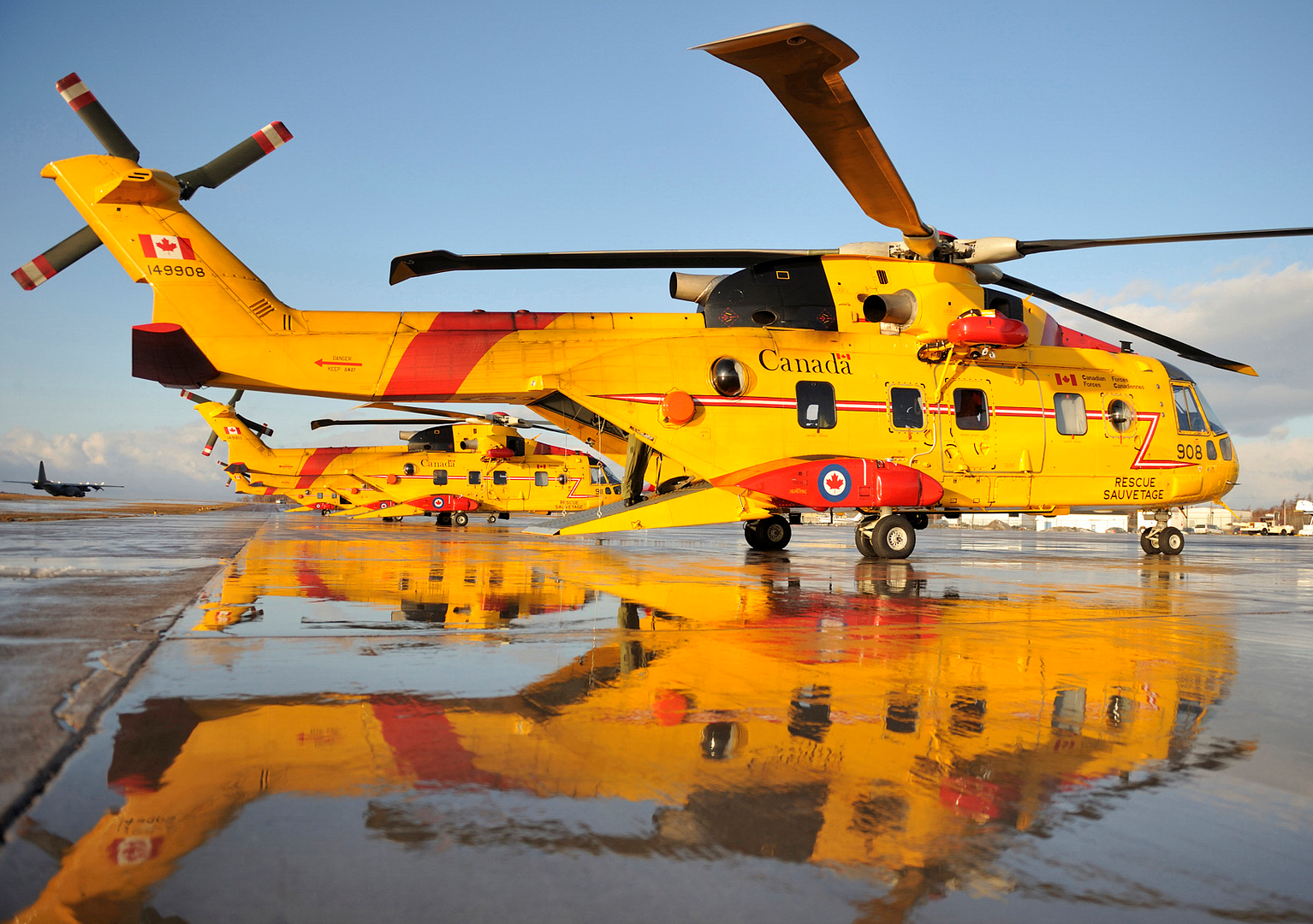
-
 Main AdminHILL AIR FORCE BASE, Utah (AFNS) -- The 3,000th F-35A Lighting II sortie departed Hill Air Force Base generated by maintainers from the active duty 388th Fighter Wing and Air Force Reserve?s 419th FW May 22, 2017.
Main AdminHILL AIR FORCE BASE, Utah (AFNS) -- The 3,000th F-35A Lighting II sortie departed Hill Air Force Base generated by maintainers from the active duty 388th Fighter Wing and Air Force Reserve?s 419th FW May 22, 2017.
That sortie, and all others flown that day were carried out with the new version of the Autonomic Logistics Information System. Commonly called ALIS, it?s the F-35A?s information technology infrastructure.
The 3,000th sortie, with tail number 5079, was piloted by Lt. Col. Dave DeAngelis of the 419th FW.
Airman 1st Class Michael Wilkins, a crew chief assigned to the 34th Aircraft Maintenance Unit, launched 5079. It was his first solo launch after arriving here a month ago.
?I didn?t even know I was doing it until today,? he said. ?It?s a cool story for the first crew that you?ve done.?
Col. Michael Miles, the 388th Maintenance Group commander, praised the Airmen responsible for the achievements made in the F-35 program.
?Our Airmen are some of the best the Air Force has to offer,? he said. ?The 388th and 419th Maintenance Group personnel are pushing the program forward by unlocking F-35 combat capability, gauging aircraft and equipment durability, and rapidly accomplishing F-35 weapons system training,? he said.
Operationally implementing the upgraded version of ALIS?ALIS 2.0.2.4?is another milestone for the Airmen working in the F-35 program at Hill AFB.
?The biggest improvement is the incorporation of the propulsion system within ALIS,? said Senior Master Sgt. Jory Cyr, the 34th Aircraft Maintenance Unit lead production superintendent. ?This alleviates the need to have multiple products to manually track time change items and inspection times. This ALIS update combines air vehicle and propulsion system times in one location.?
Cyr said aircraft maintainers here attended classes, which highlighted changes between the previous and current versions of ALIS, and a support team was available in each section to answer questions.
?Aircraft maintenance does not stop when we install these new updates so there were numerous man hours spent making sure all the documentation was correct within the new system prior to flying each aircraft,? he said. ?The 34th AMU was able to fly 100 percent of our local scheduled sorties after the upgrade showing the outstanding dedication and attention to detail by everyone within the 388th Fighter Wing.?
The successful ALIS upgrade and F-35 milestones are proving that the Air Force?s newest fifth-generation fighter and the Airmen who maintain it are key to America?s defense.
?The culmination of the ALIS 2.0.2.4 and our 3,000th sortie is important because it highlights how fast the program at large is moving forward and how locally we are generating sorties at a very high rate?with only 22 aircraft assigned,? Miles said. ?For example, in March we flew each of our aircraft an average of 17 times. Our Airmen are out-producing the entire F-35 enterprise and the Hill AFB stand-up of F-35 operations is ahead of schedule.?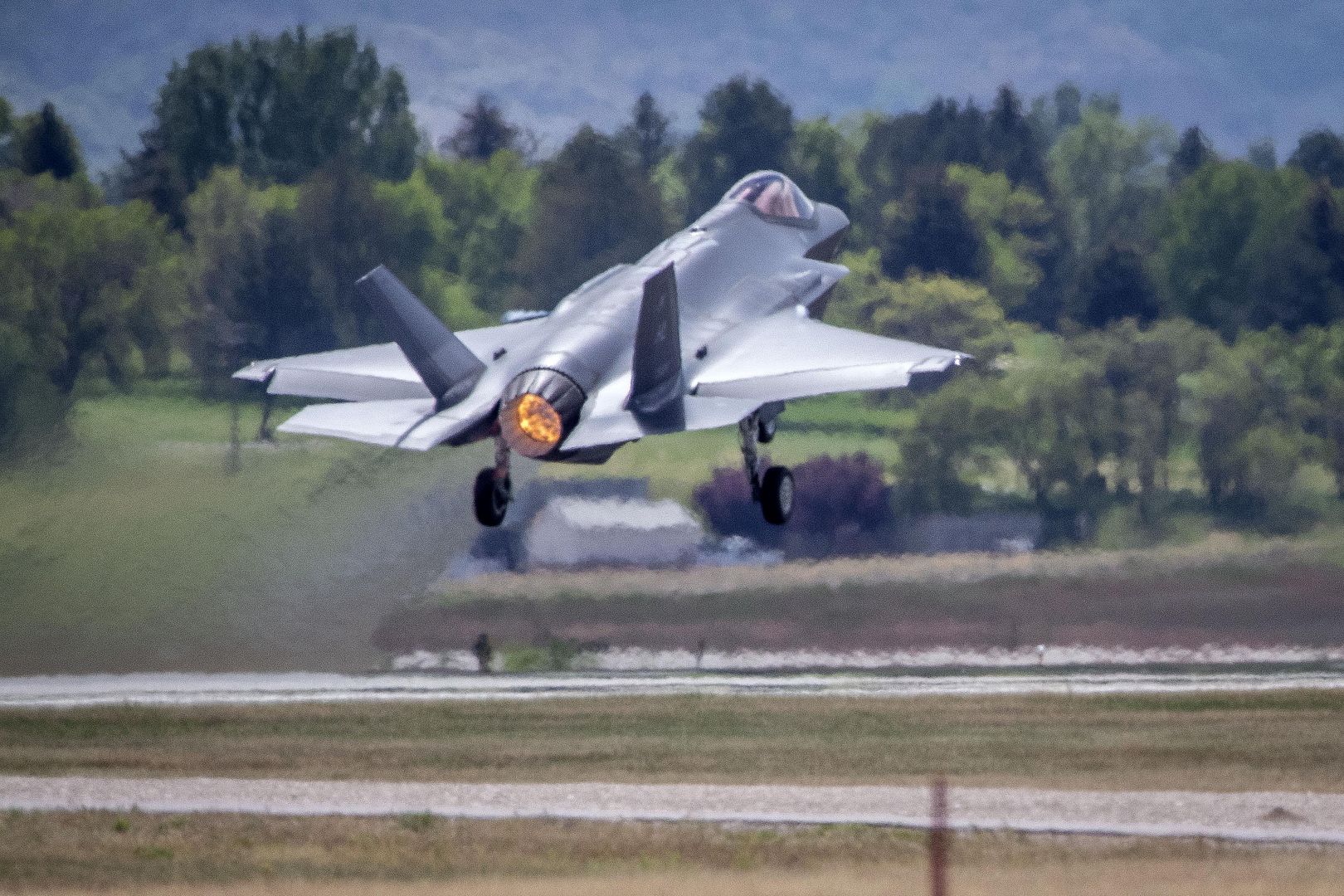
MEDITERRANEAN SEA (May 30, 2017) - An MH-60 Sea Hawk helicopter, assigned to Helicopter Maritime Strike Squadron (HSM) 60 Det. 2, takes off from the Arleigh Burke-class guided-missile destroyer USS Carney (DDG 64) in the Mediterranean Sea May 30, 2017. Carney, forward-deployed to Rota, Spain, is conducting its third patrol in the U.S. 6th Fleet area of operations in support of U.S. national security interests in Europe. (U.S. Navy photo by Mass Communication Specialist 3rd Class Weston Jones/Released)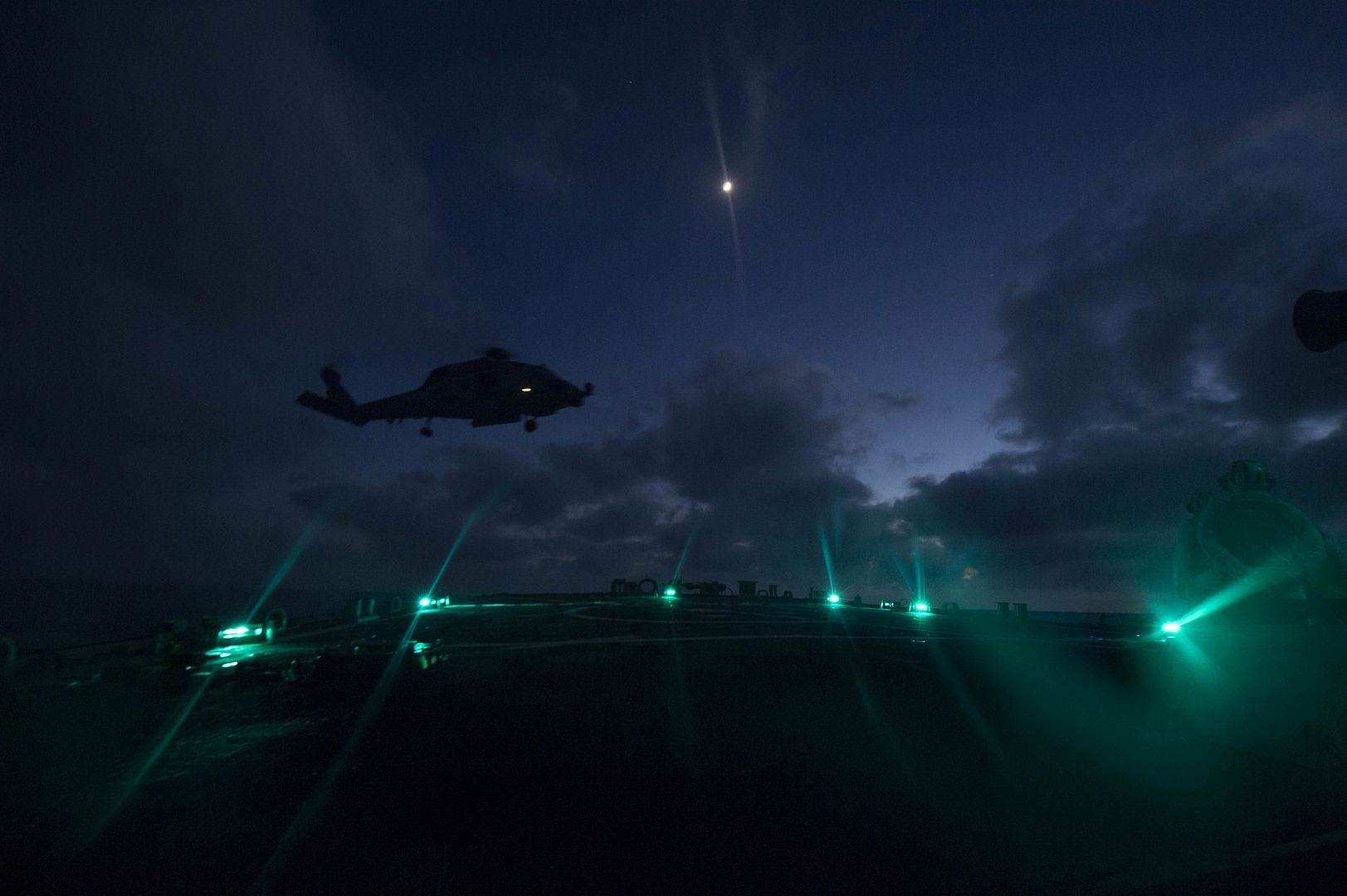
MEDITERRANEAN SEA (May 30, 2017) An MH-60 Sea Hawk helicopter assigned to Helicopter Maritime Strike Squadron (HSM) 60, Det. 2, lands aboard the Arleigh Burke-class guided-missile destroyer USS Carney (DDG 64) in the Mediterranean Sea. Carney, forward-deployed to Rota, Spain, is conducting its third patrol in the U.S. 6th Fleet area of operations in support of U.S. national security interests in Europe. (U.S. Navy photo by Mass Communication Specialist 3rd Class Weston Jones/Released)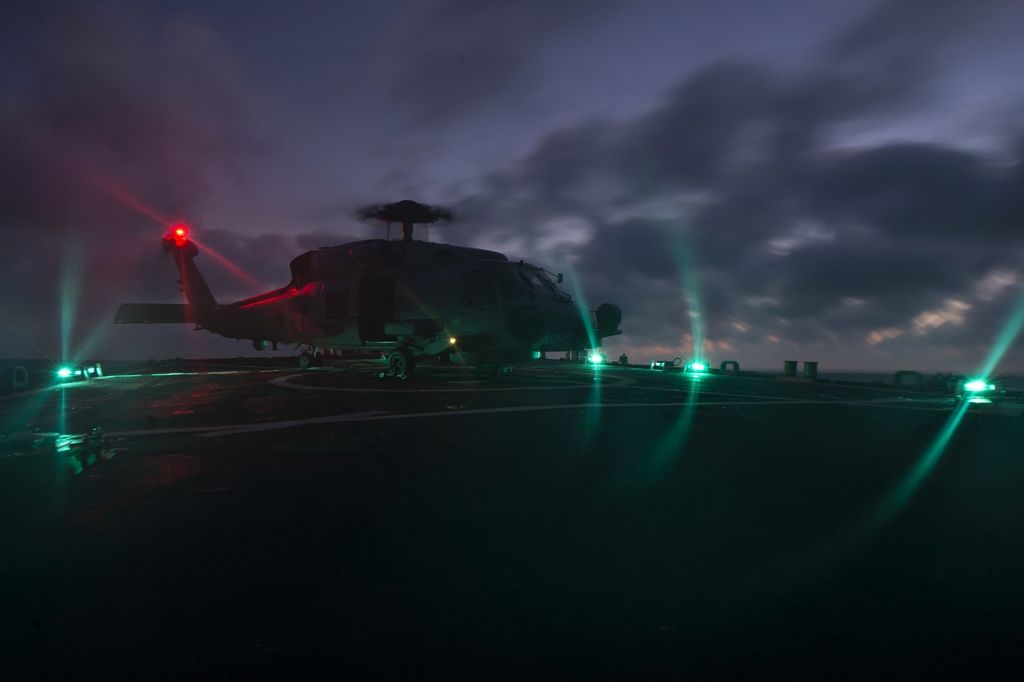
An Oregon Air National Guard F-15 Eagle taxis back along the flightline at Nellis Air Force Base, Nev., after taking part as one of the aggressor team aircraft to support the Weapons Inspection Course, May 30, 2017 (U.S. Air National Guard photo by Master Sgt. John Hughel, 142nd Fighter Wing Public Affairs).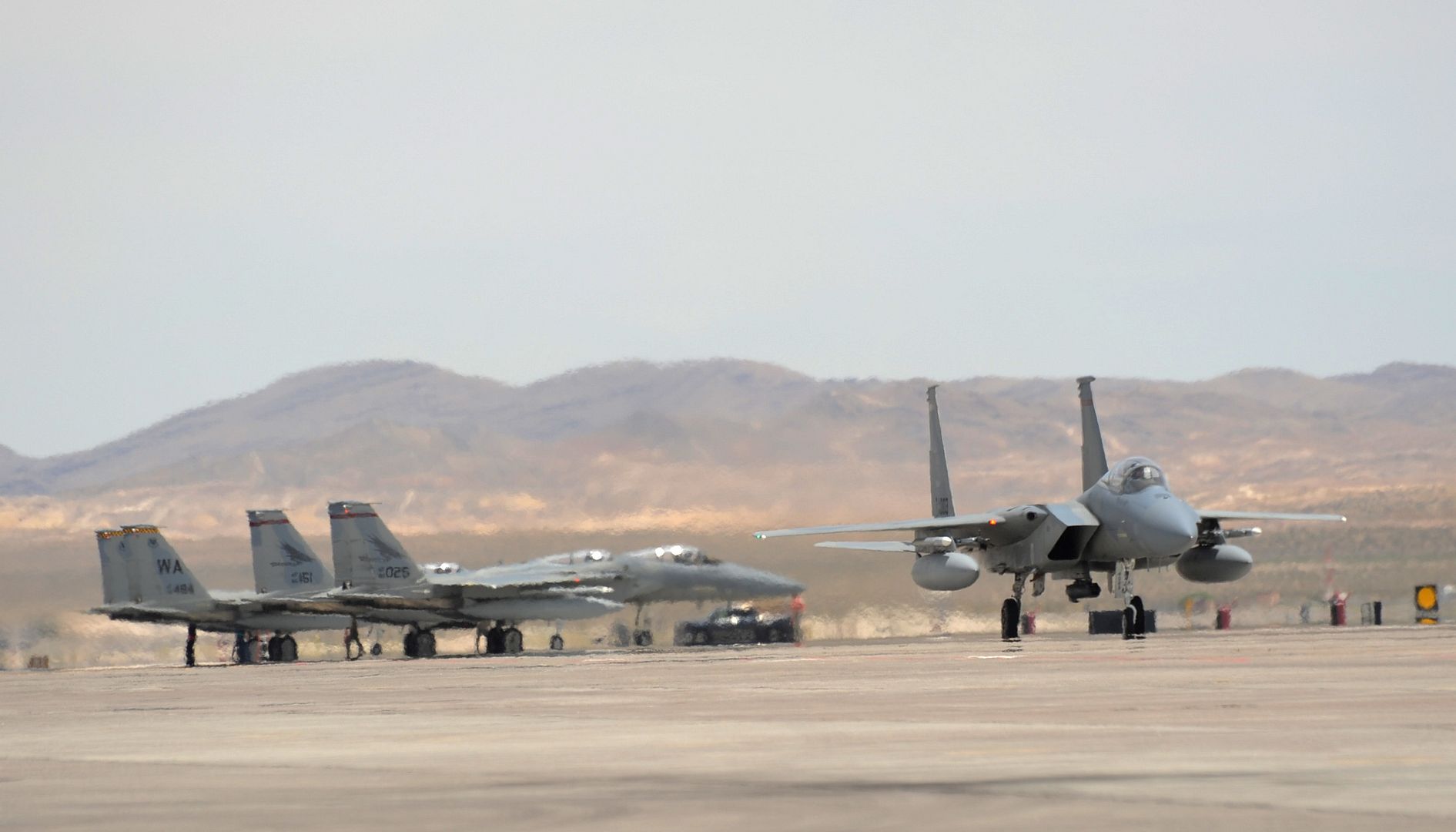
An Oregon Air National Guard crew chief inspects an F-15 Eagle after the aircraft arrives from Portland, Ore., to support the Weapons Inspection Course, at Nellis Air Force Base, Nev., 29, 2017 (U.S. Air National Guard photo by Master Sgt. John Hughel, 142nd Fighter Wing Public Affairs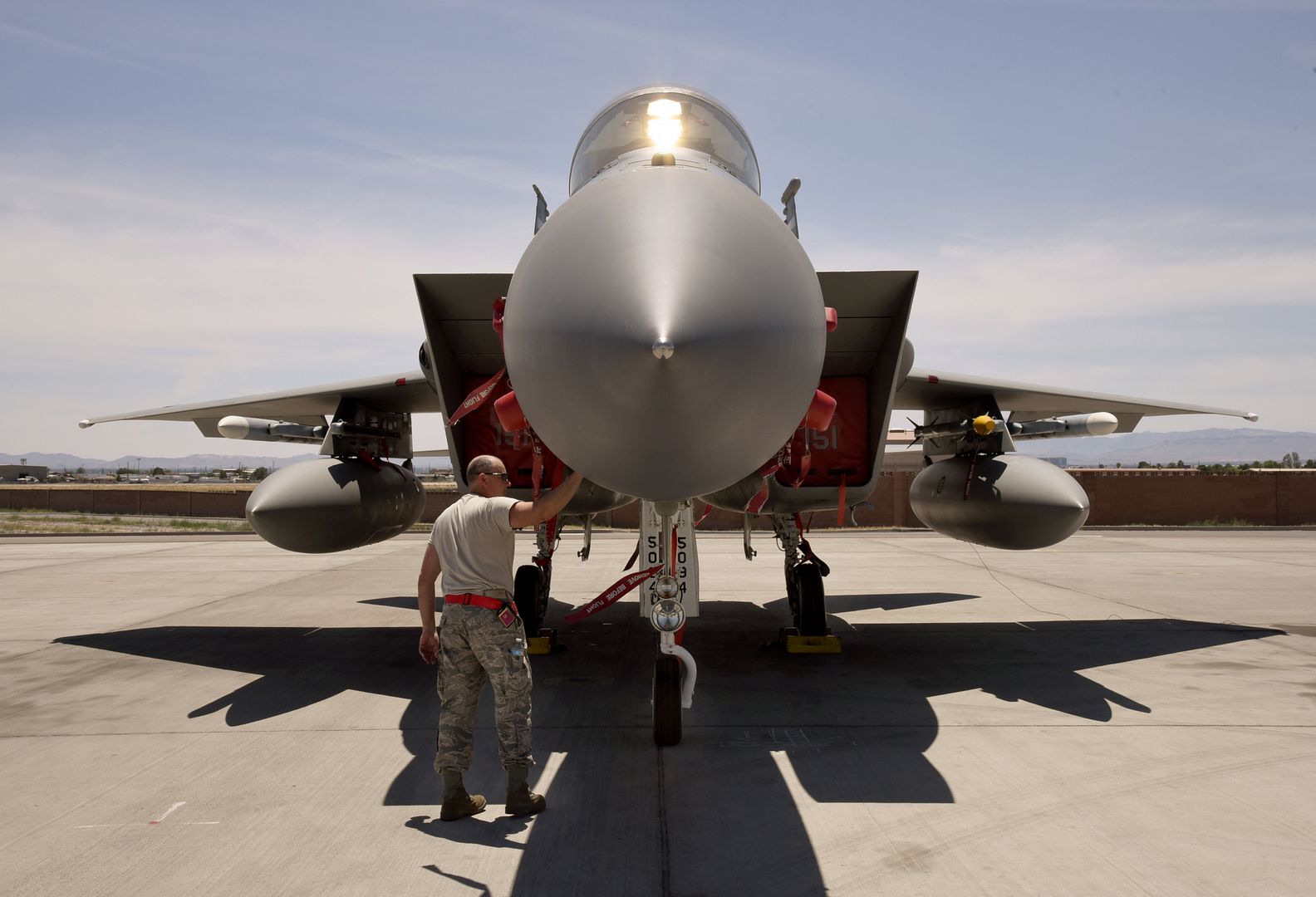
An AH-64D Apache Longbow helicopter with the 1st Battalion, 130th Aviation Regiment, North Carolina Army National Guard, flies over the assembly area of the 1st Battalion, 204th Air Defense Artillery Regiment May 30, 2017 at the National Training Center, Fort Irwin, California. (Mississippi National Guard photo by Spc. Justin Humphreys, 102d Public Affairs Detachment)
Three U.S. Air Force F-16 Fighting Falcons assigned to the 480th Fighter Squadron fly in formation over Spangdahlem Air Base, Germany, May 30, 2017. The 185th Air Refueling Wing Air National Guard of Sioux City, Iowa will be conducting air-to-air refueling training May 21 ? June 2. (U.S. Air Force photo by Senior Airman Dawn M. Weber)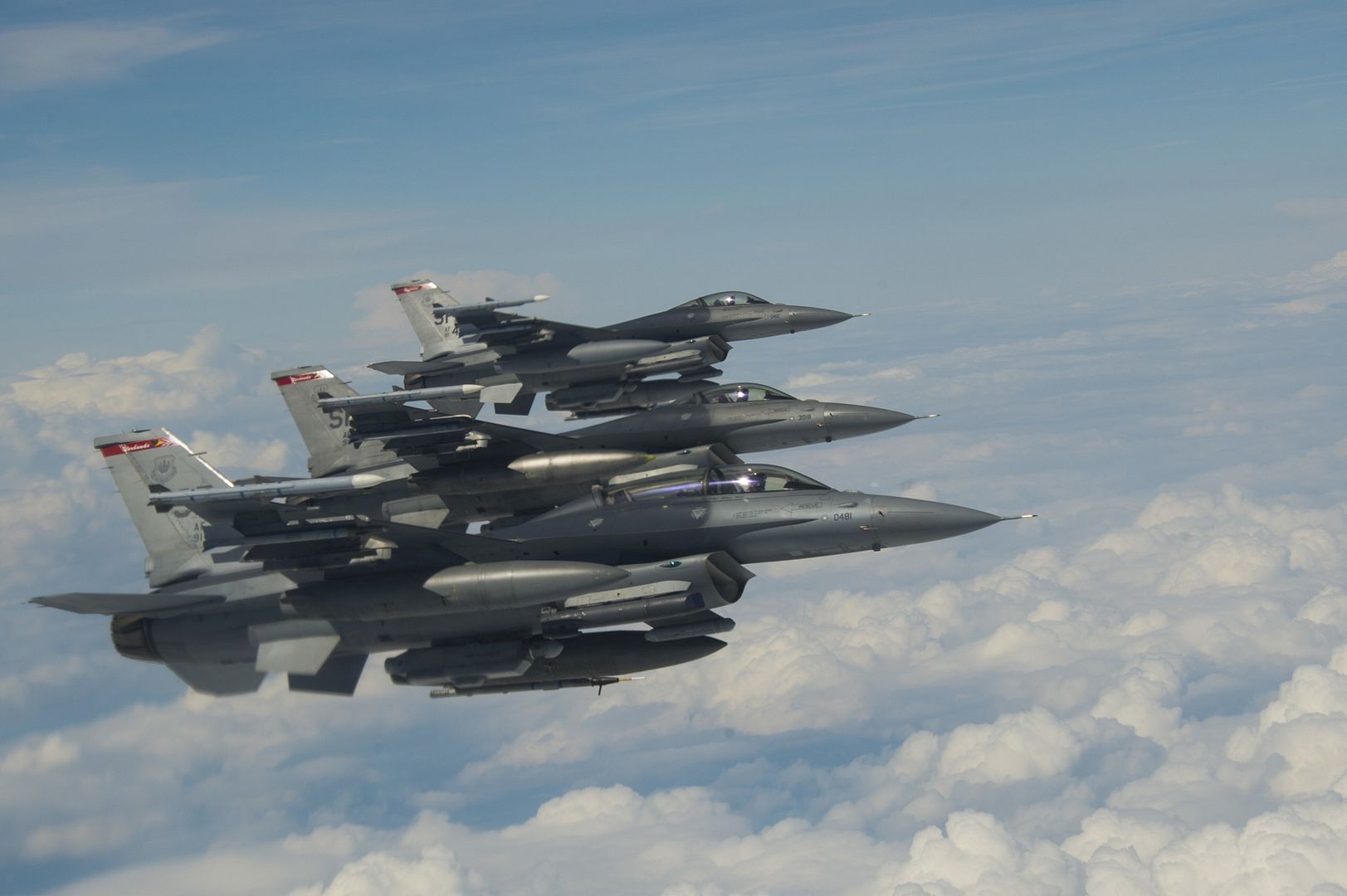
Three U.S. Air Force F-16 Fighting Falcons from the 480th Fighter Squadron fly beside an 185th Air Refueling Wing, Sioux City, Iowa KC-135 Stratotanker over Spangdahlem Air Base, Germany, May 30, 2017. For more than a week the Iowa Air National Guard has been conducting air-to-air refueling training with fighting falcons from the 52nd Fighter Wing. (U.S. Air Force photo by Senior Airman Dawn M. Weber)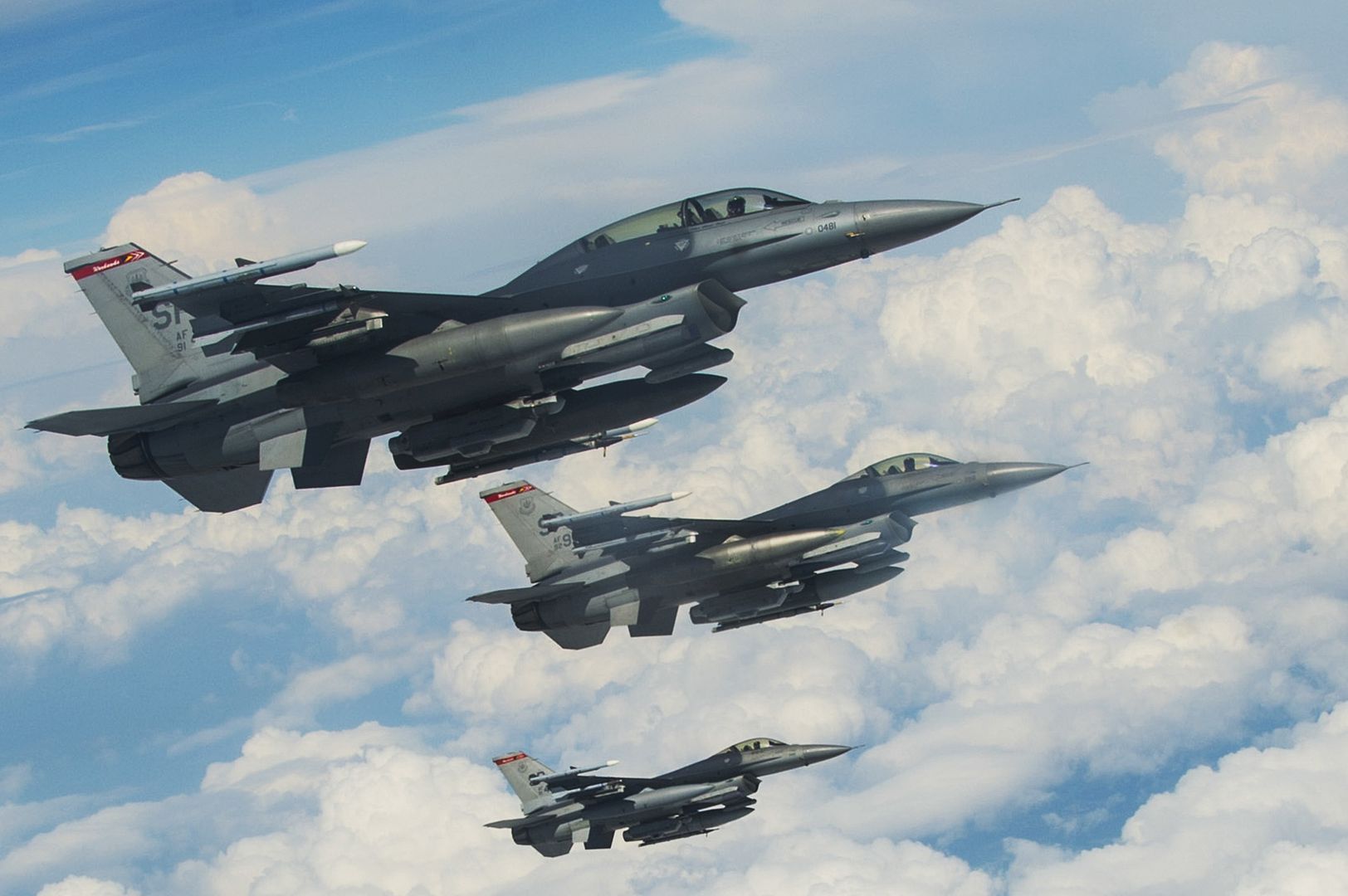
An F-15C Eagle from the 493rd Fighter Squadron, Royal Air Force Lakenheath, England, takes off at Rovaniemi Air Base, Finland, May 26, in support of Arctic Challenge 2017. Participating in multinational exercises such as ACE 17 allows the U.S. to enhance professional relationships and improve overall coordination with allies and partner militaries. (U.S. Air Force photo/Airman 1st Class Abby L. Finkel)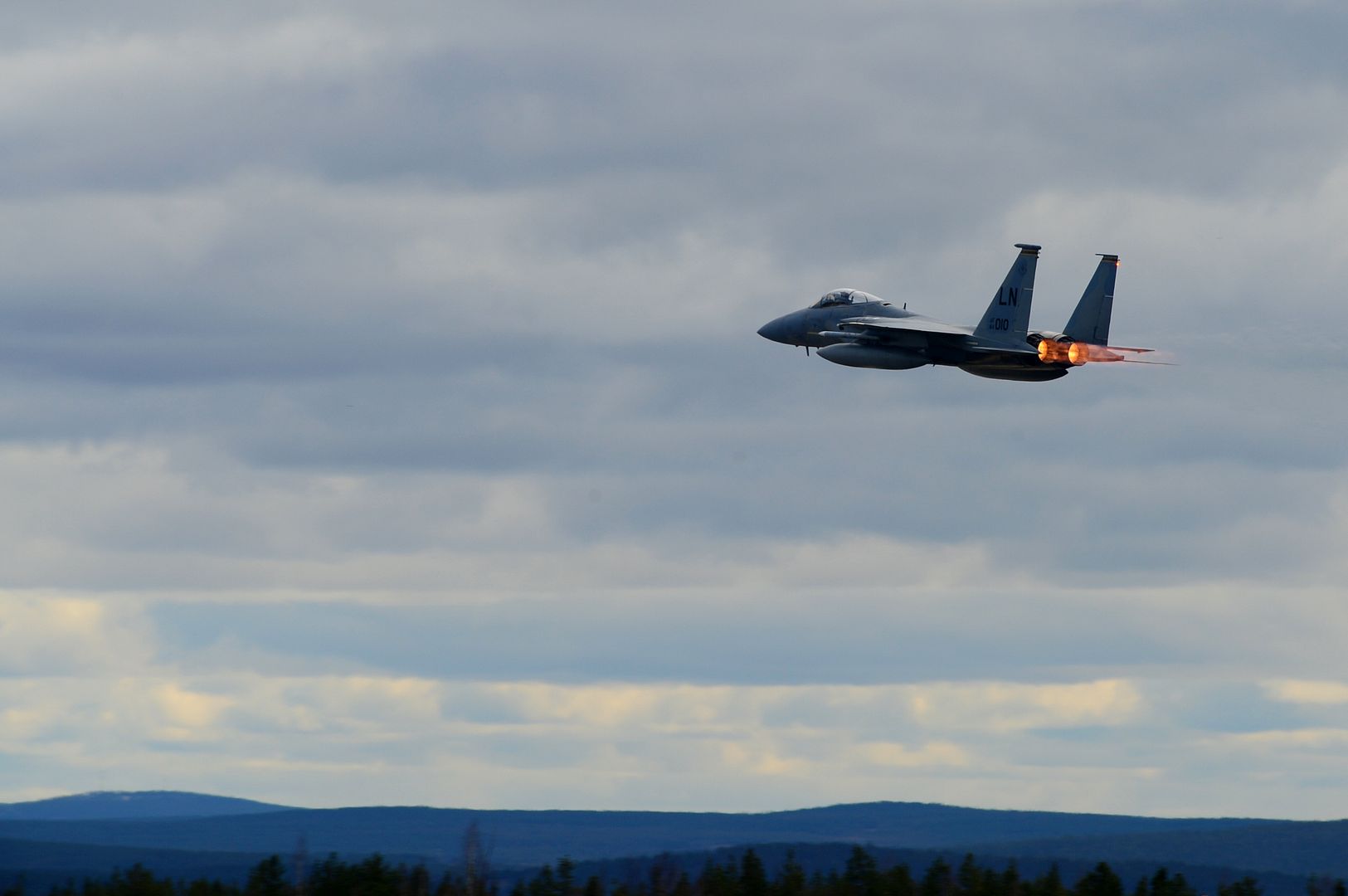
A U.S. Air Force F-16 Fighting Falcon waits to be fueled during air-to-air refueling training over western Germany, May 30, 2017. The 185th Air Refueling Wing from Sioux City, Iowa used a KC-135 Stratotanker refueling aircraft to fuel 10 52nd Fighter Wing F-16 Fighting Falcons. (U.S. Air Force photo's by Airman 1st Class Preston Cherry)
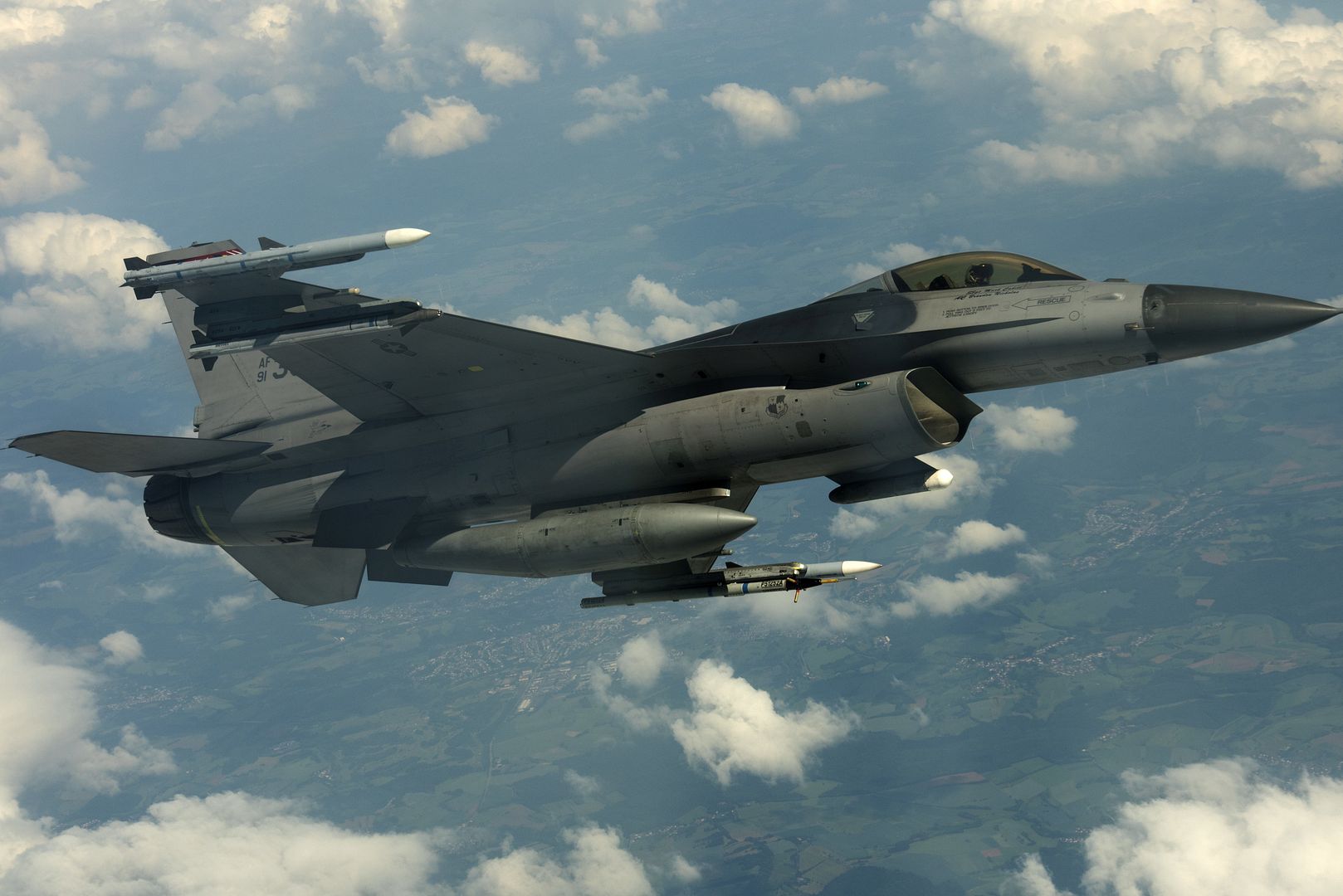
A U.S. Air Force A-10 Thunderbolt II departs after receiving fuel from a 908th Expeditionary Air Refueling Squadron KC-10 Extender during a flight in support of Operation Inherent Resolve May 31, 2017.The aircraft can loiter near battle areas for extended periods of time and operate in low ceiling and visibility conditions. The wide combat radius and short takeoff and landing capability permit operations in and out of locations near front lines. (U.S. Air Force photo by Staff Sgt. Michael Battles)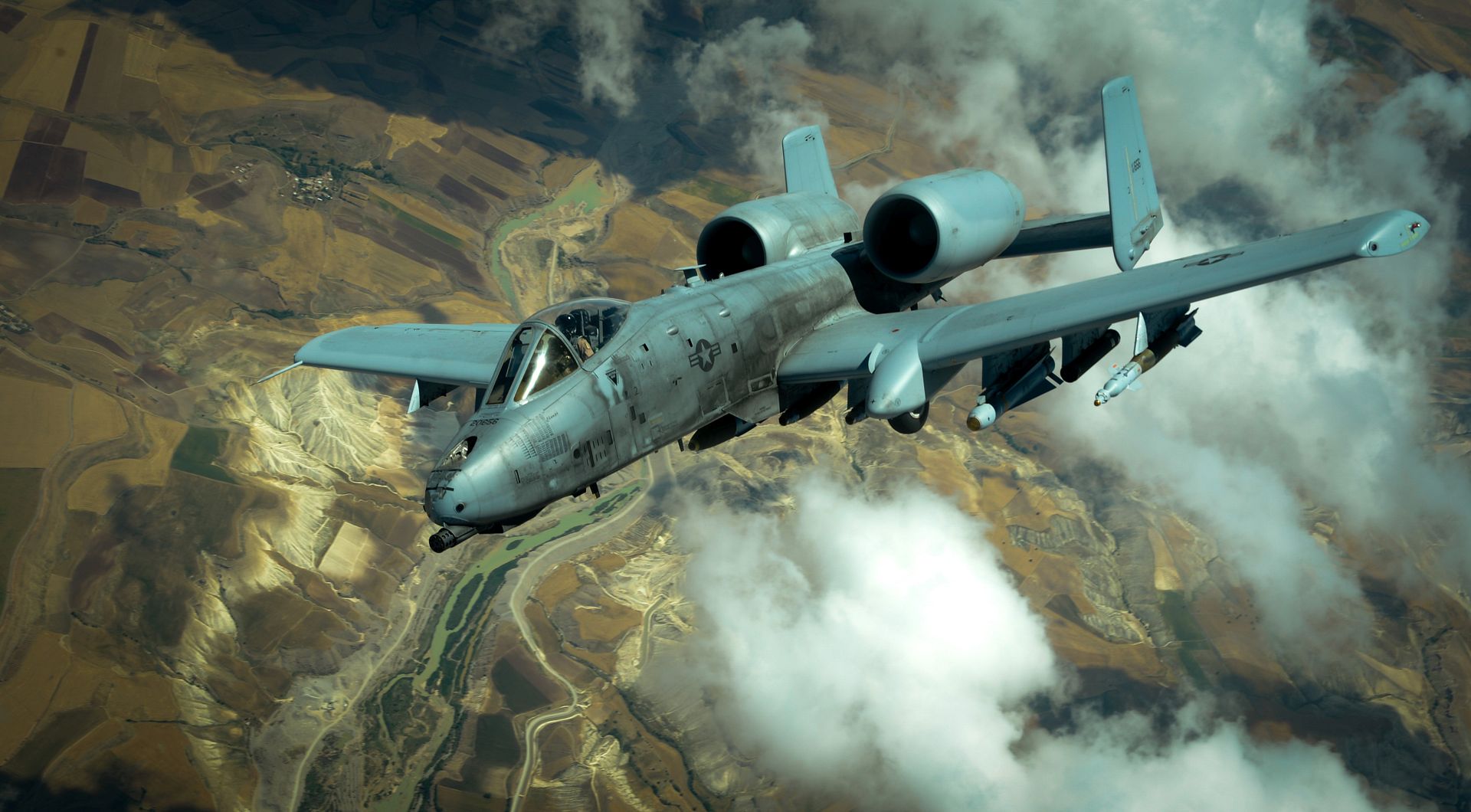
A U.S. Marine Corps F-18 Hornet departs after receiving fuel from a 908th Expeditionary Air Refueling Squadron KC-10 Extender during a flight in support of Operation Inherent Resolve May 31, 2017. The Hornet is capable across the full mission spectrum: air superiority, fighter escort, reconnaissance, aerial refueling, close air support, air defense suppression and day and night precision strike. (U.S. Air Force photo by Staff Sgt. Michael Battles)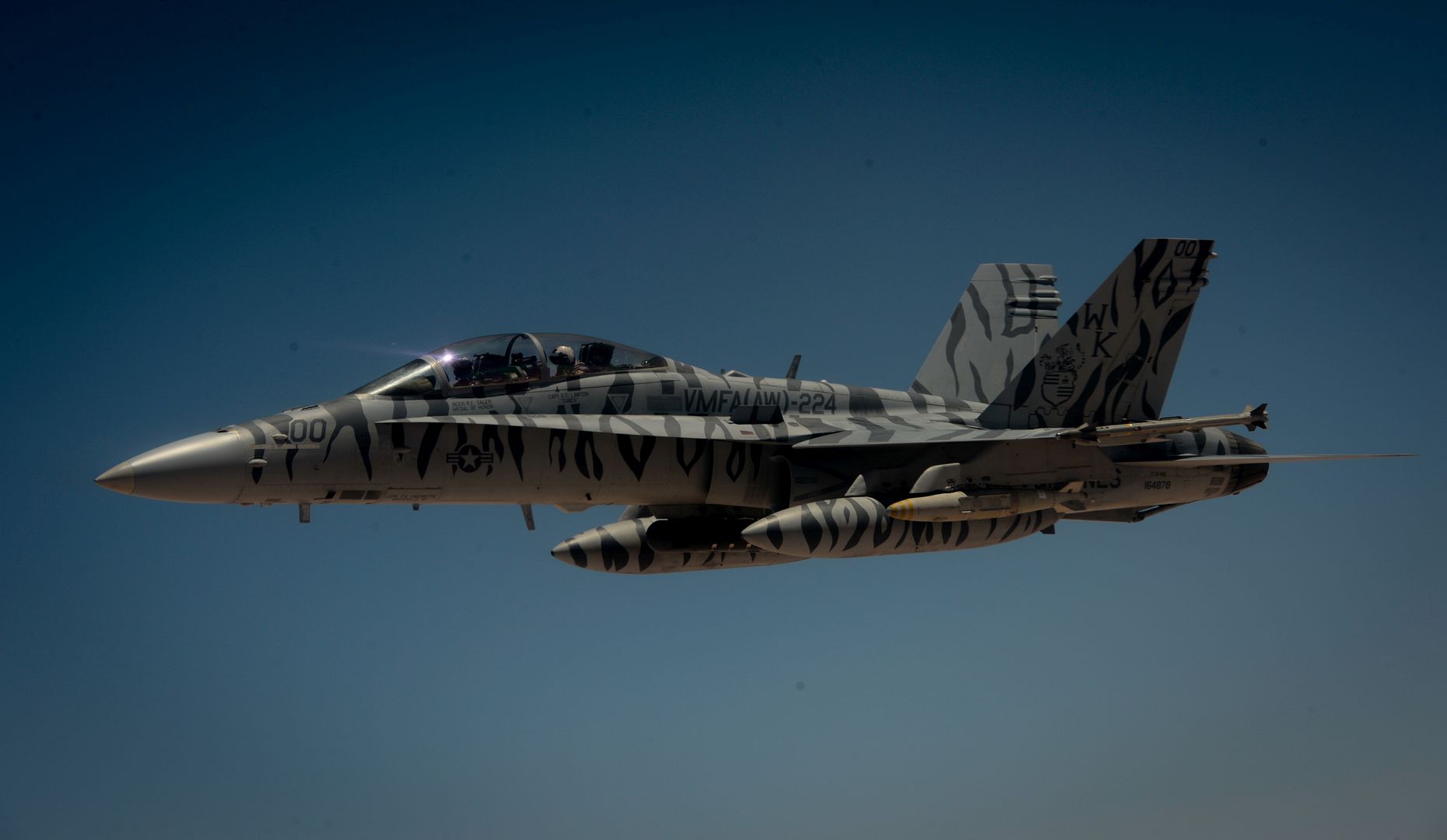
HUNTSVILLE, Ala. ? May 30, 2017 ? During today?s flight test of the Ground-based Midcourse Defense (GMD) system, Northrop Grumman Corporation?s (NYSE: NOC) advanced battle management and launch control capabilities successfully guided the kill vehicle for the first intercept of an intercontinental ballistic missile (ICBM) range target.
?The ICBM target represents a growing threat that is much more sophisticated and challenging for our fire control capabilities,? said Dan Verwiel, vice president and general manager, missile defense and protective systems, Northrop Grumman. ?While our consistent performance provides greater confidence in the ballistic missile defense system (BMDS), we continue to look for every opportunity to insert innovative, affordable solutions to enhance the BMDS.?
During the GMD flight test, known as FTG-15 and conducted by the U.S. Missile Defense Agency and the Boeing/Northrop Grumman team, a ground-based interceptor was launched from Vandenberg Air Force Base, California, against a target missile threat fired from a launch complex at Ronald Reagan Ballistic Missile Defense Test Site in the Marshall Islands.
Northrop Grumman?s GMD fire control system integrated data from the space-based infrared sensor with data from a forward-deployed AN/TPY-2 radar and the sea-based X-band radar to help identify, track, engage and ultimately destroy the target. The company?s in-flight interceptor communications system provided target-track updates to the kill vehicle to ensure it had the most accurate data available prior to engagement. In addition, Northrop Grumman?s command launch equipment effectively launched the interceptor.
?Our fire control products demonstrated their reliability for engaging a threat and our launch equipment performed as planned in interfacing with a new interceptor design in this test,? said Theresa Moxley, deputy program manager for the Boeing/Northrop Grumman GMD team. ?This was a successful flight test of our systems and products as well as an opportunity for maturing future capabilities ahead of schedule and with more affordability.?
Northrop Grumman is a strategic partner of The Boeing Company for the GMD program that provides the nation?s only defense against long-range ballistic missiles. Northrop Grumman is responsible for designing, deploying and maintaining the fire control capability for GMD, which includes the fire control system, in-flight interceptor communications system data terminal, communications network equipment and system managers, and command launch equipment.
Over the course of the GMD program, these systems and products have met every objective for all 25 system flight and 21 ground tests. Northrop Grumman has also delivered and installed all of the more than 50 contracted products on time, every time and, since 2001, under budgeted costs.
Northrop Grumman personnel in Huntsville and Colorado Springs, Colorado, develop the GMD products. The hardware for the in-flight communication system is provided by Harris Corp., a major teammate in Melbourne, Florida. Approximately 600 people are employed on this project at these three locations and the deployment sites.
Northrop Grumman also supported the test through its prime contractor role at the Missile Defense Integration and Operations Center (MDIOC) and participation in the Lockheed Martin-led Missile Defense National Team providing software development and test execution in the Command and Control Battle Management and Communication (C2BMC) system. Company personnel at the MDIOC provided engineering, flight test execution, and communications expertise that helped the Mission Control Center Facility and the C2BMC System Test Operational Center monitor and assess the progress and success of the GMD flight test. In addition, C2BMC provided communication connectivity for the external sensors to the GMD fire control system and situational awareness for the test mission.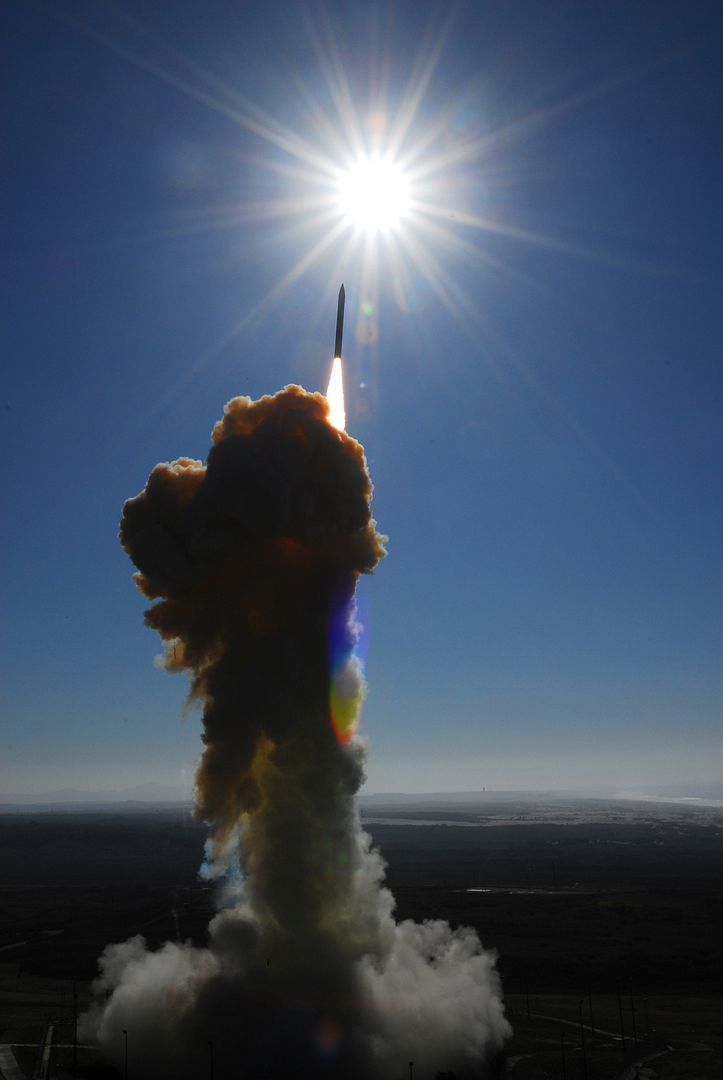
Post a reply
- Go to Previous topic
- Go to Next topic
- Go to Welcome
- Go to Introduce Yourself
- Go to General Discussion
- Go to Screenshots, Images and Videos
- Go to Off topic
- Go to Works in Progress
- Go to Skinning Tips / Tutorials
- Go to Skin Requests
- Go to IJAAF Library
- Go to Luftwaffe Library
- Go to RAF Library
- Go to USAAF / USN Library
- Go to Misc Library
- Go to The Ops Room
- Go to Made in Germany
- Go to Campaigns and Missions
- Go to Works in Progress
- Go to Juri's Air-Raid Shelter
- Go to Campaigns and Missions
- Go to Works in Progress
- Go to Skinpacks
- Go to External Projects Discussion
- Go to Books & Resources
